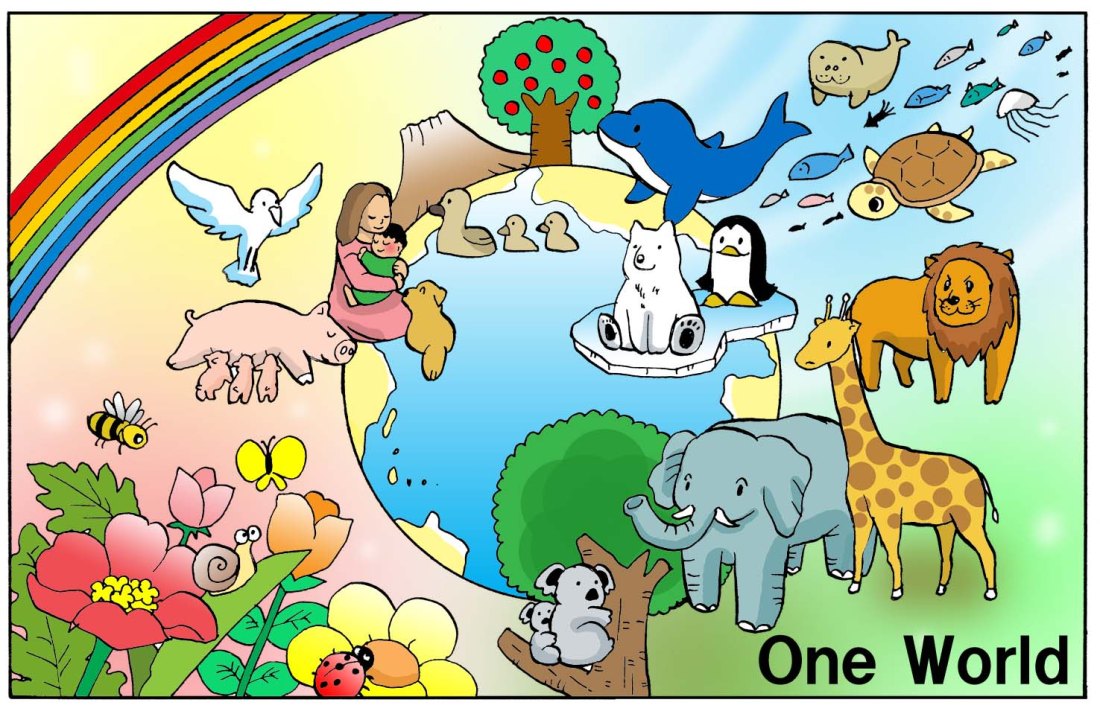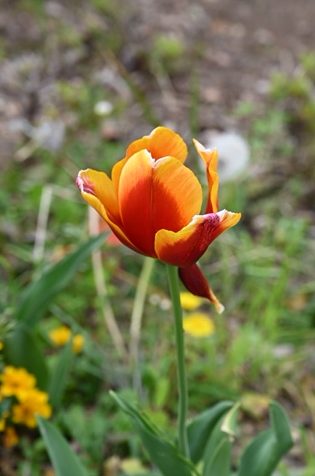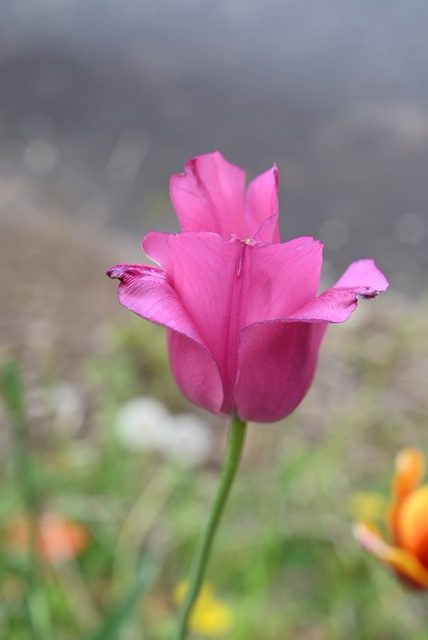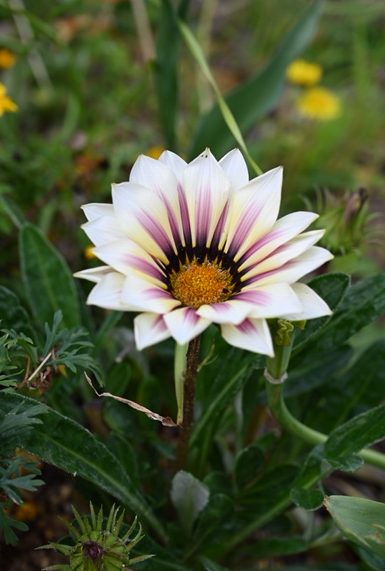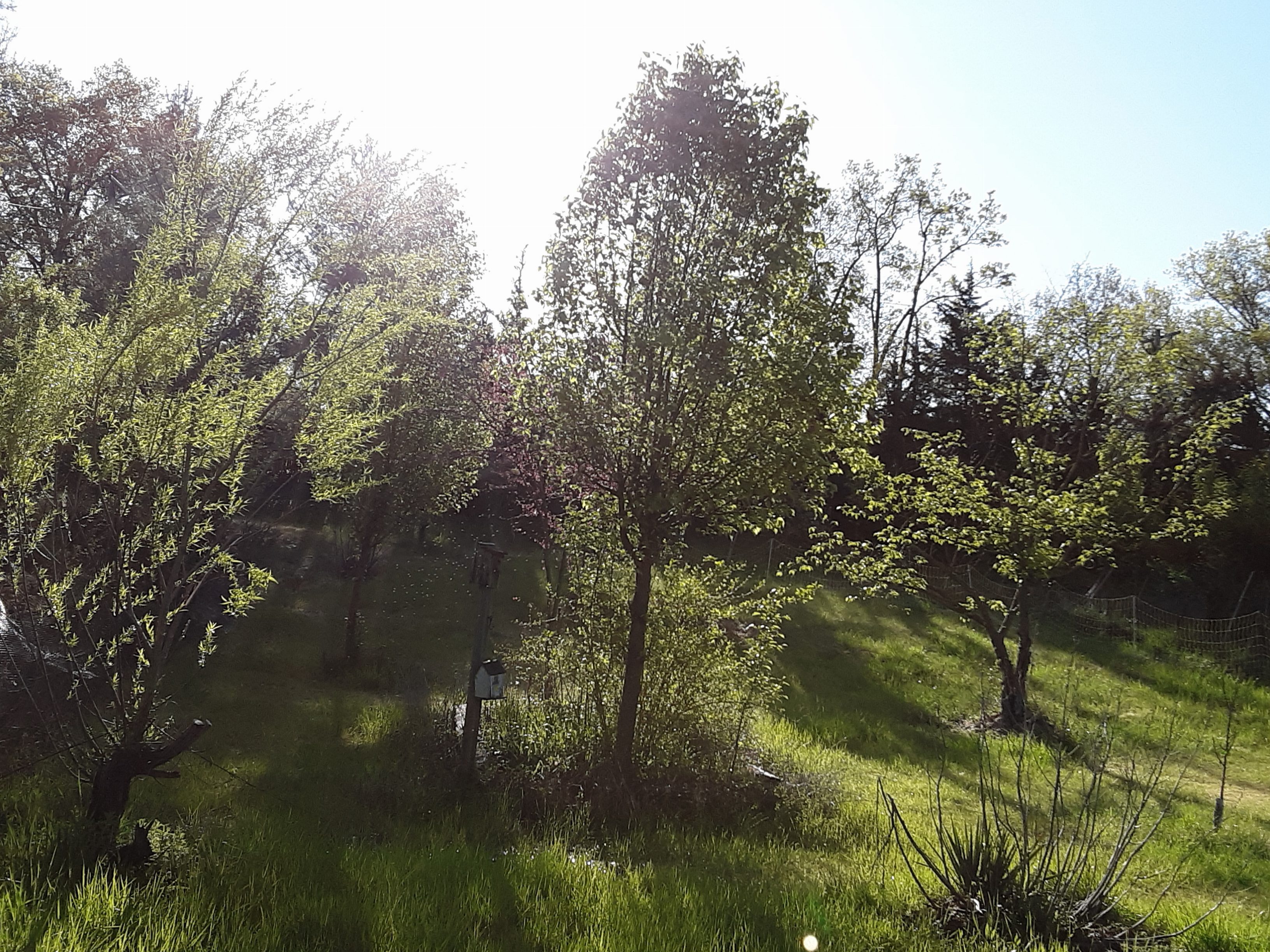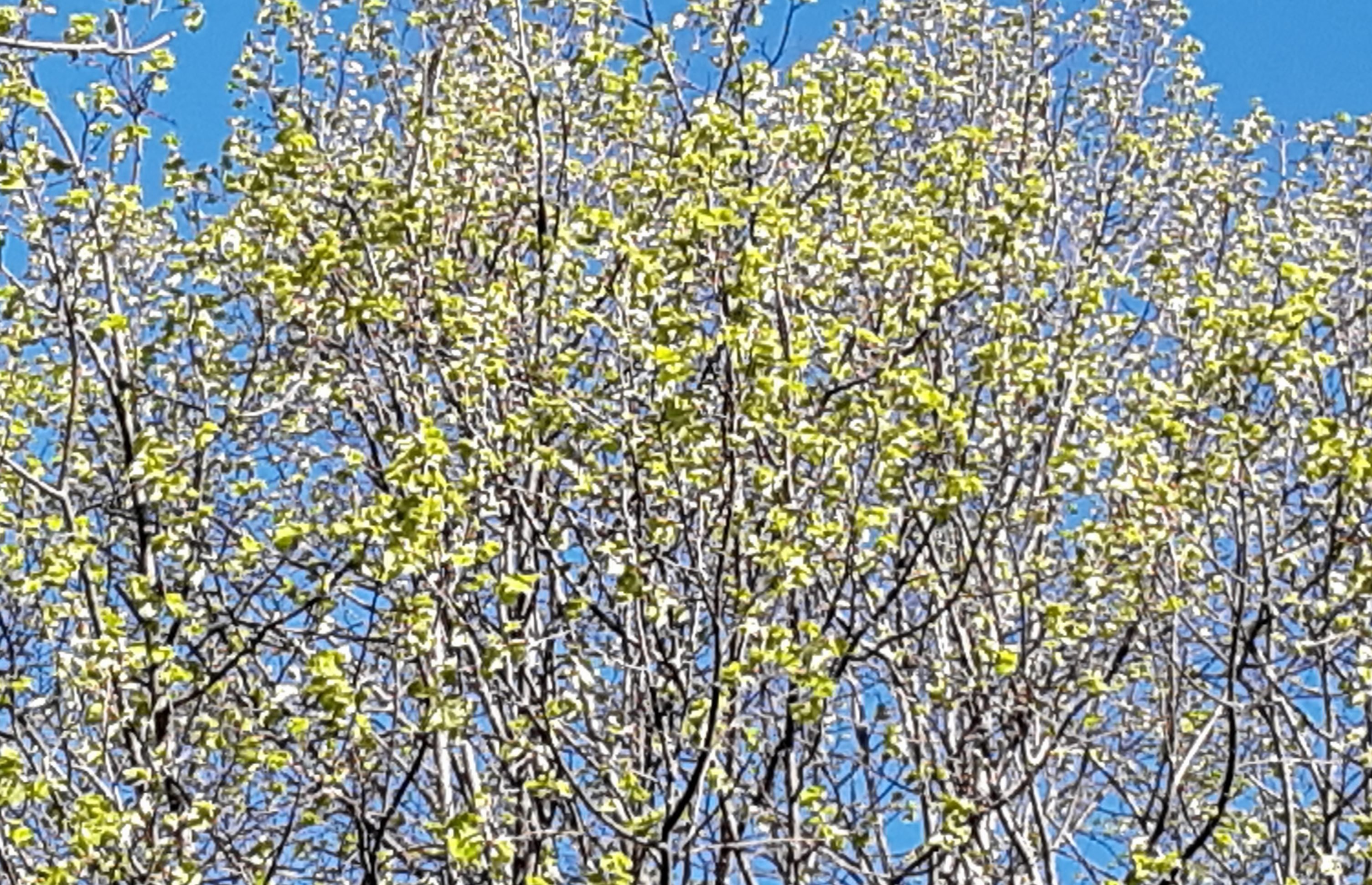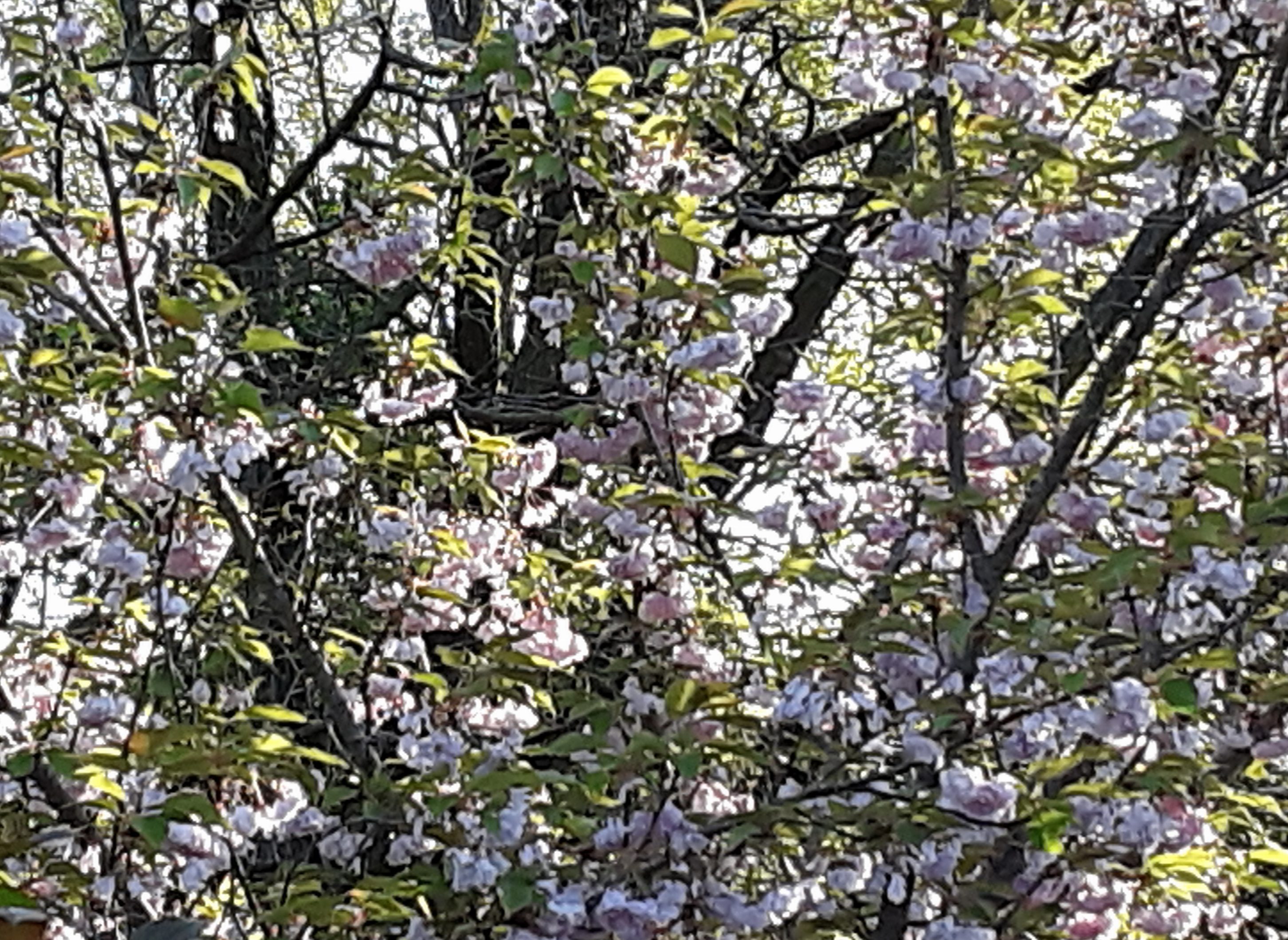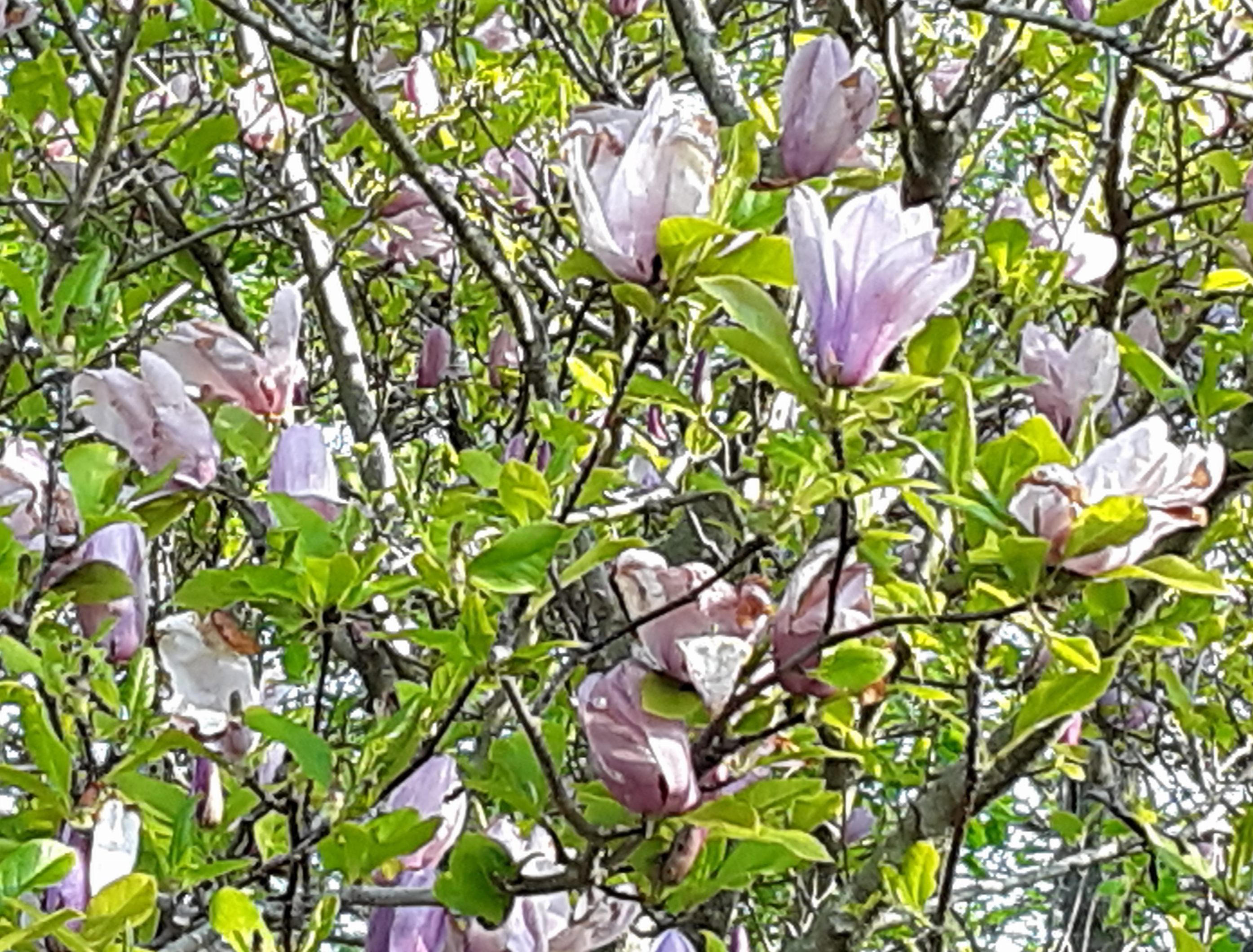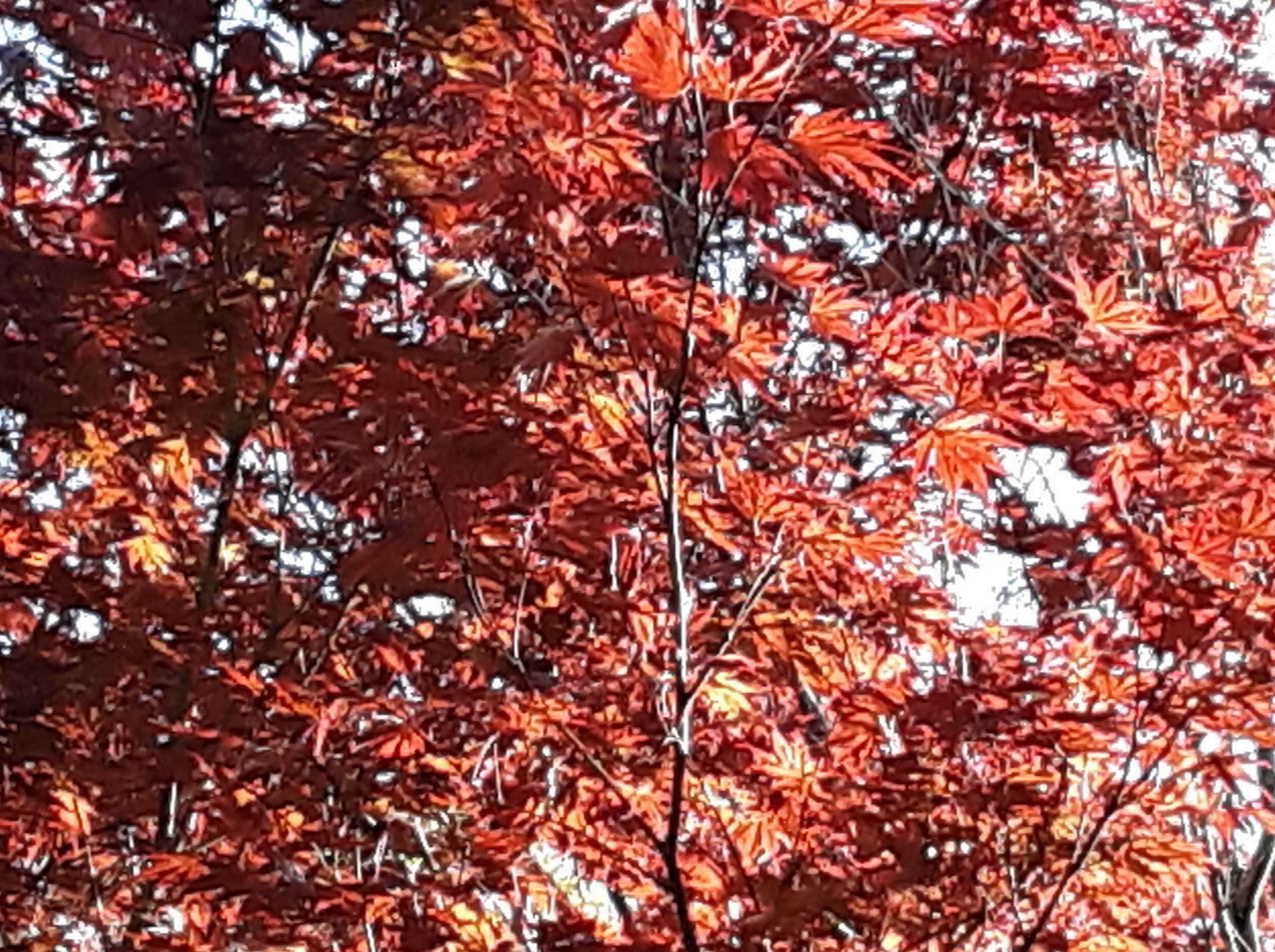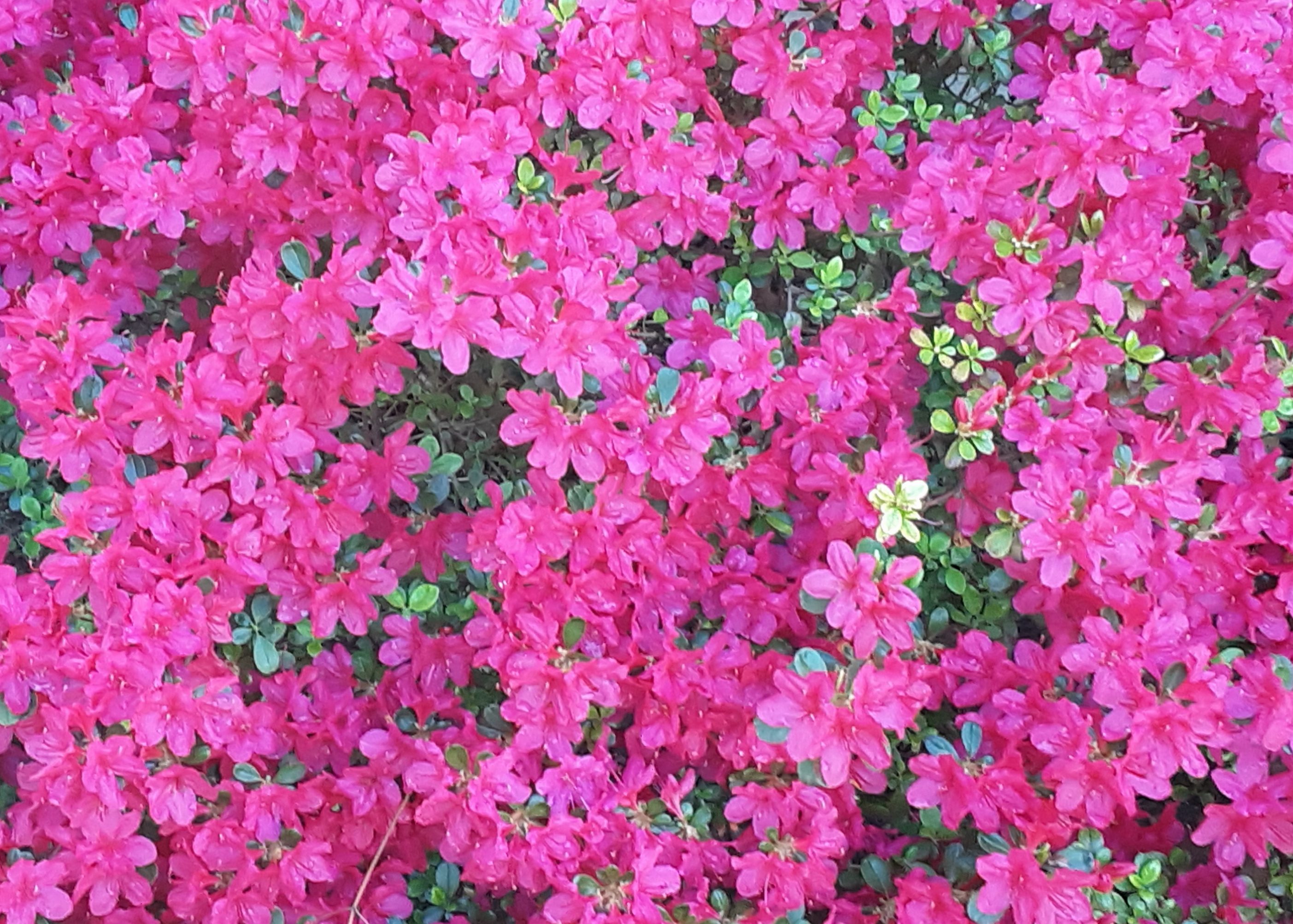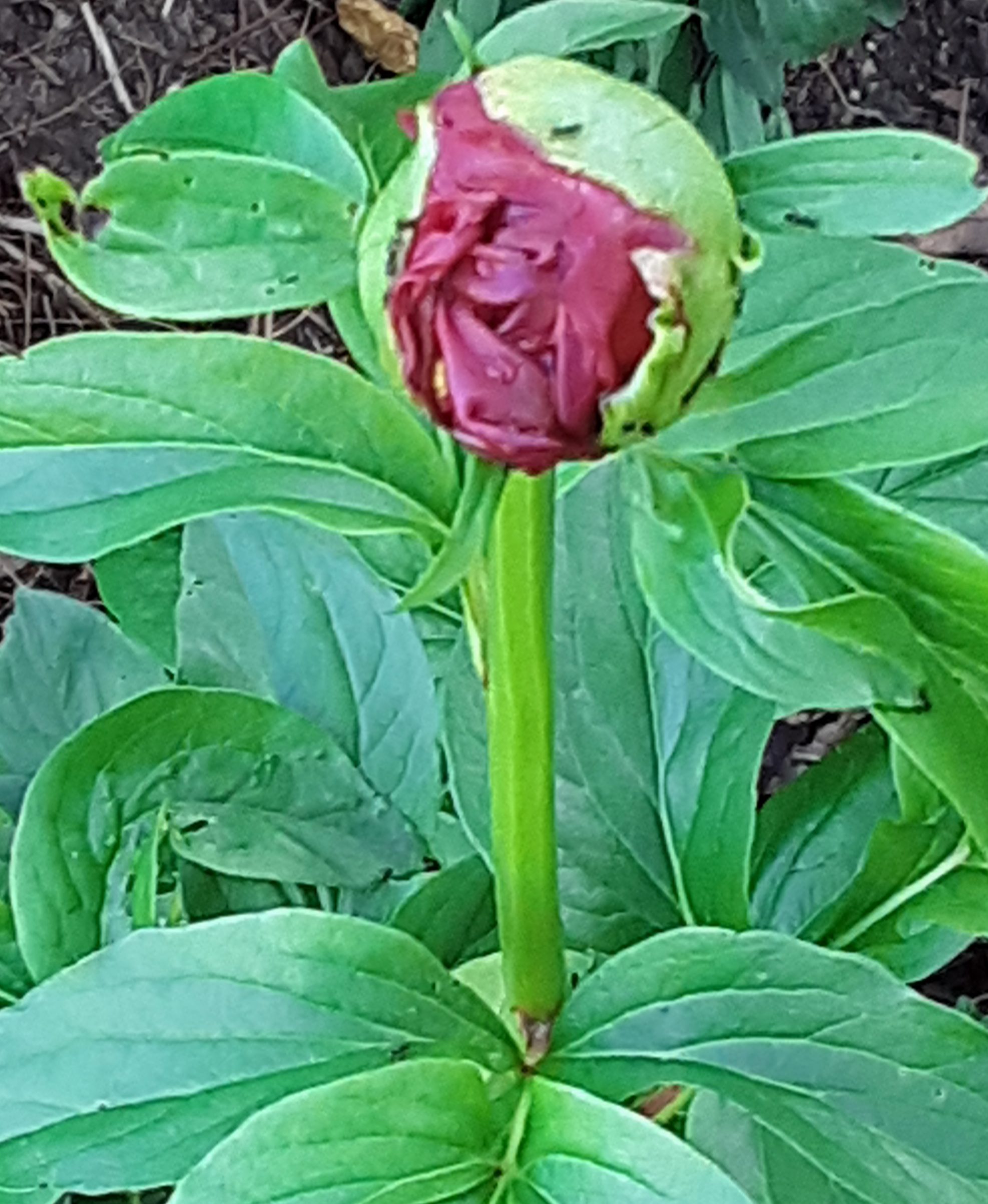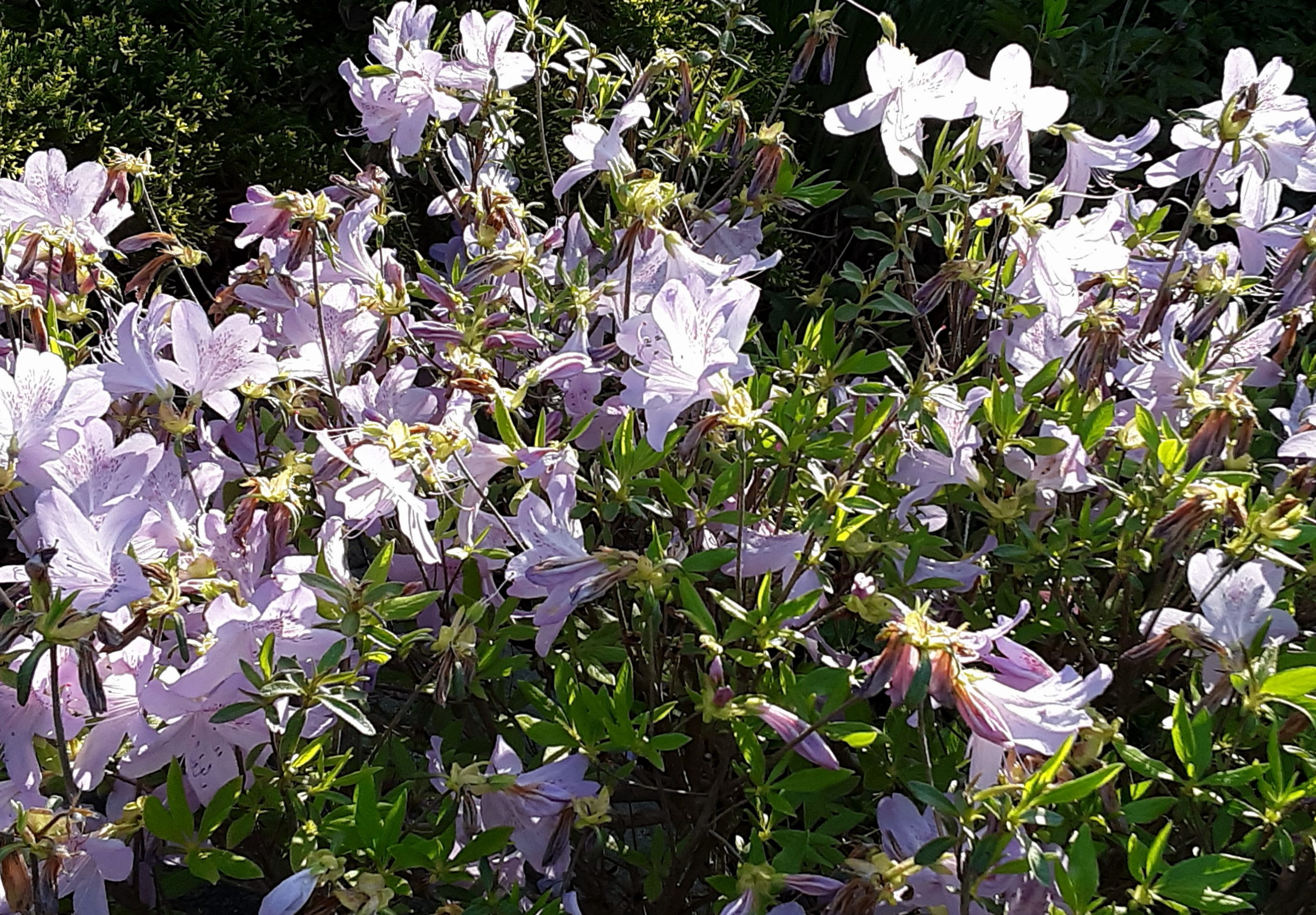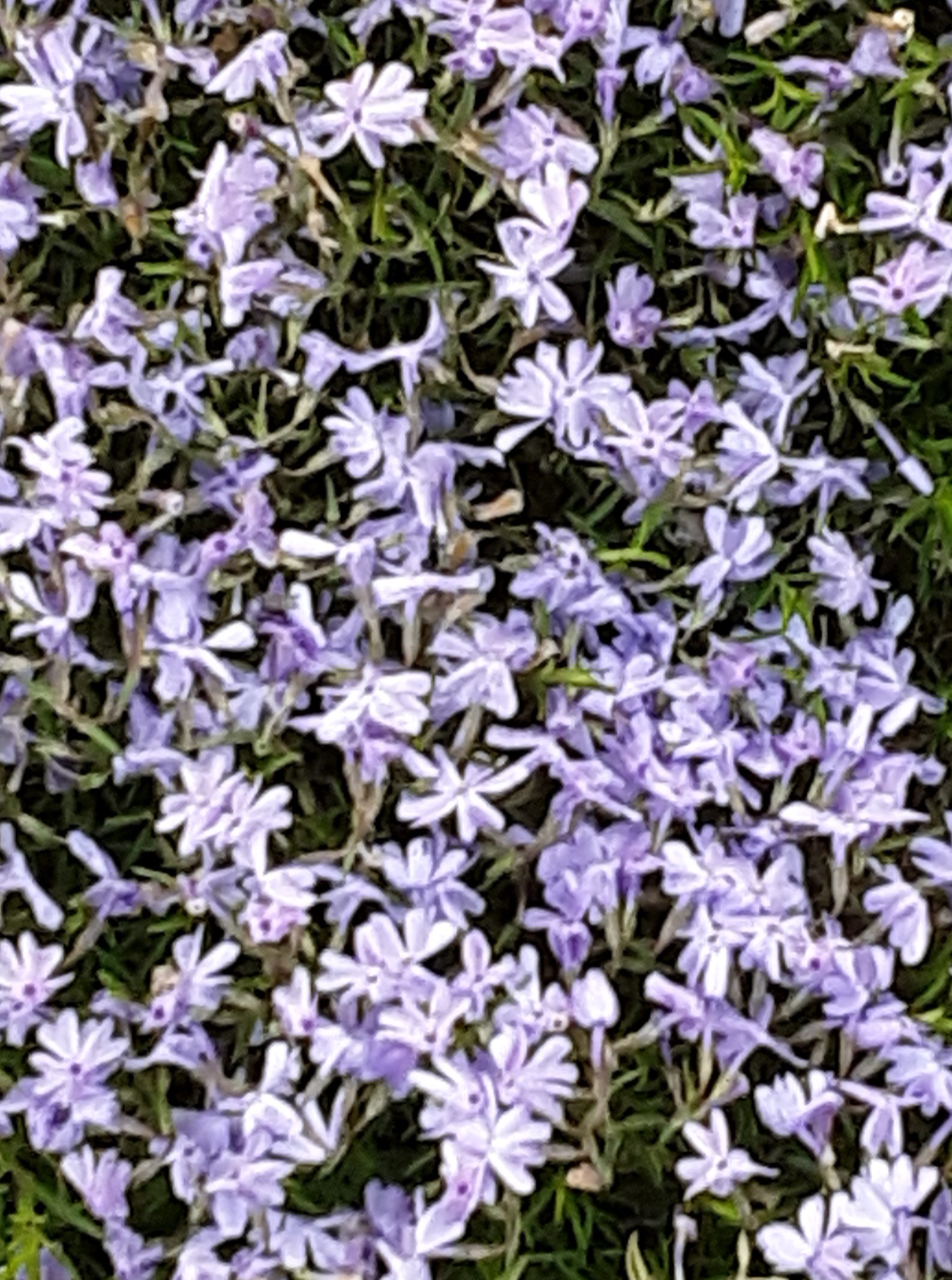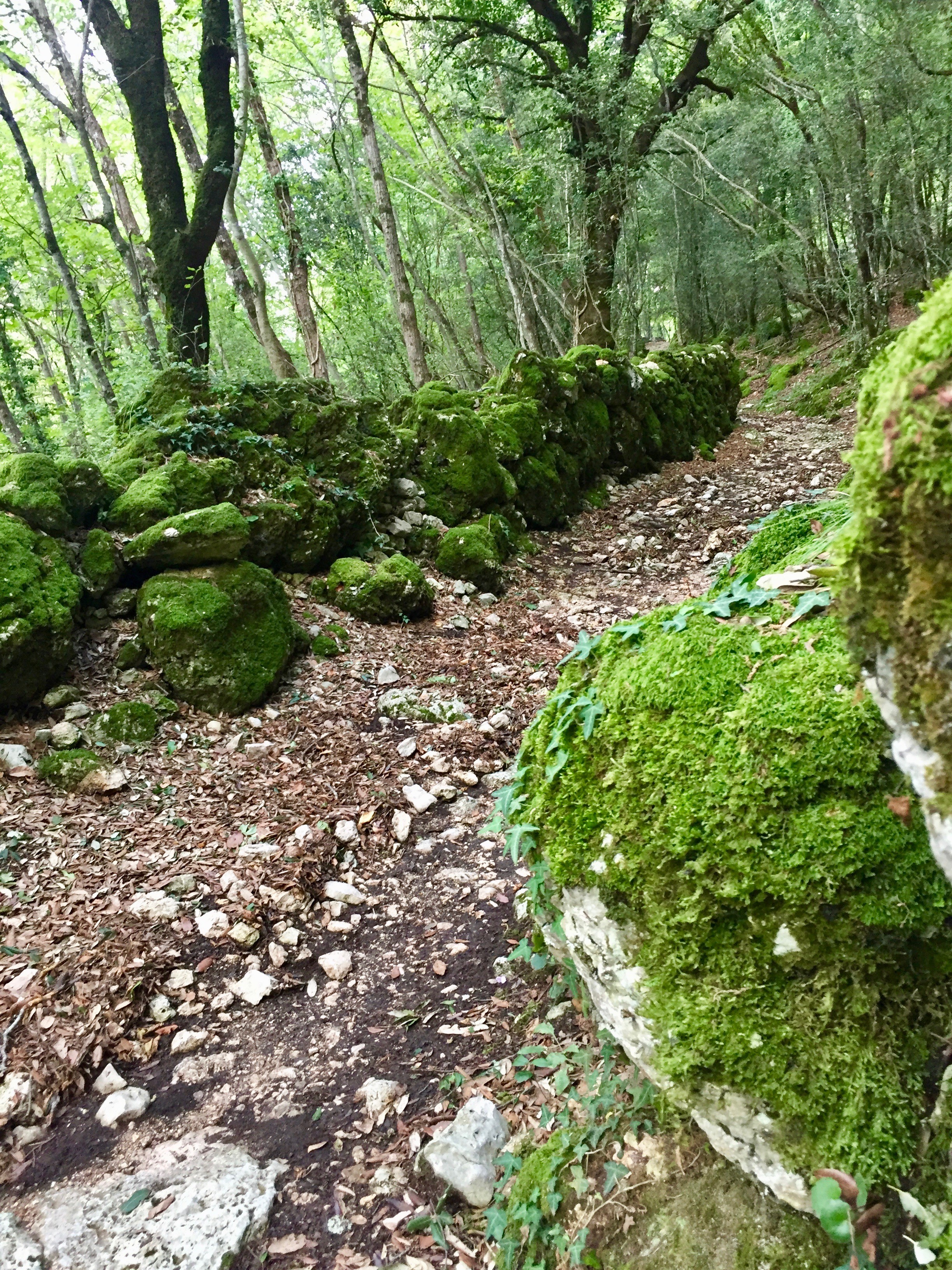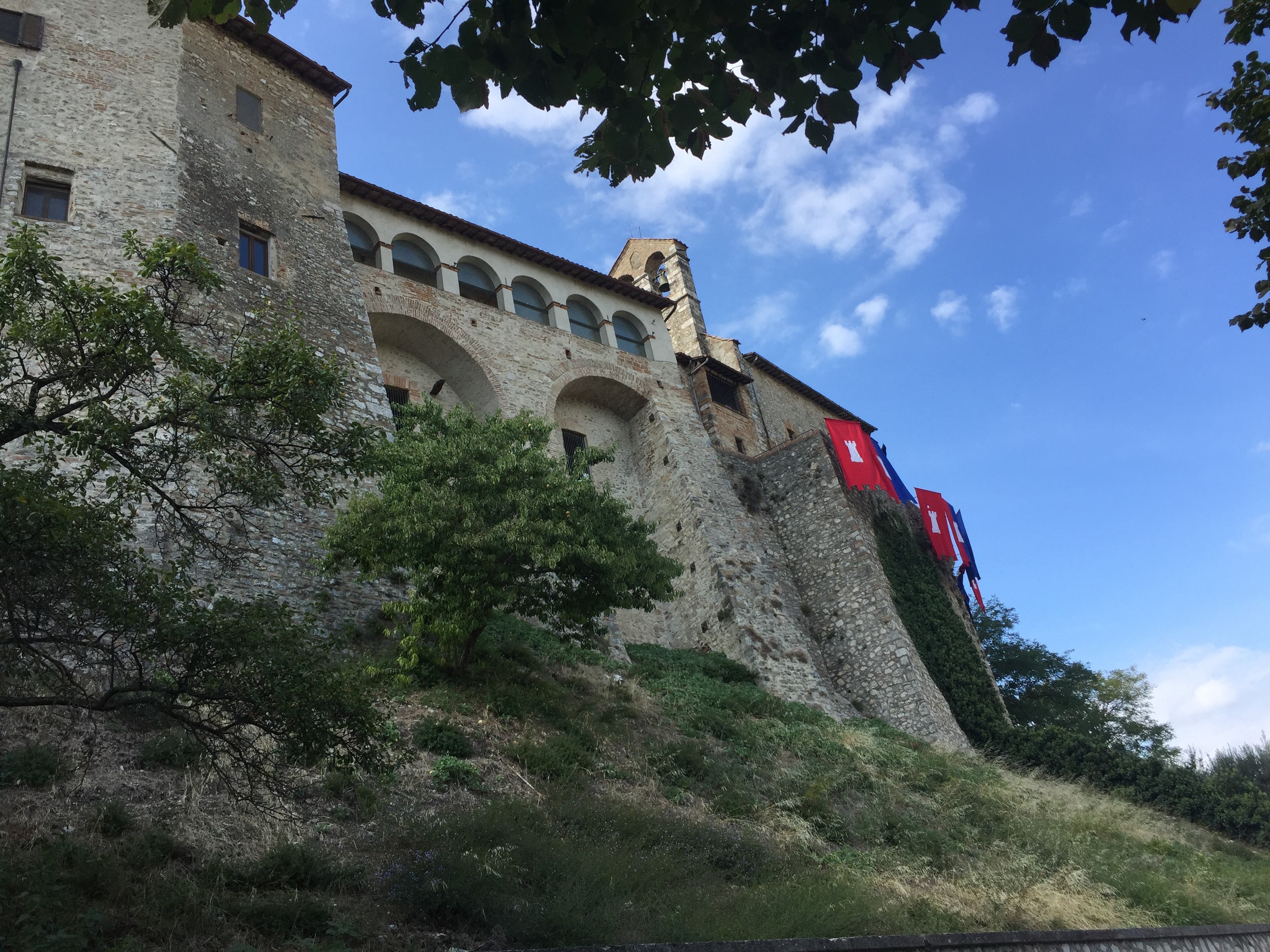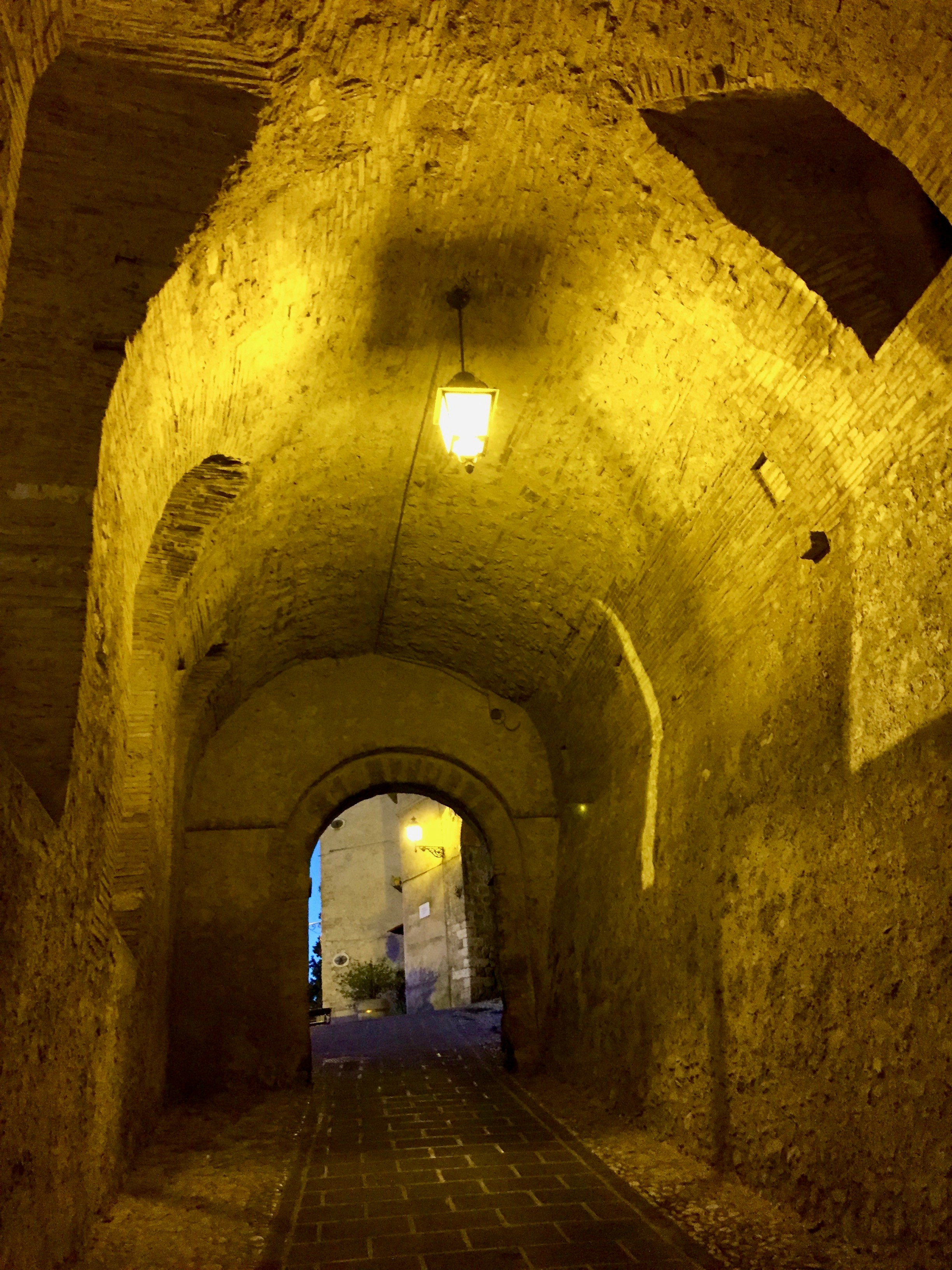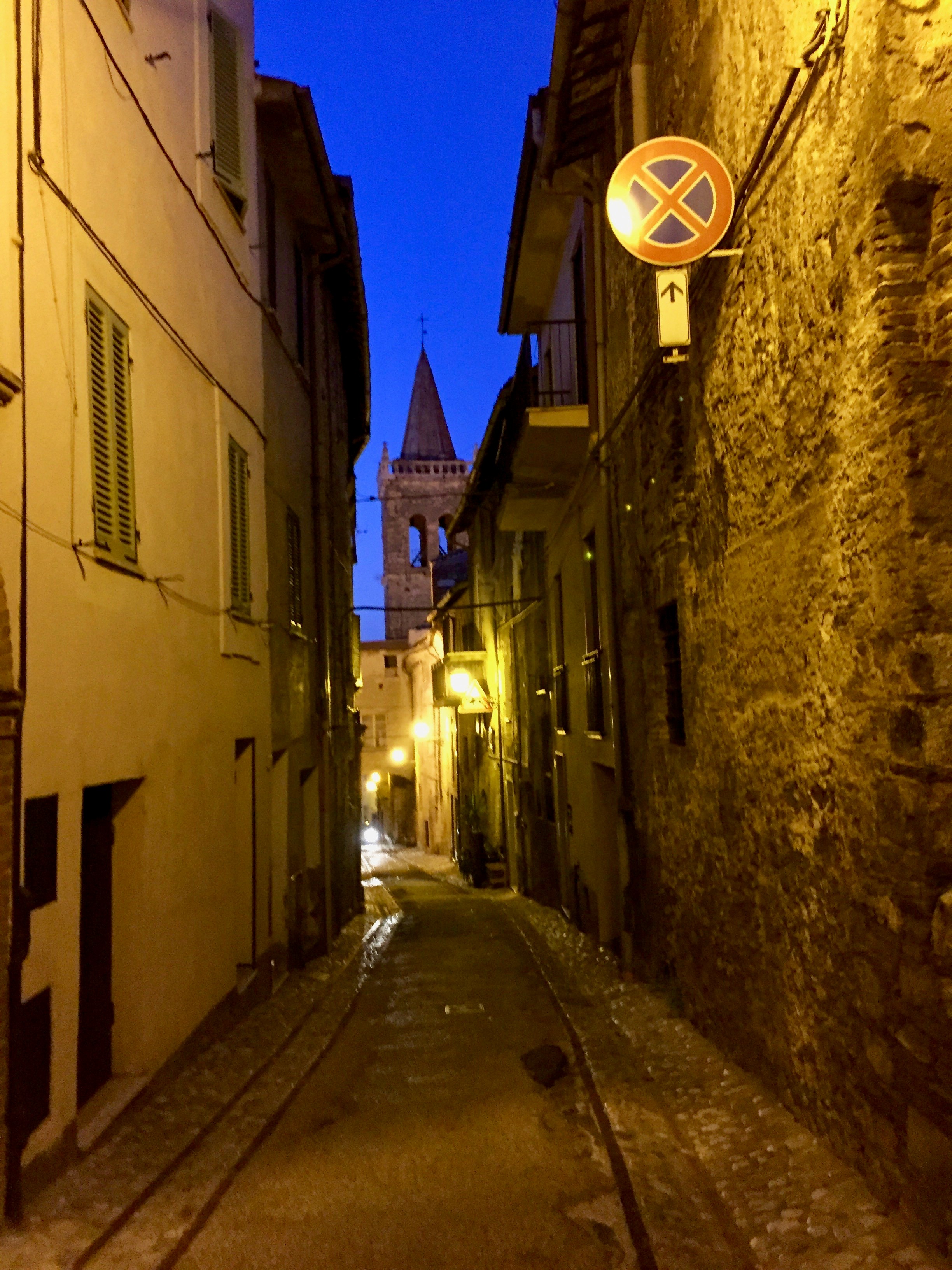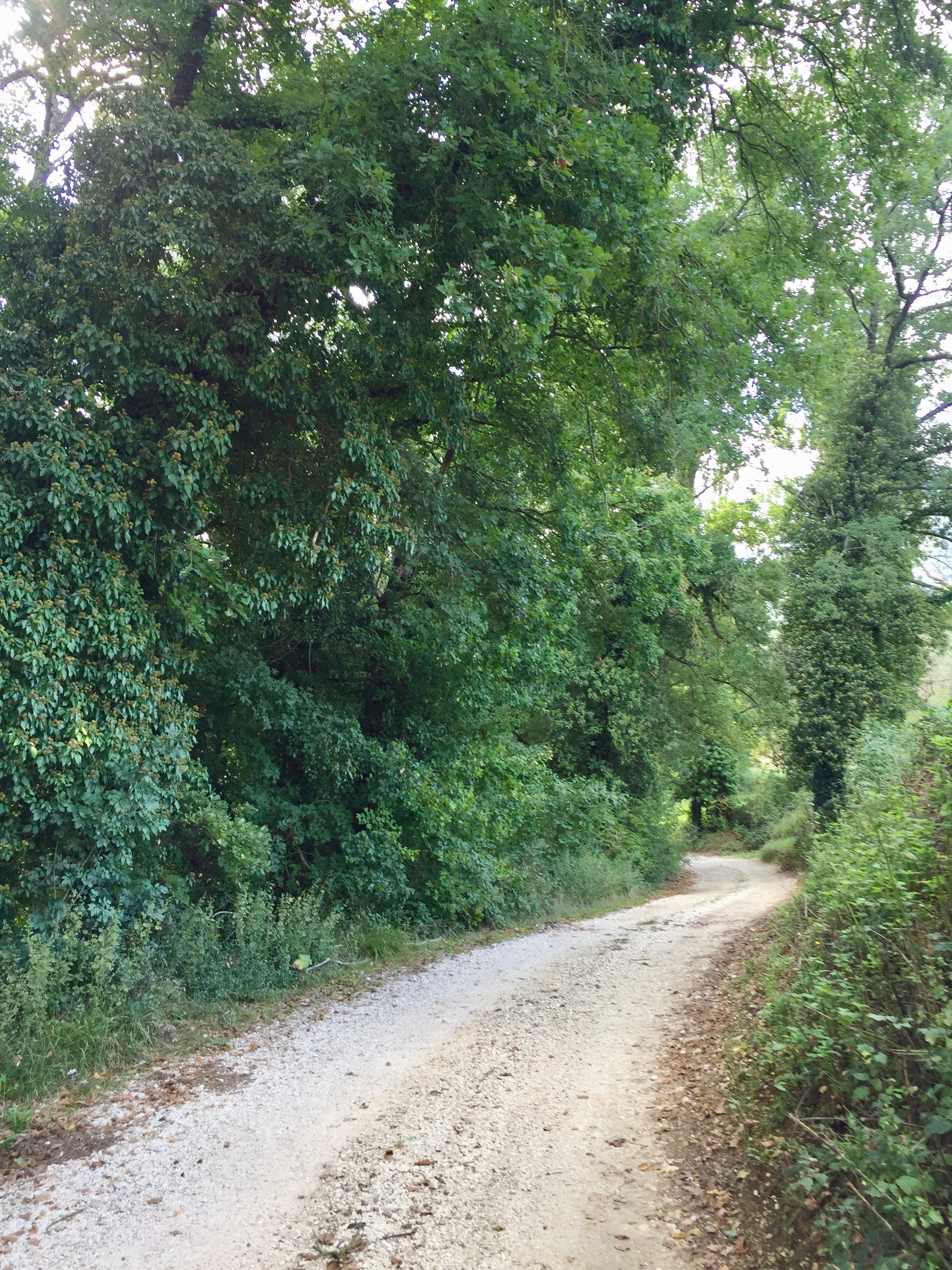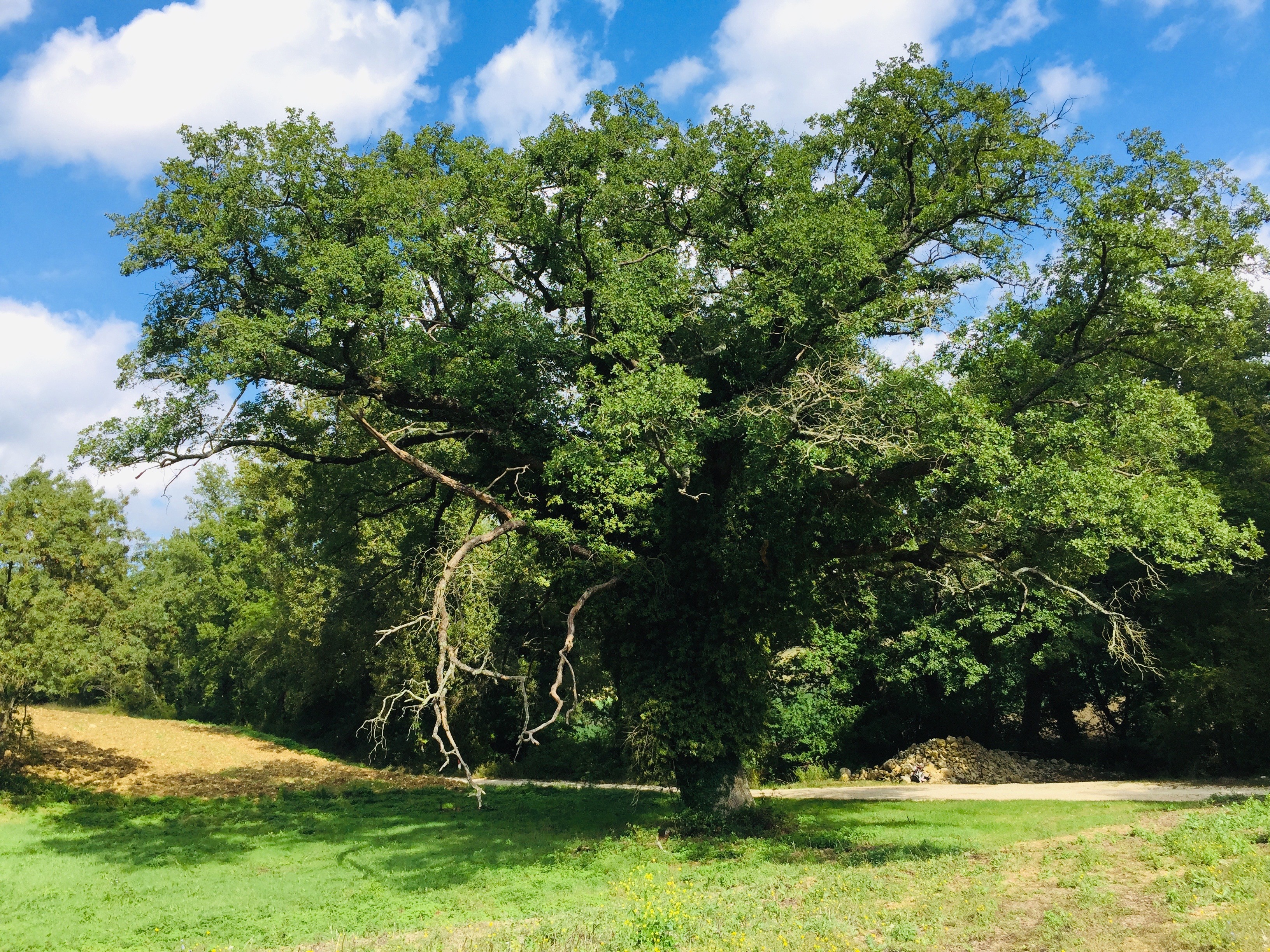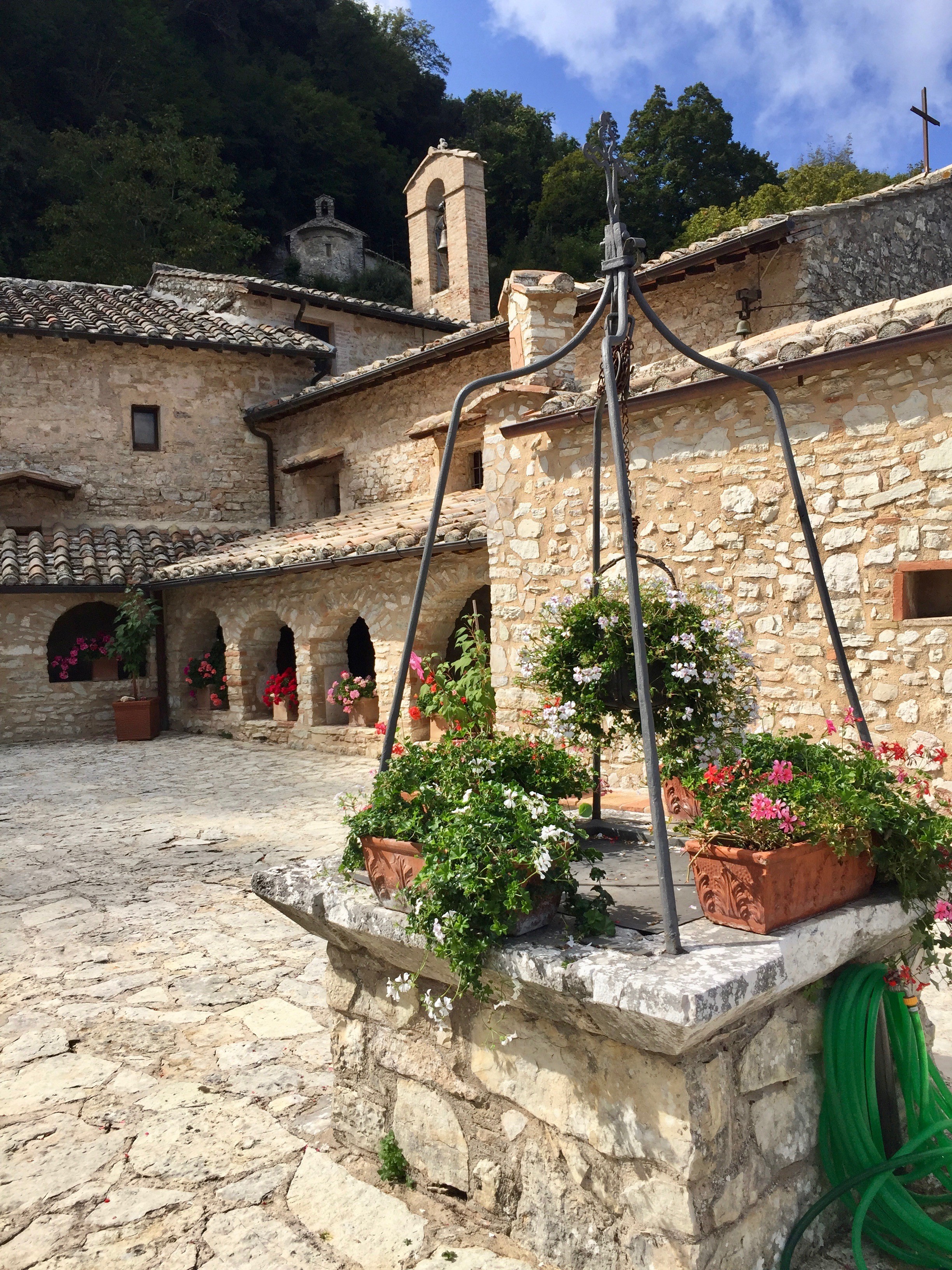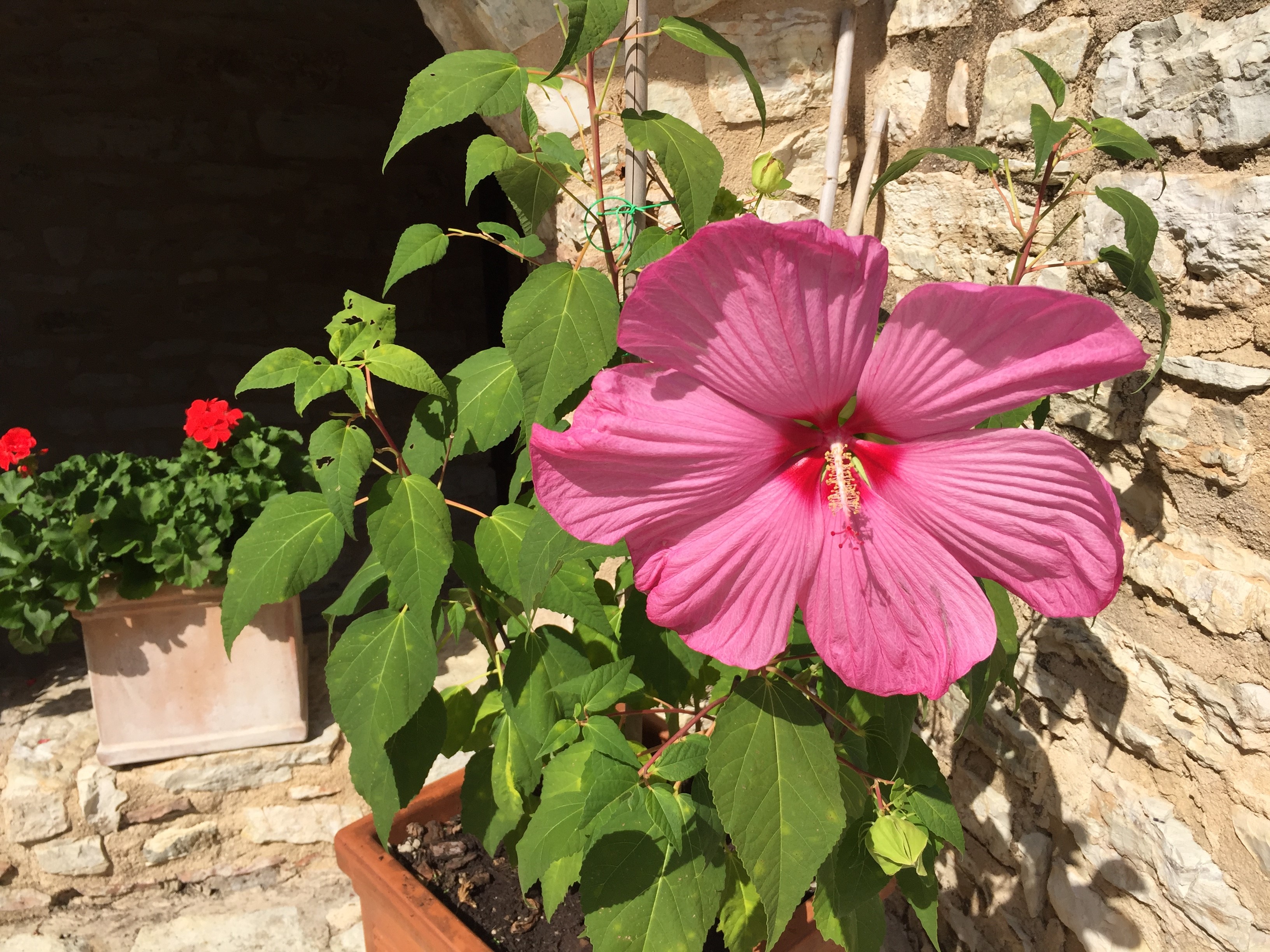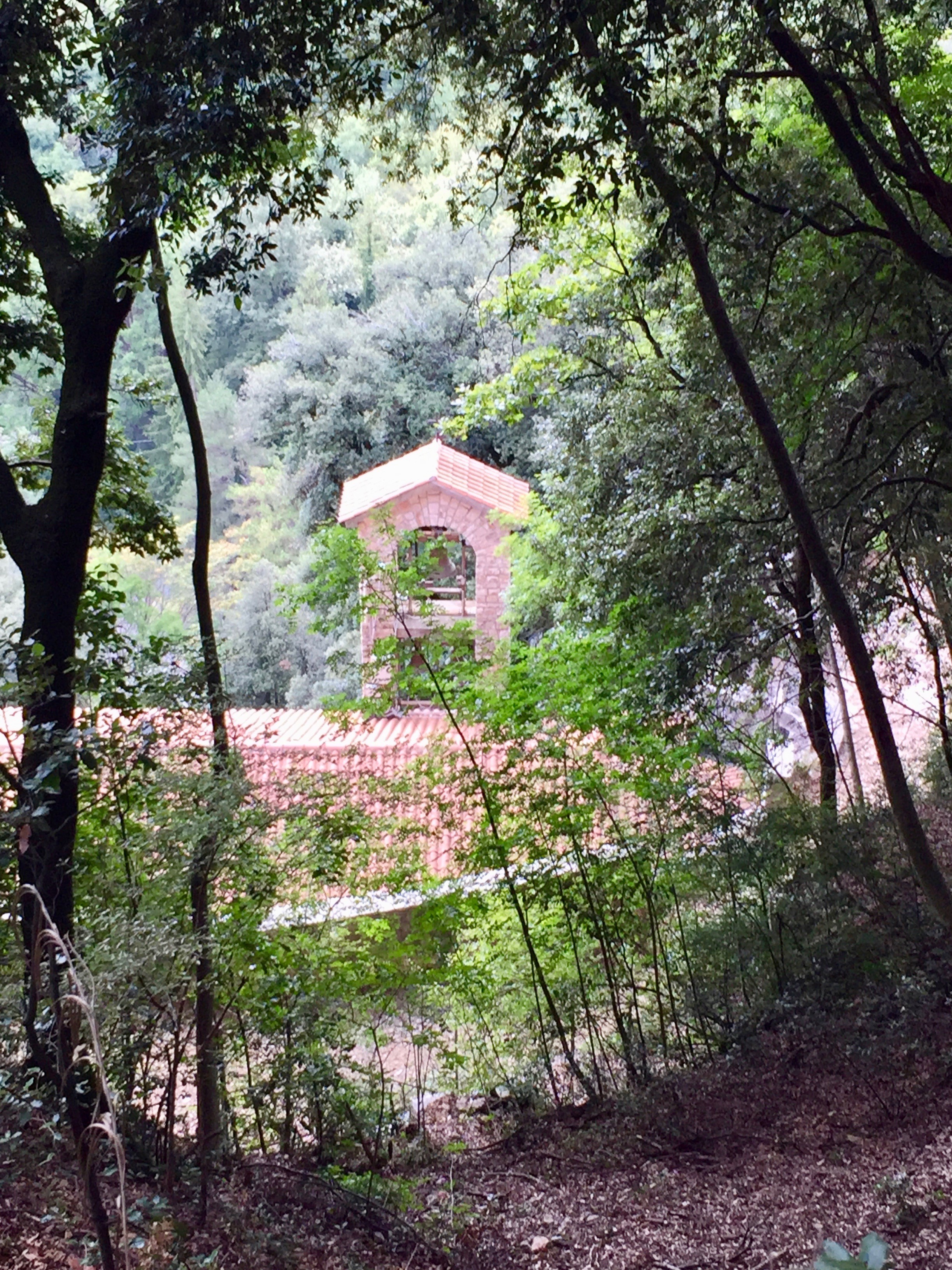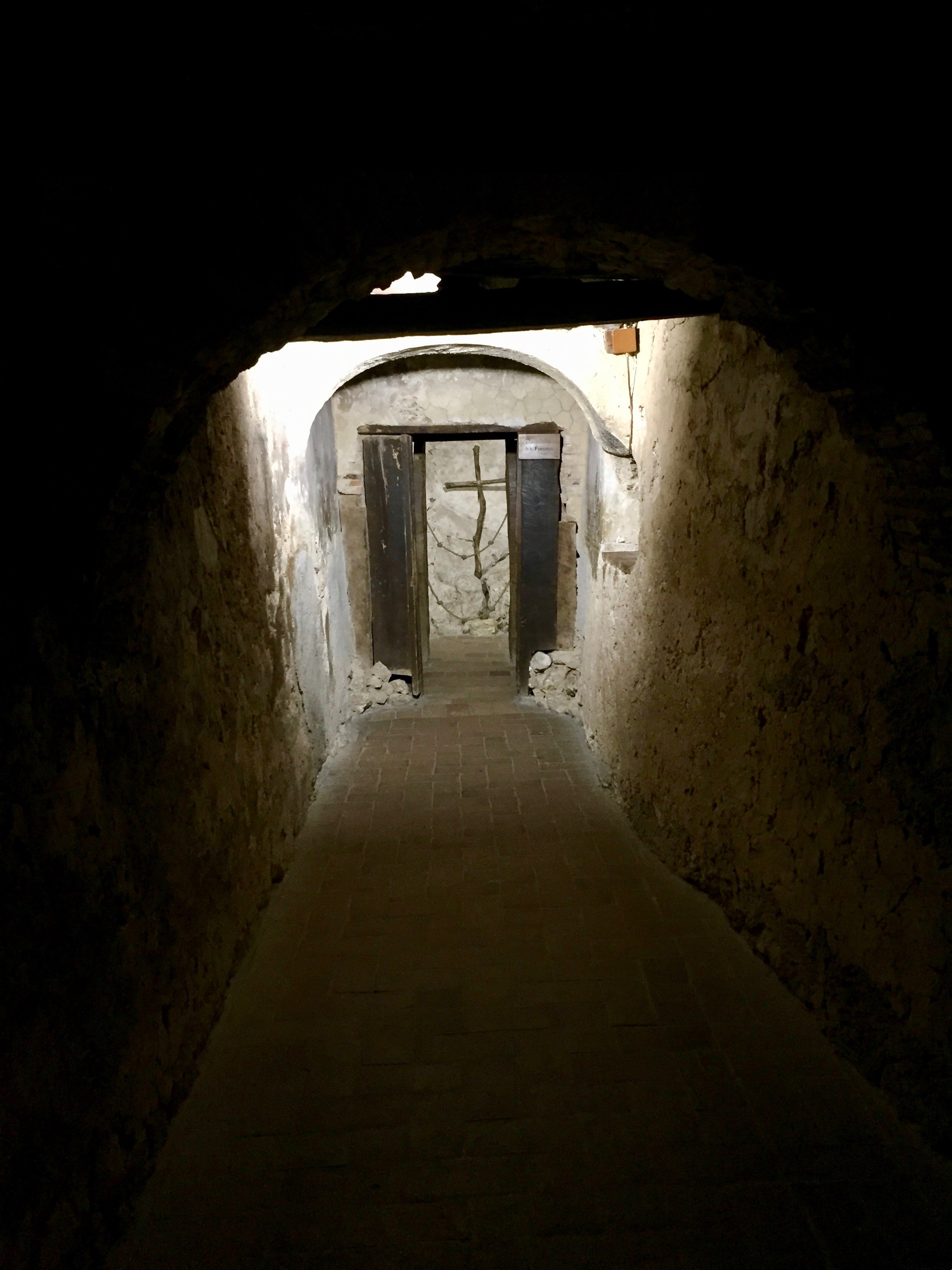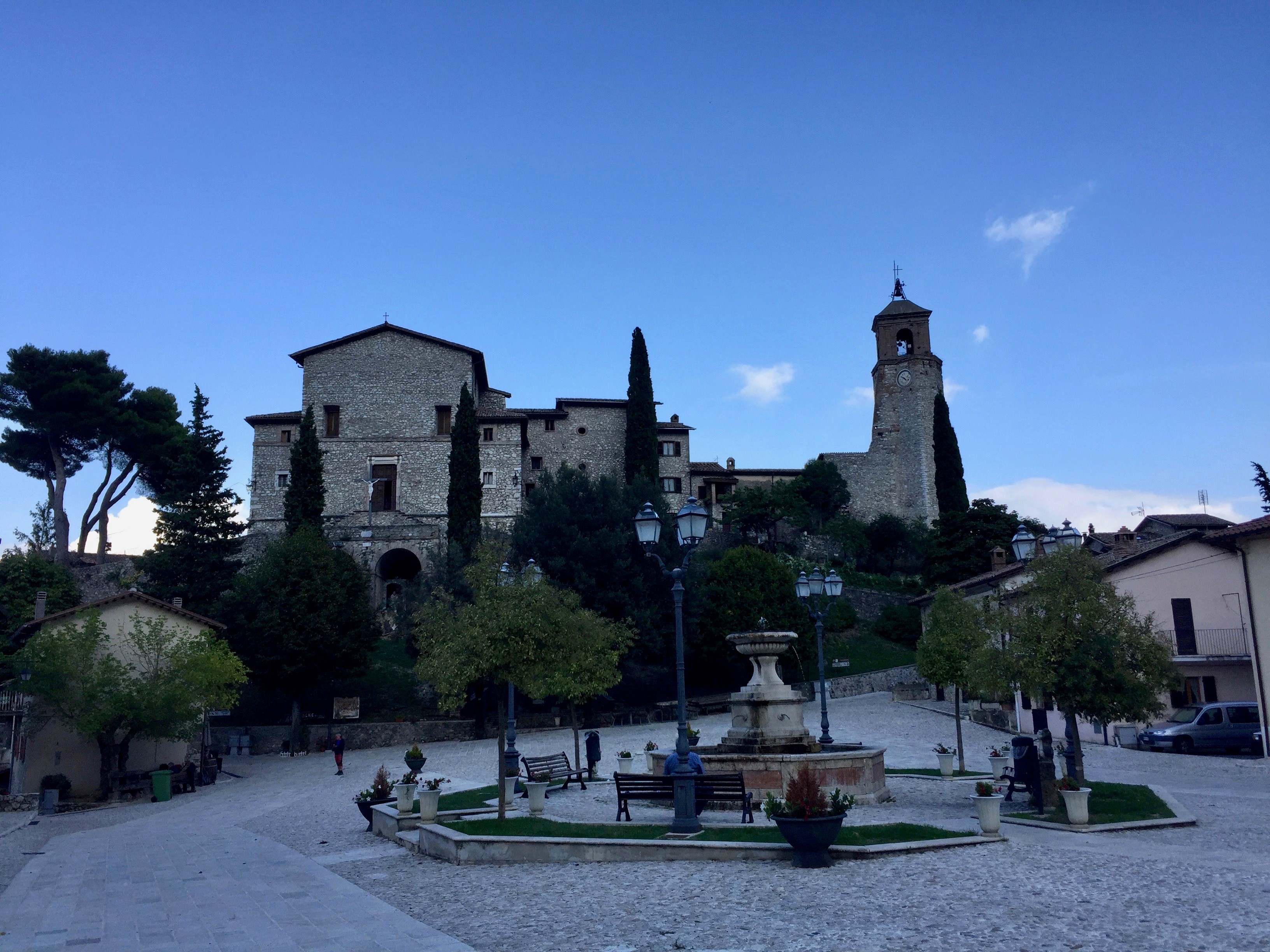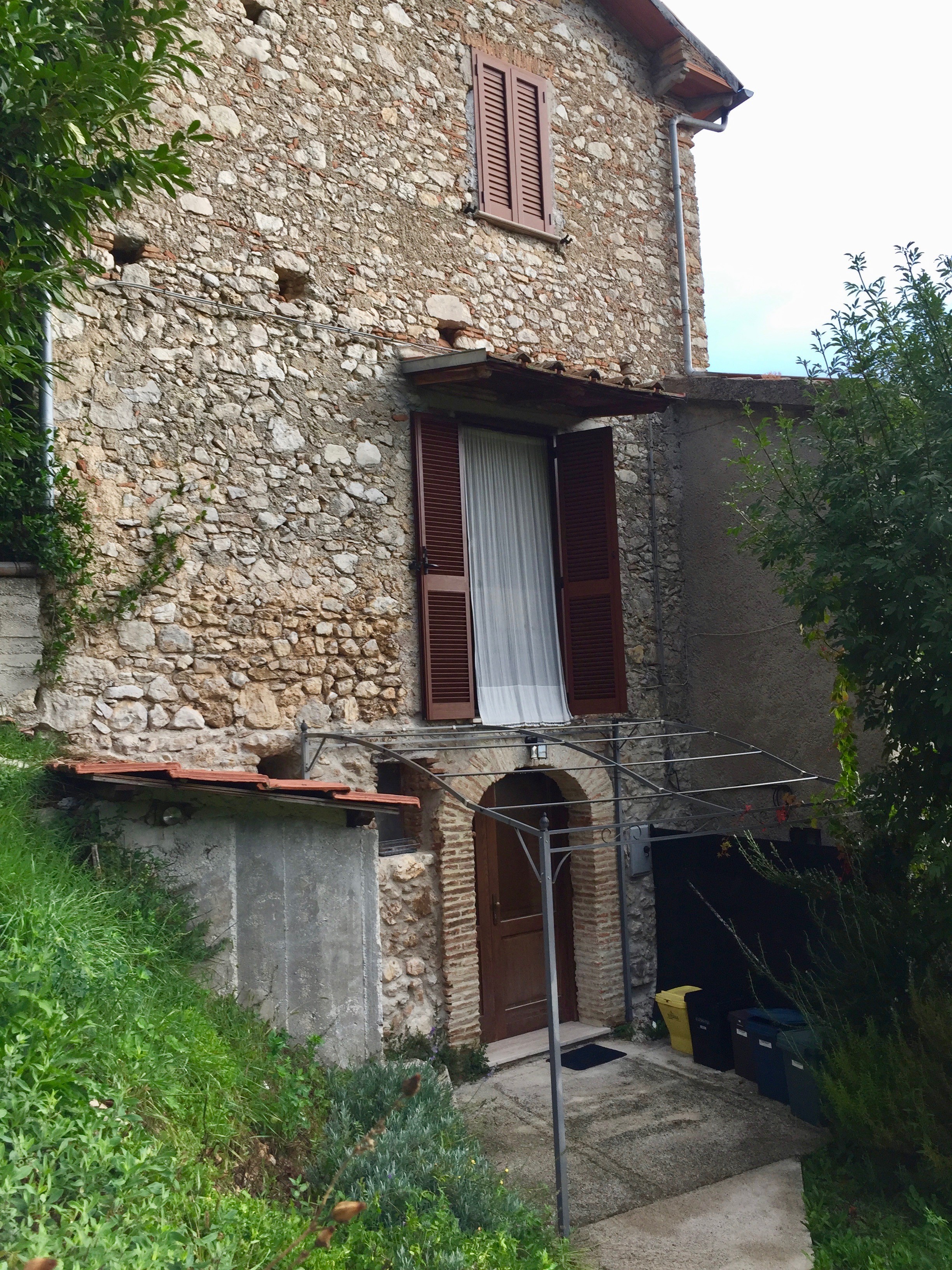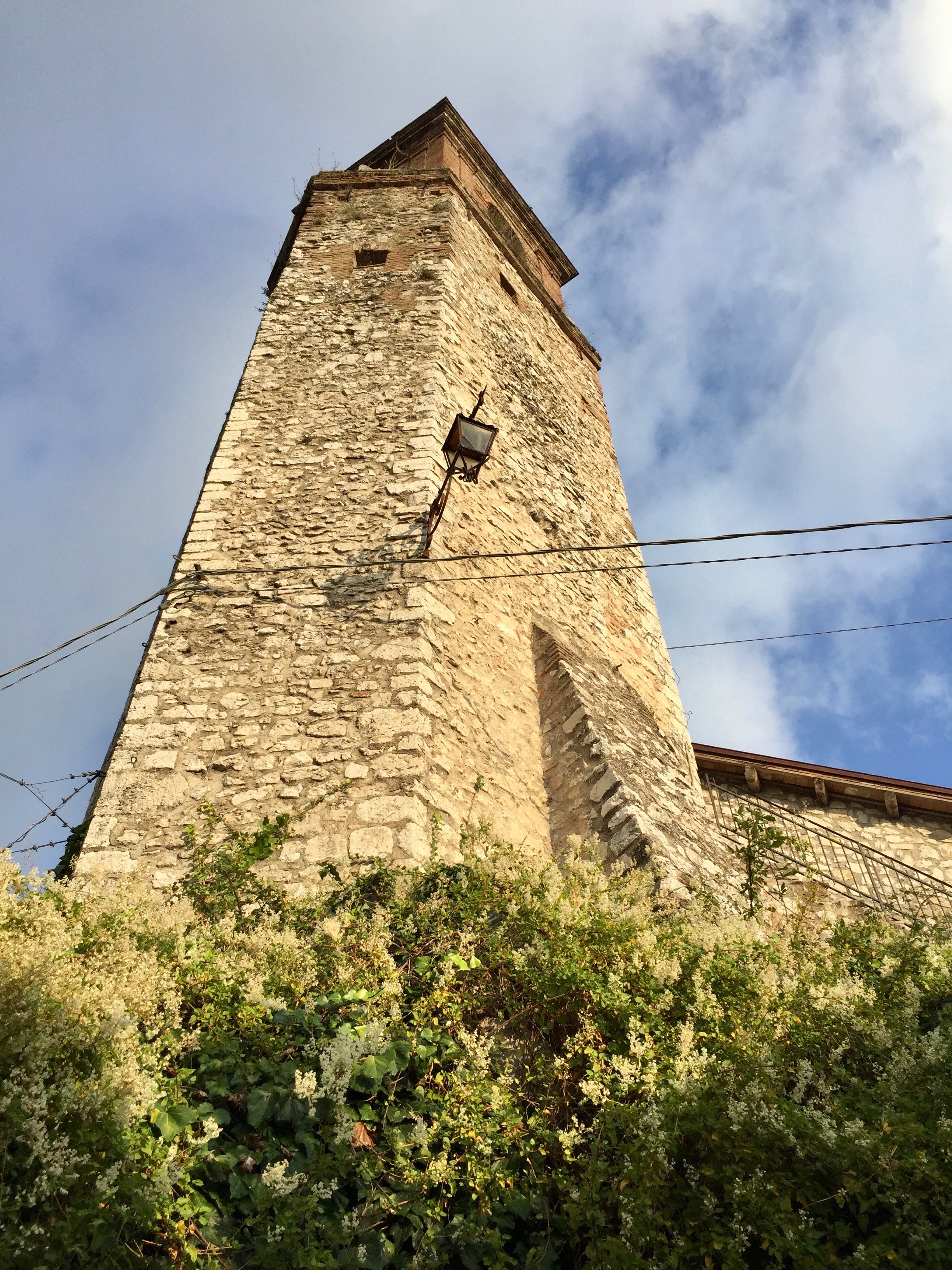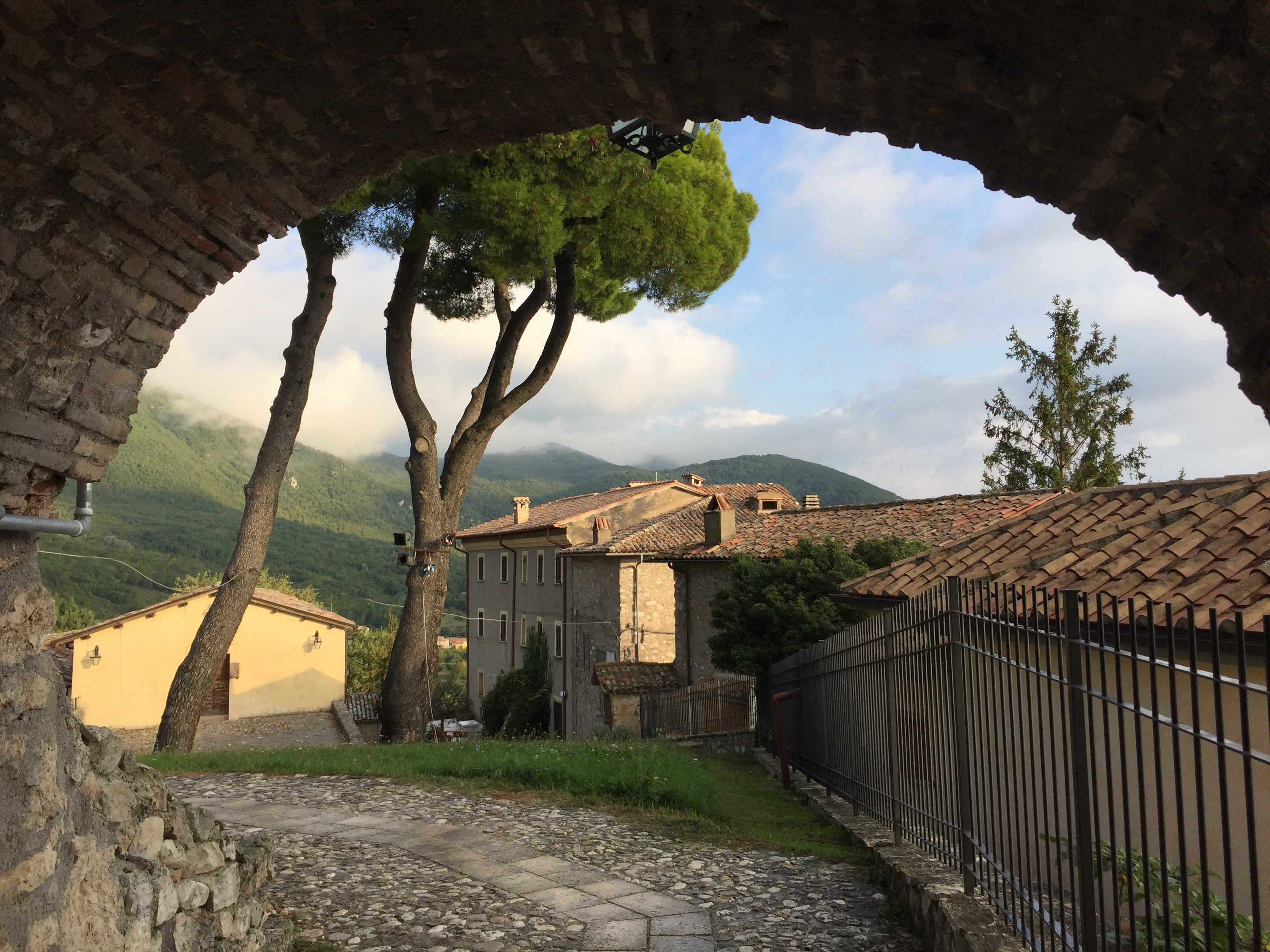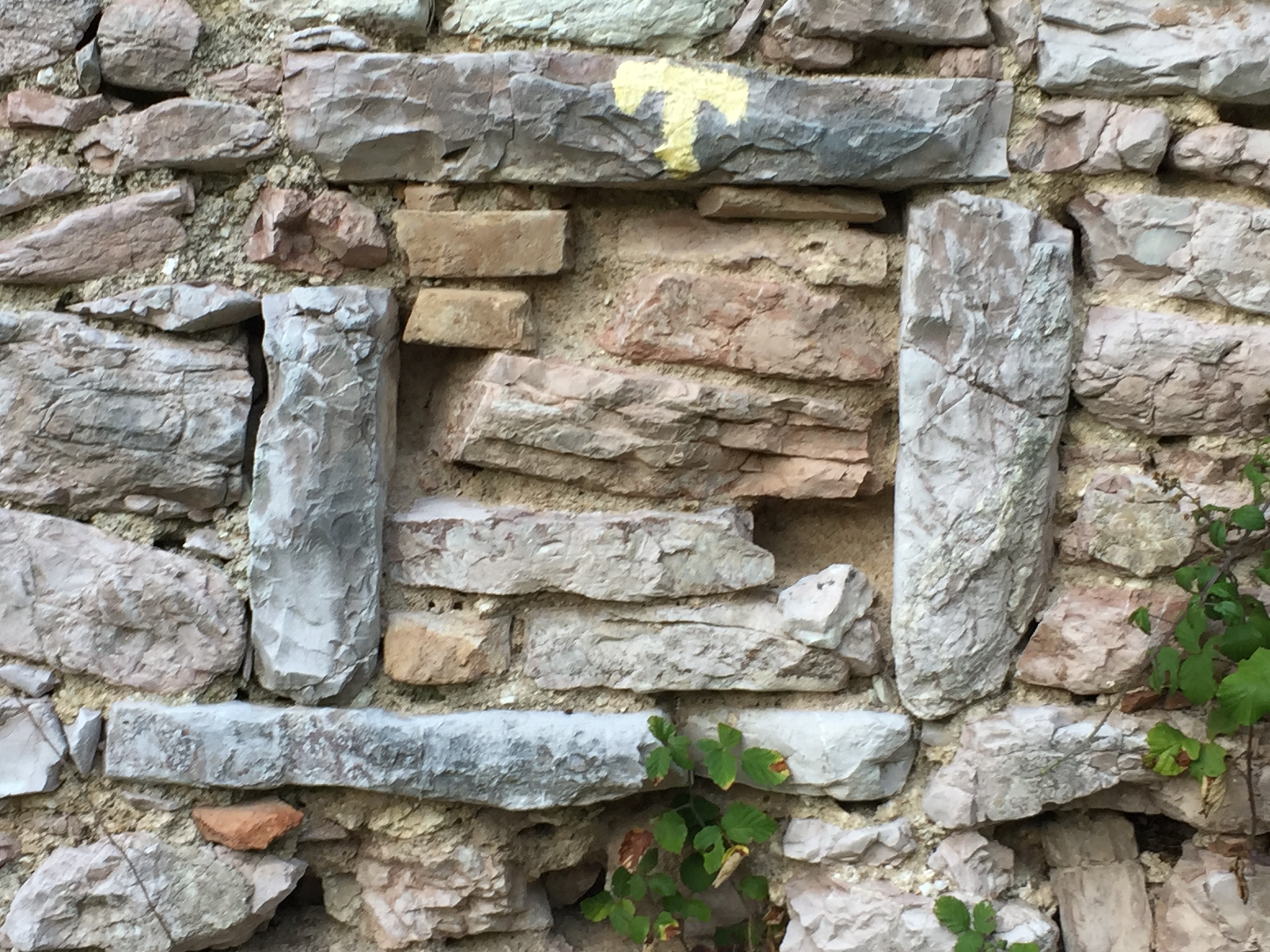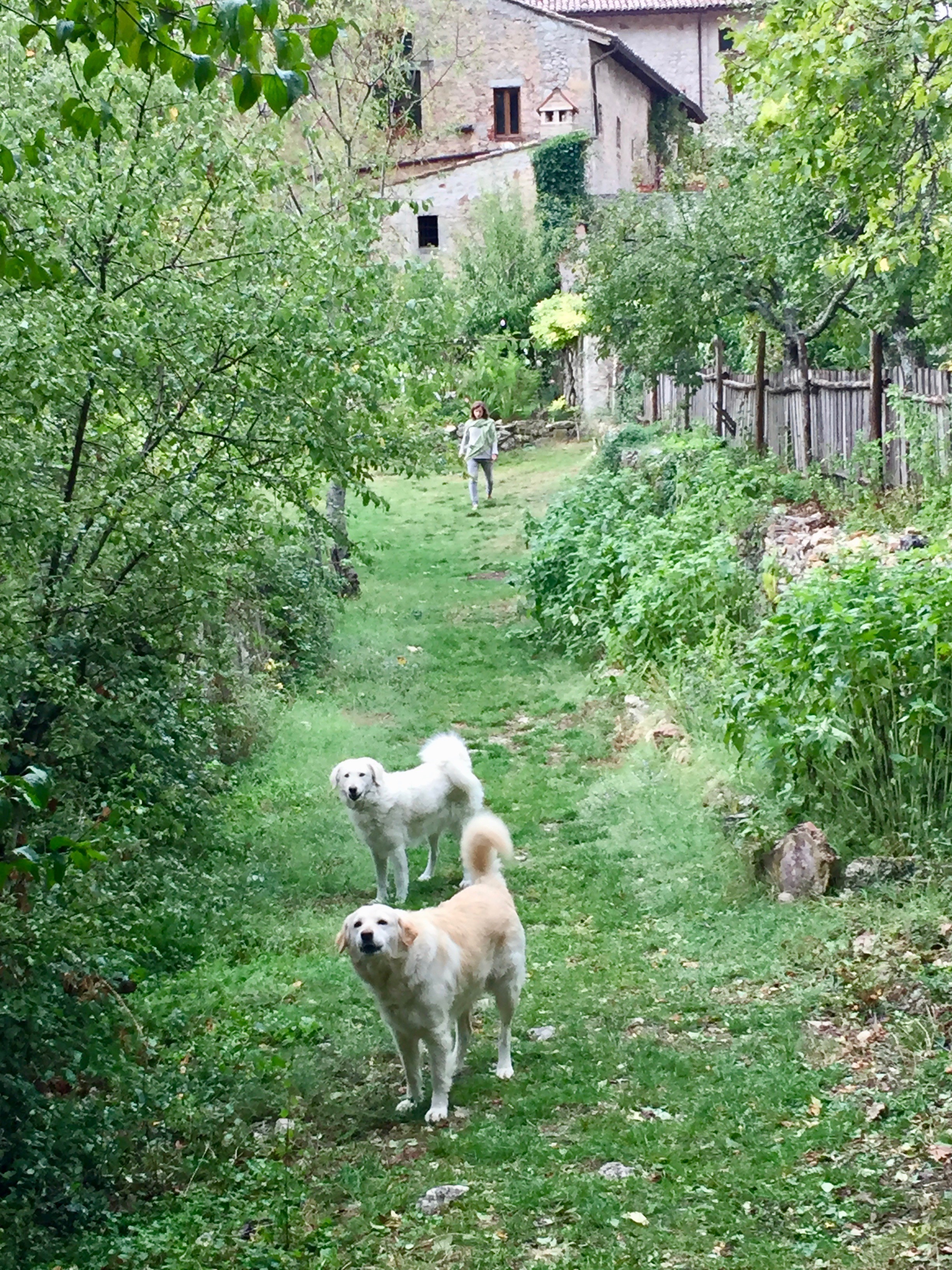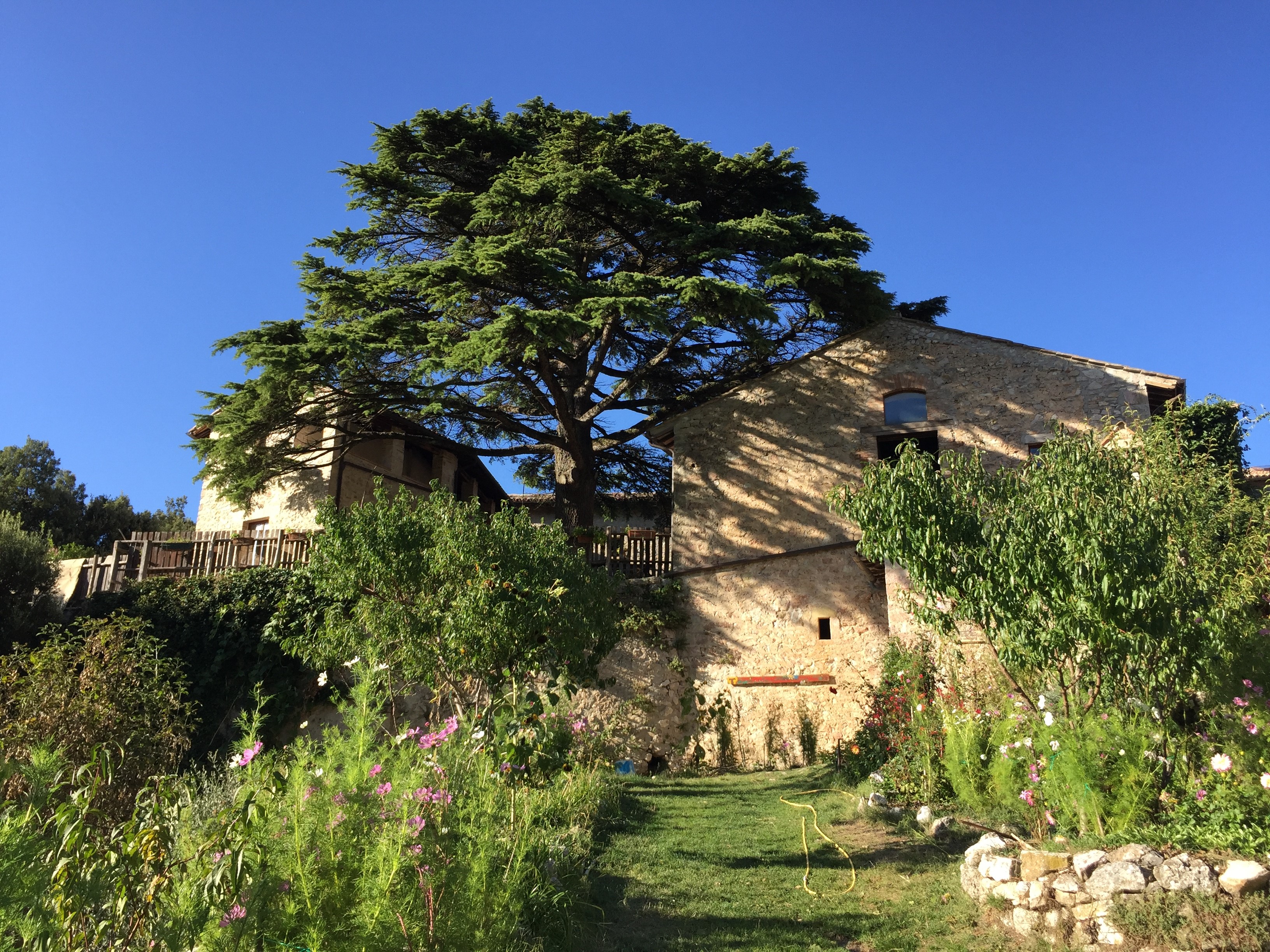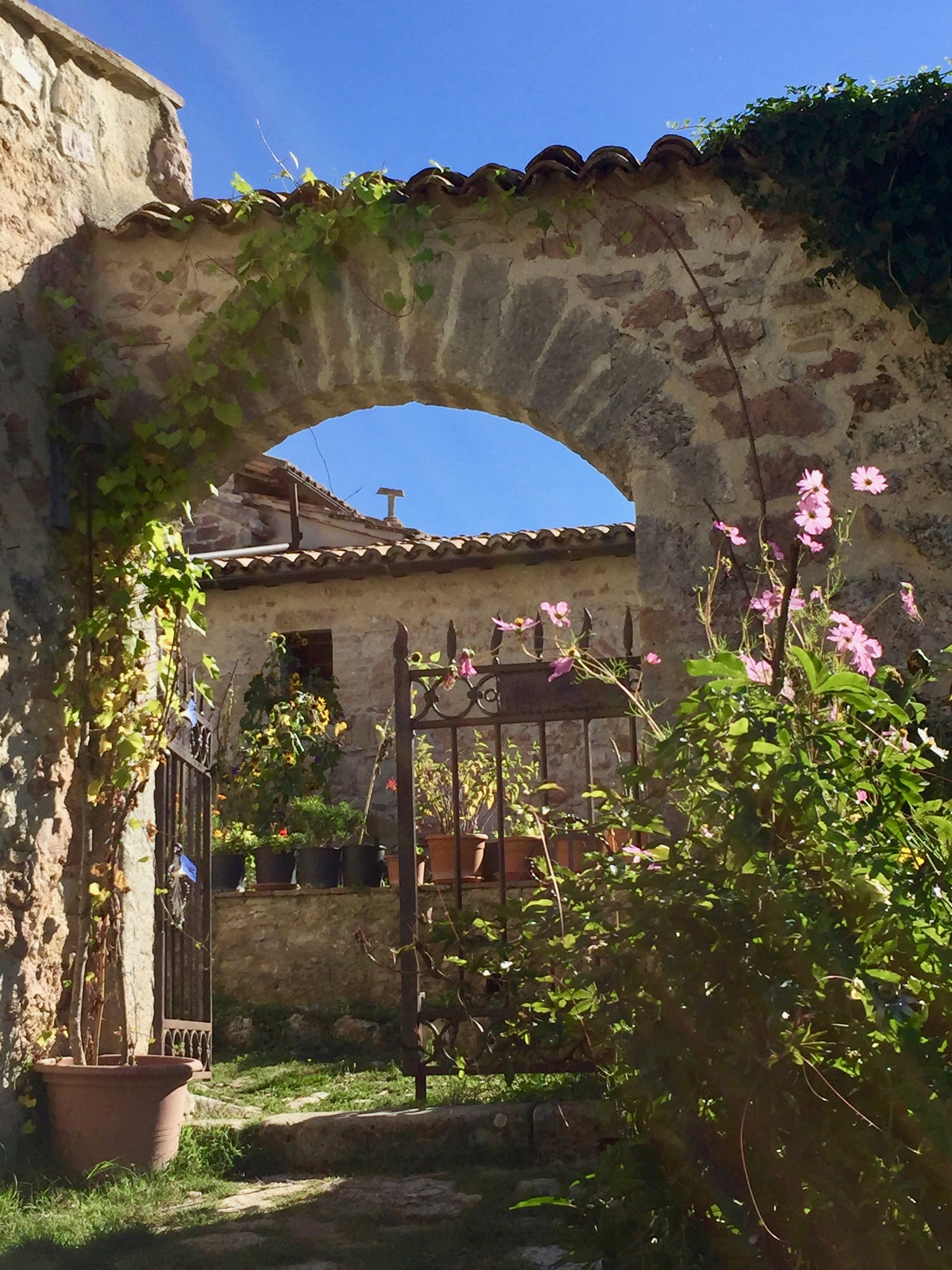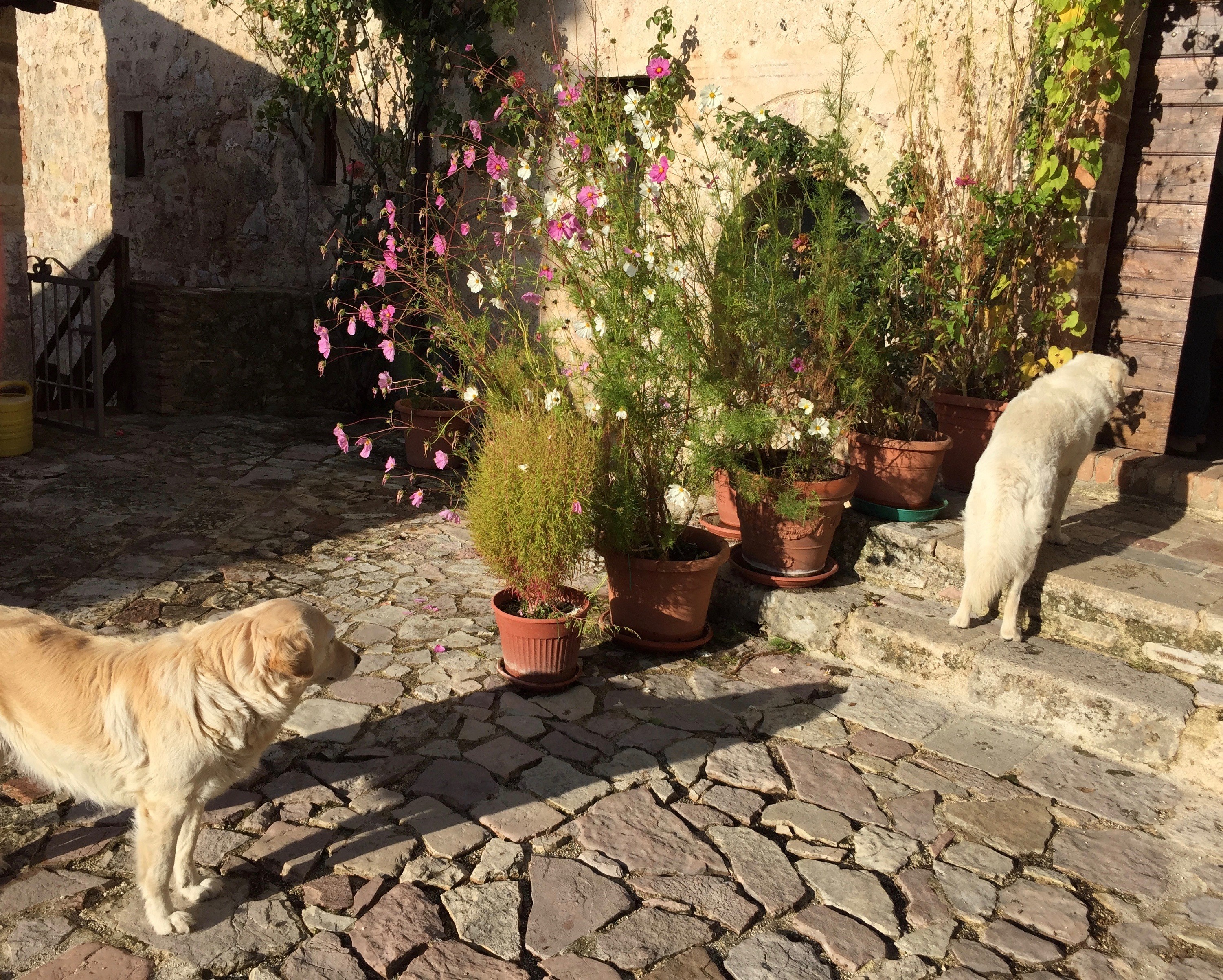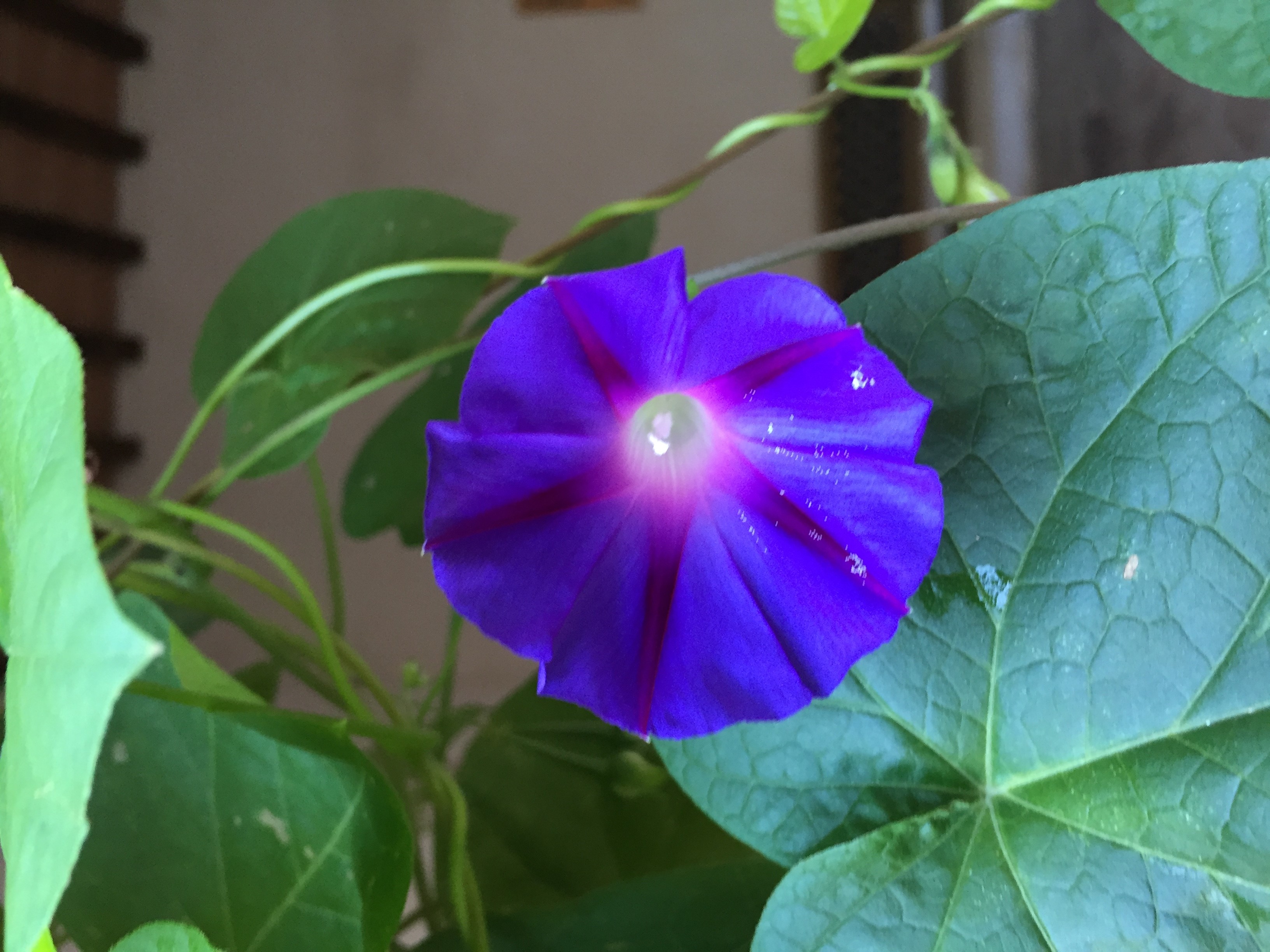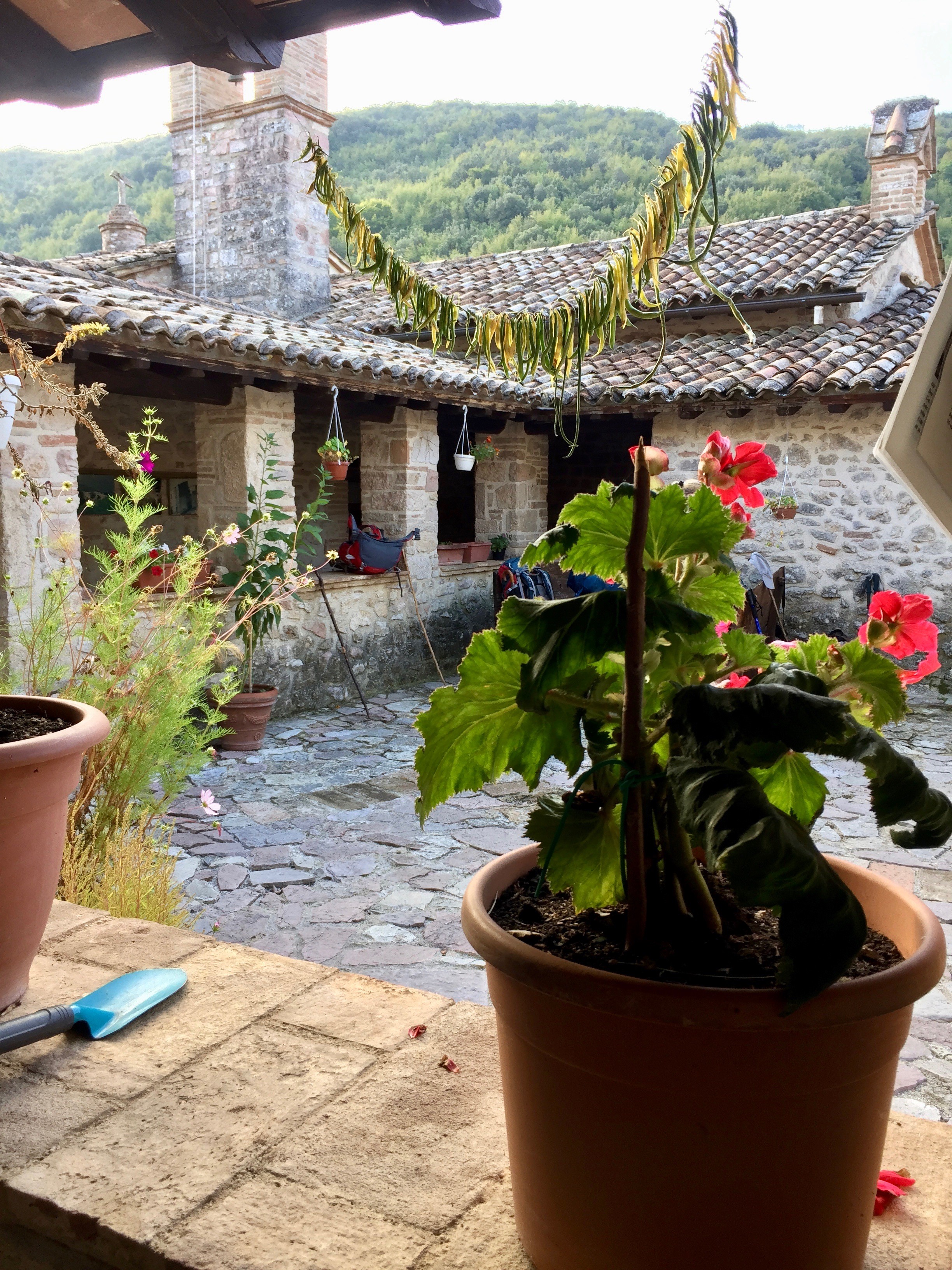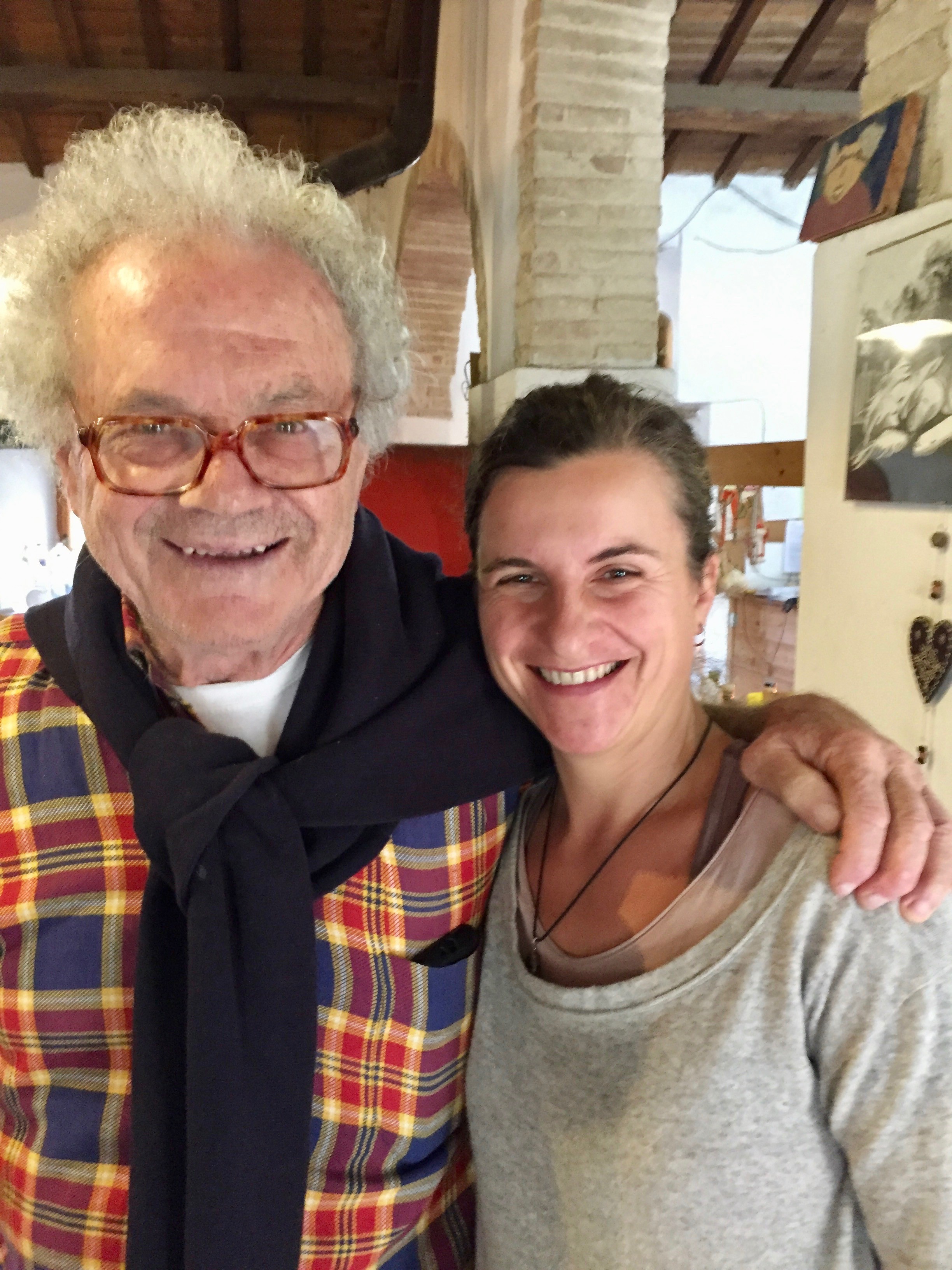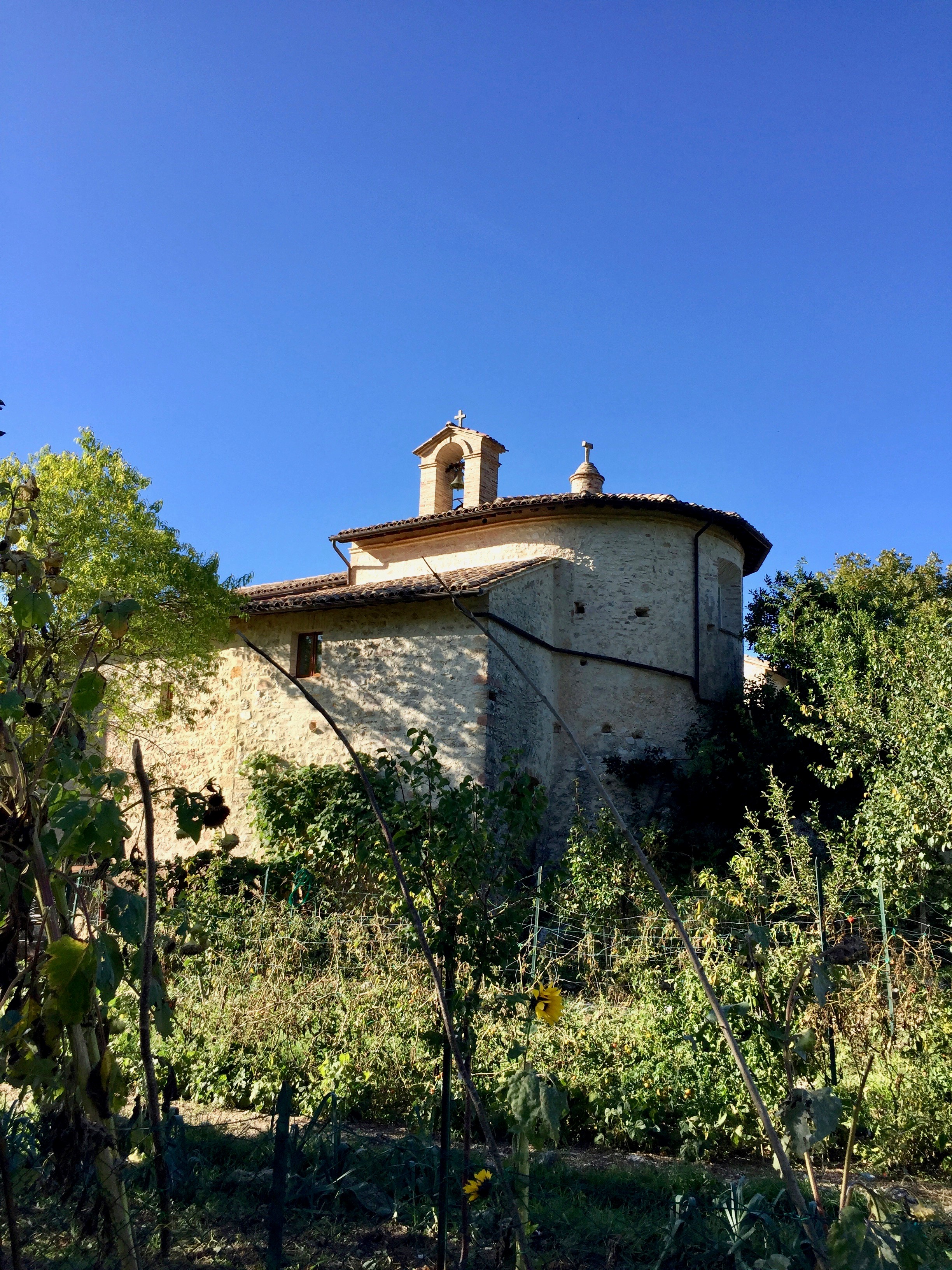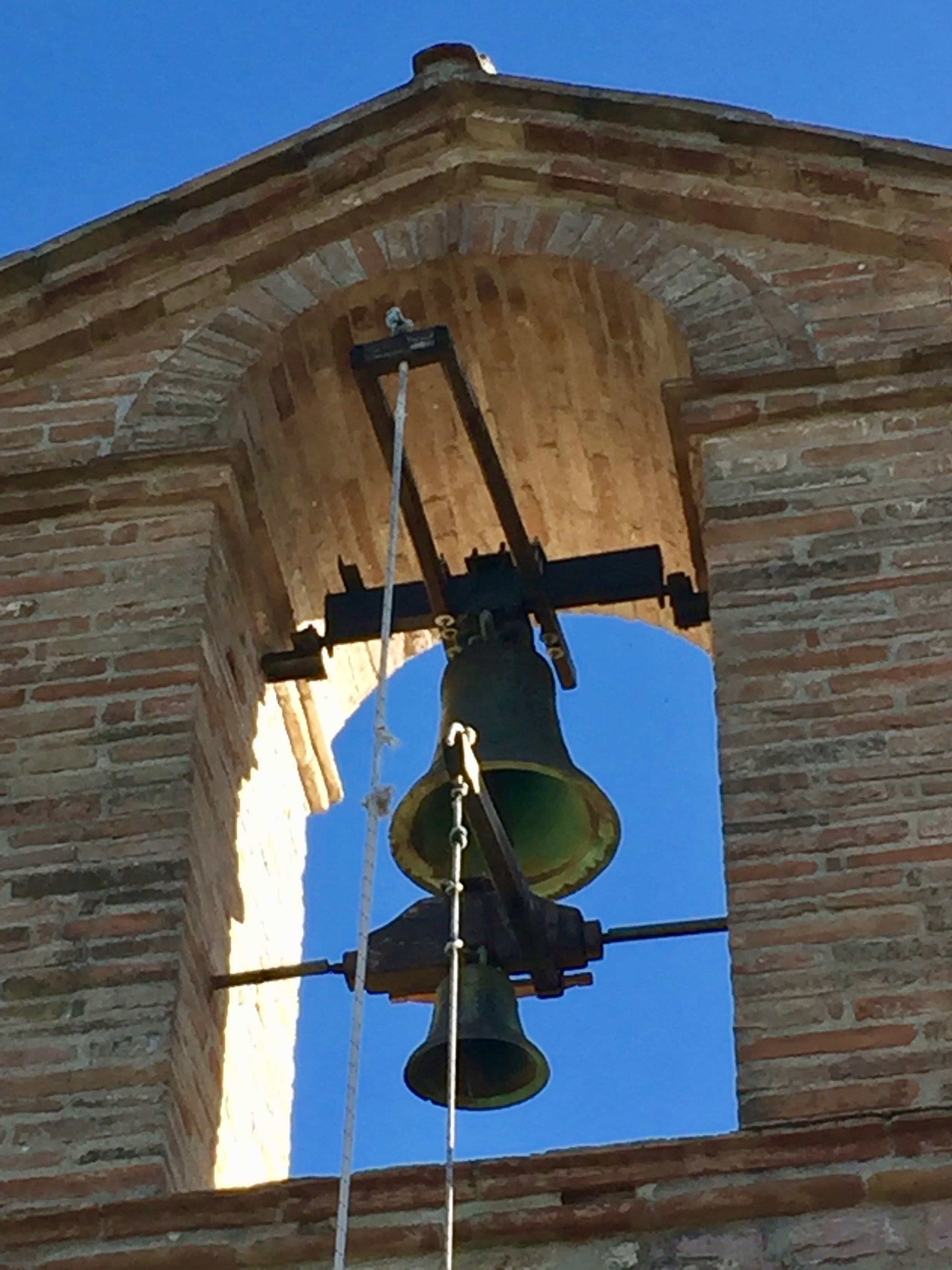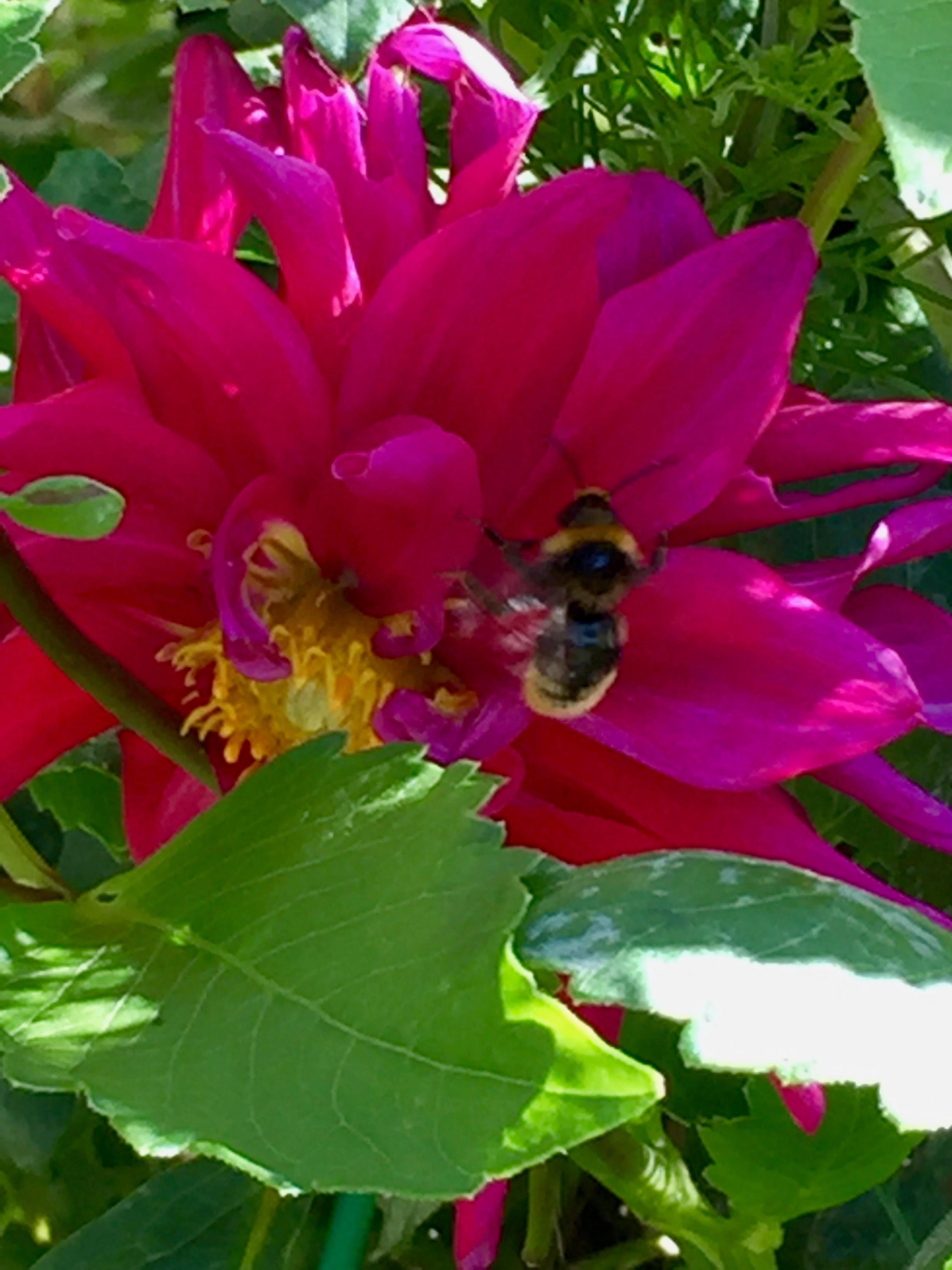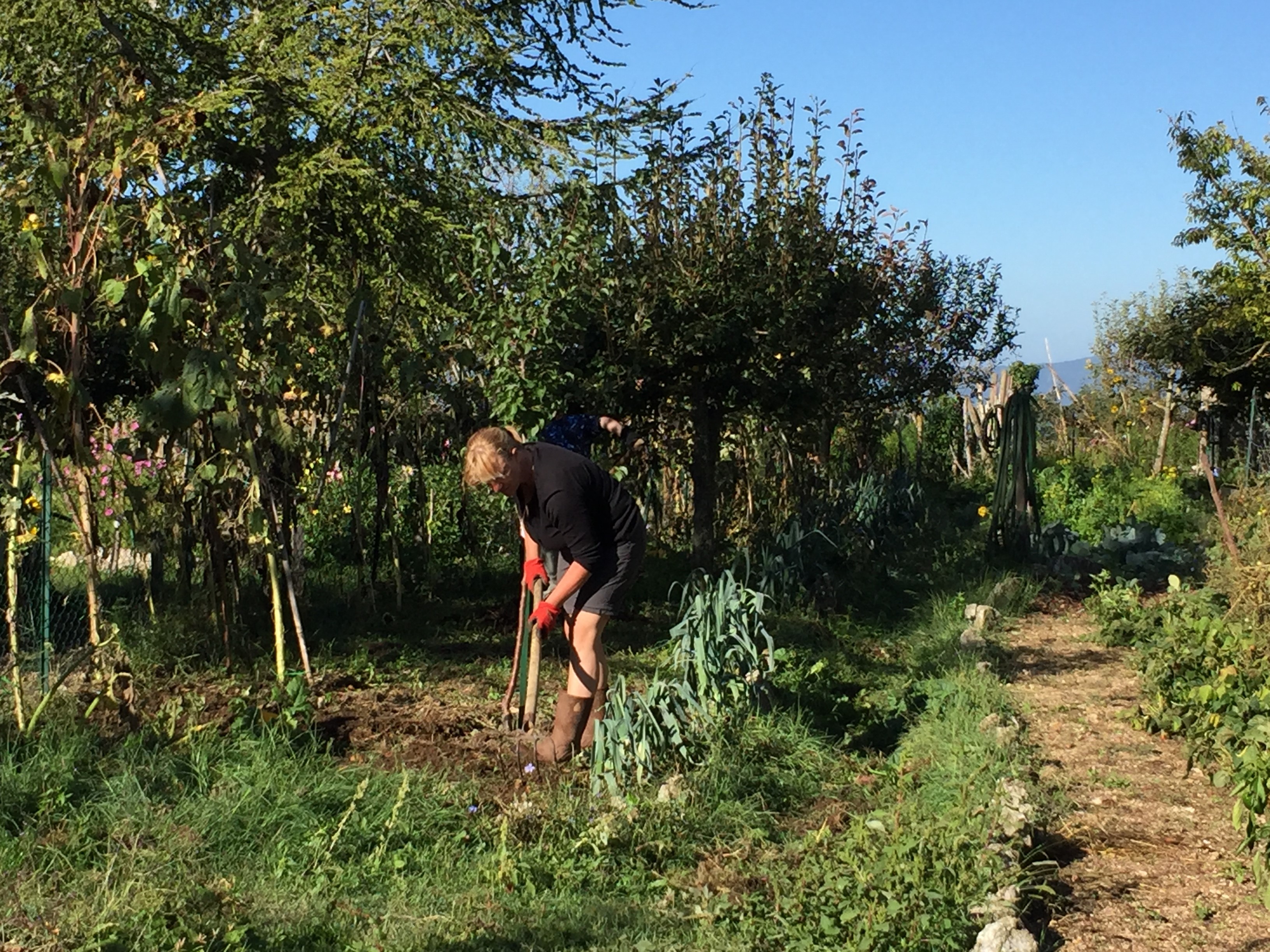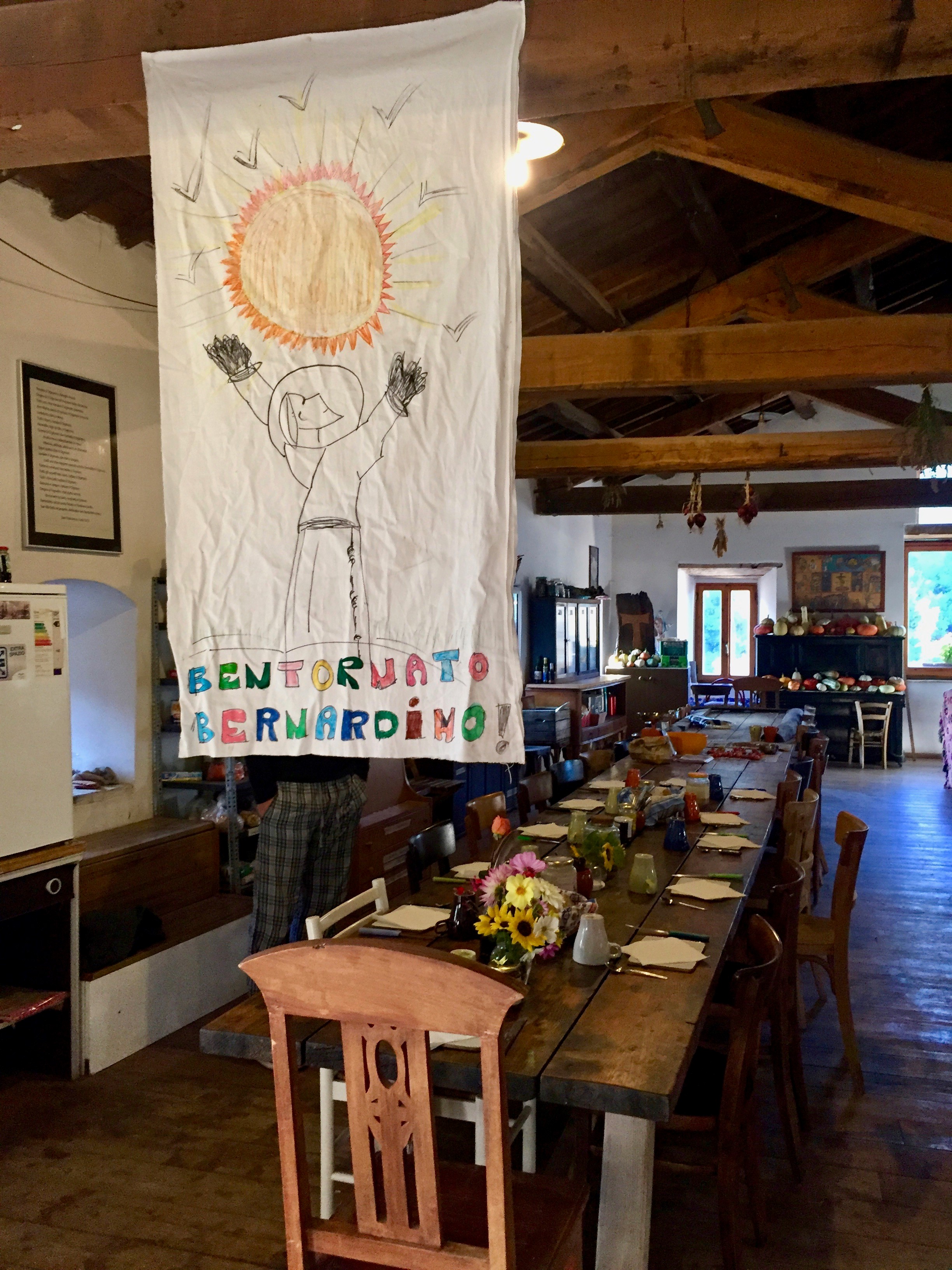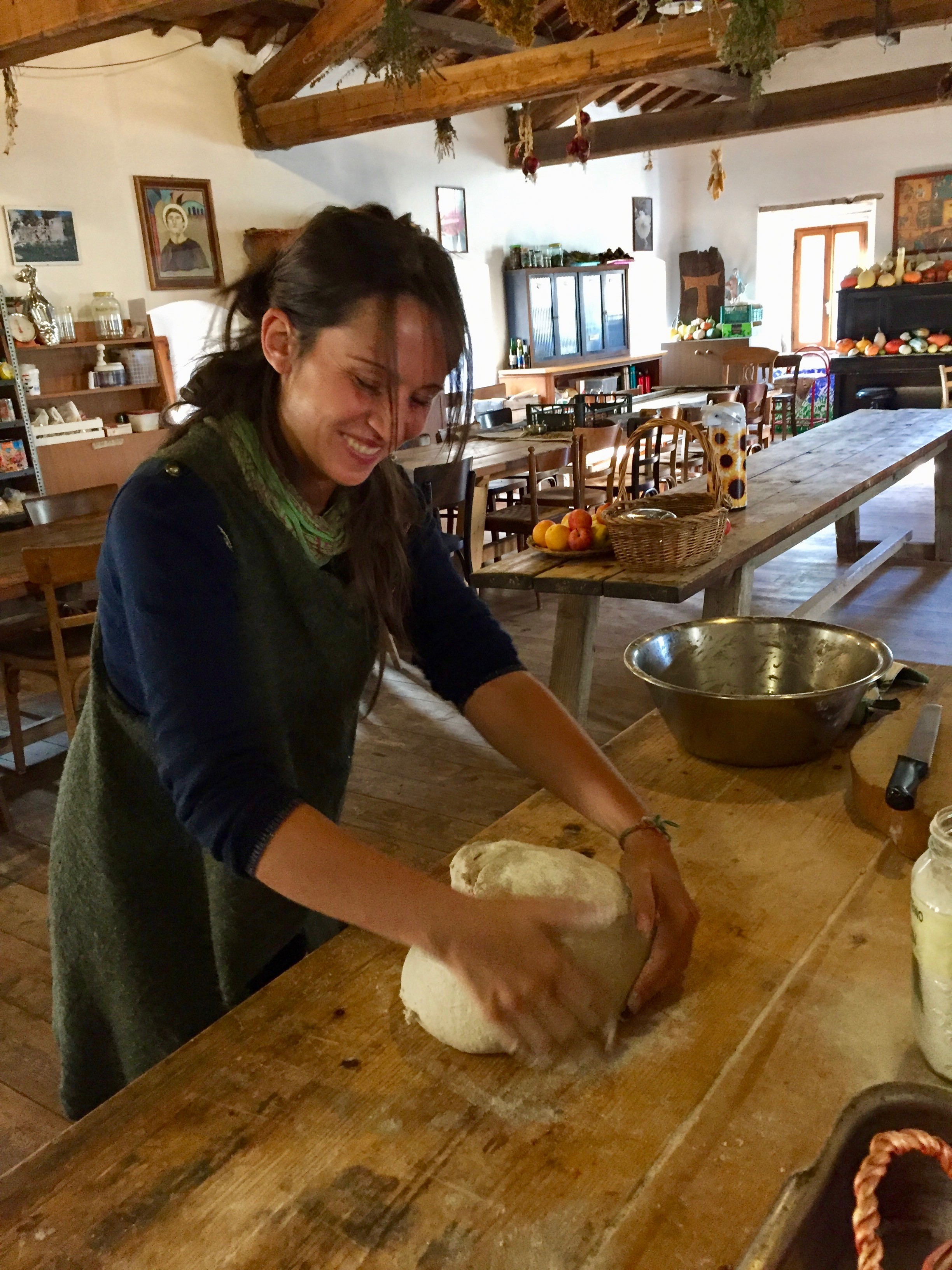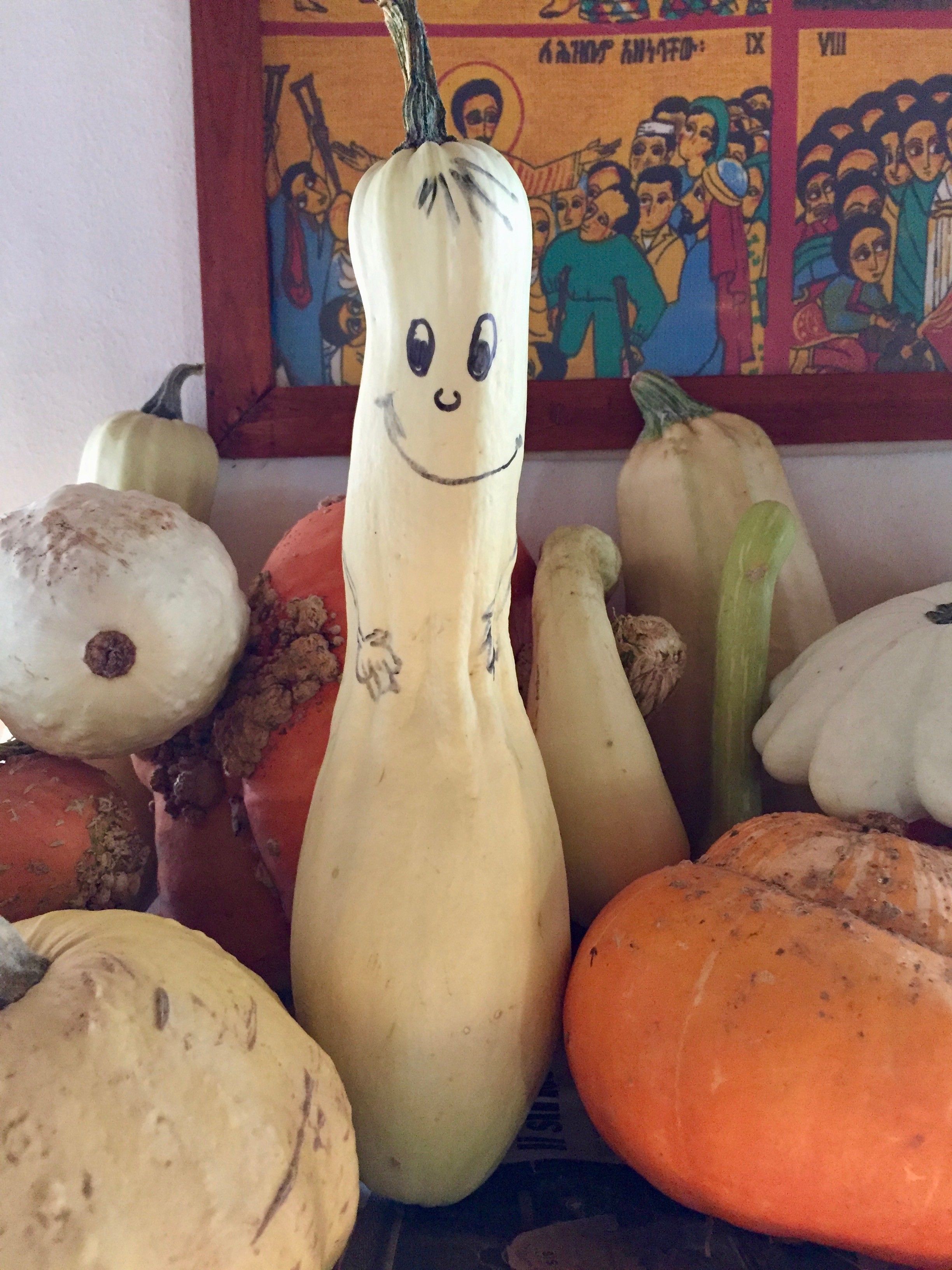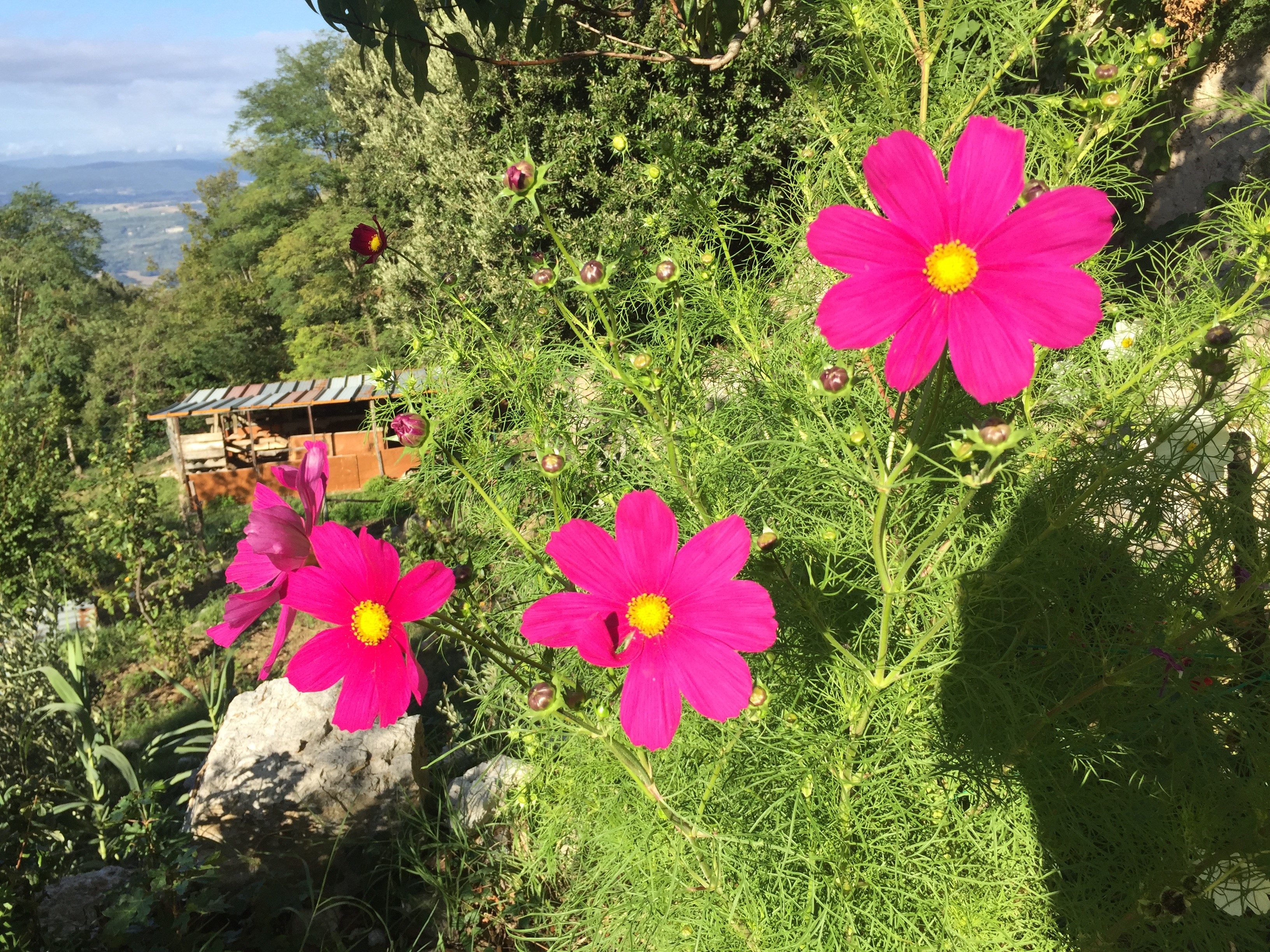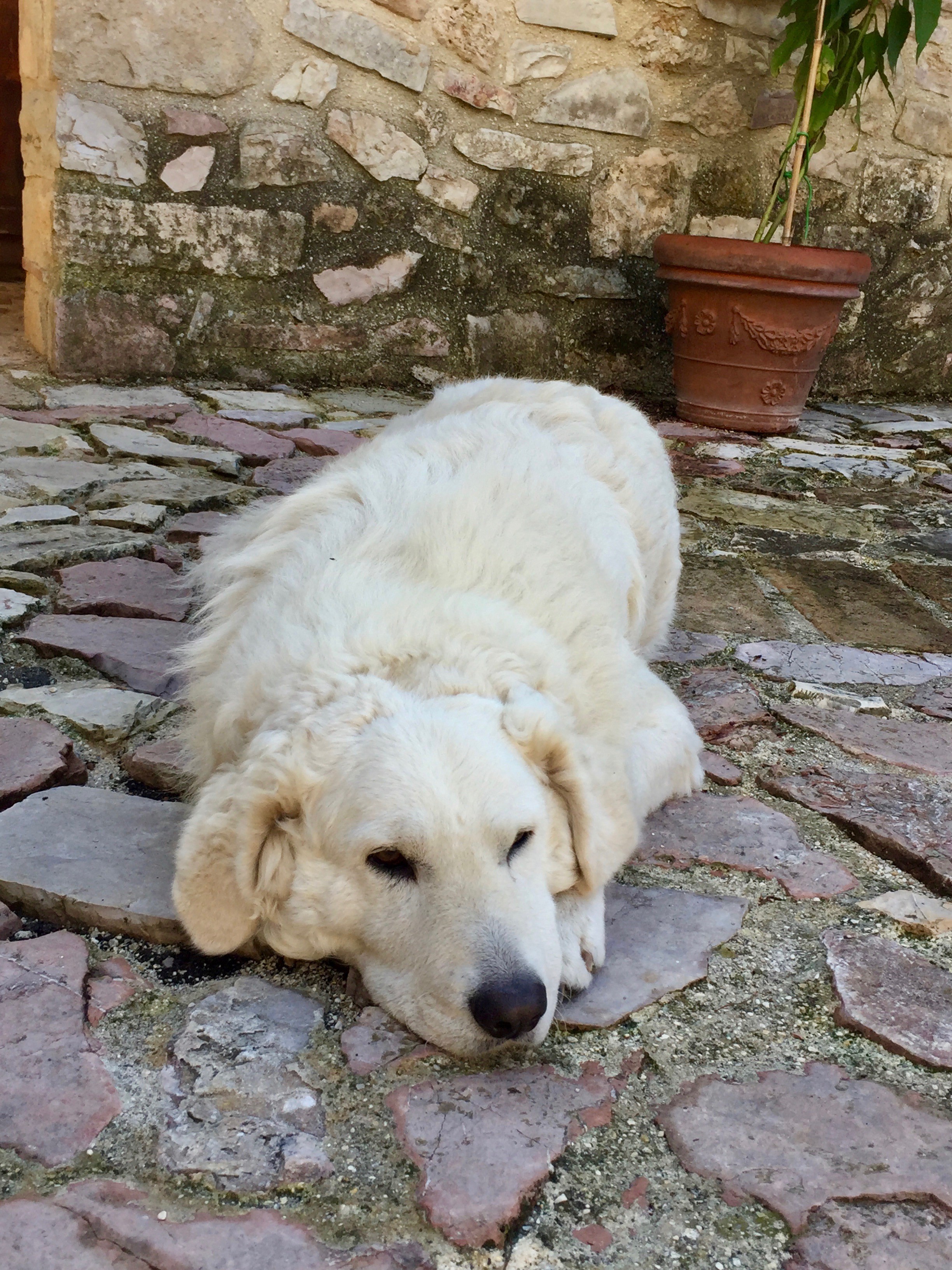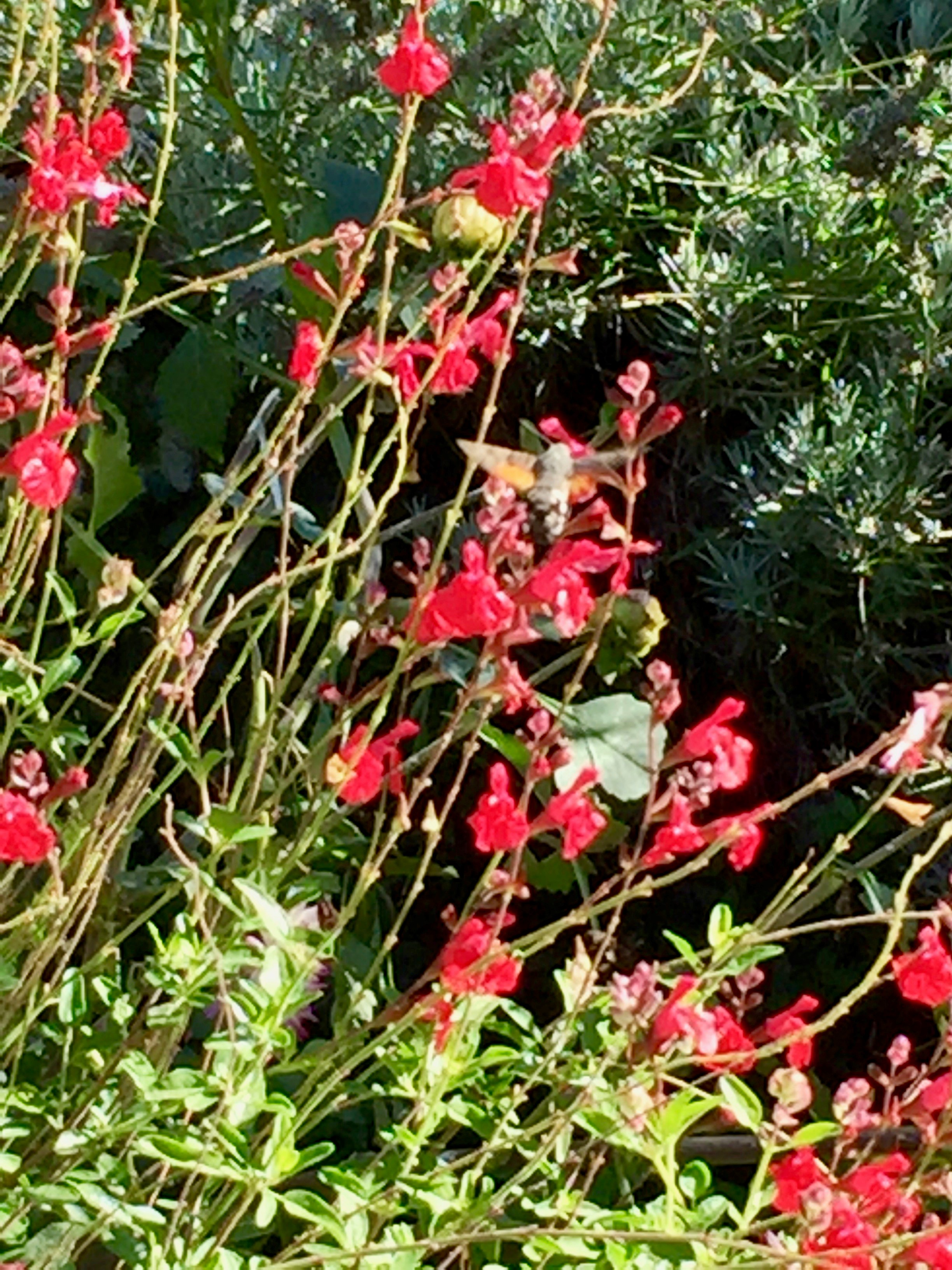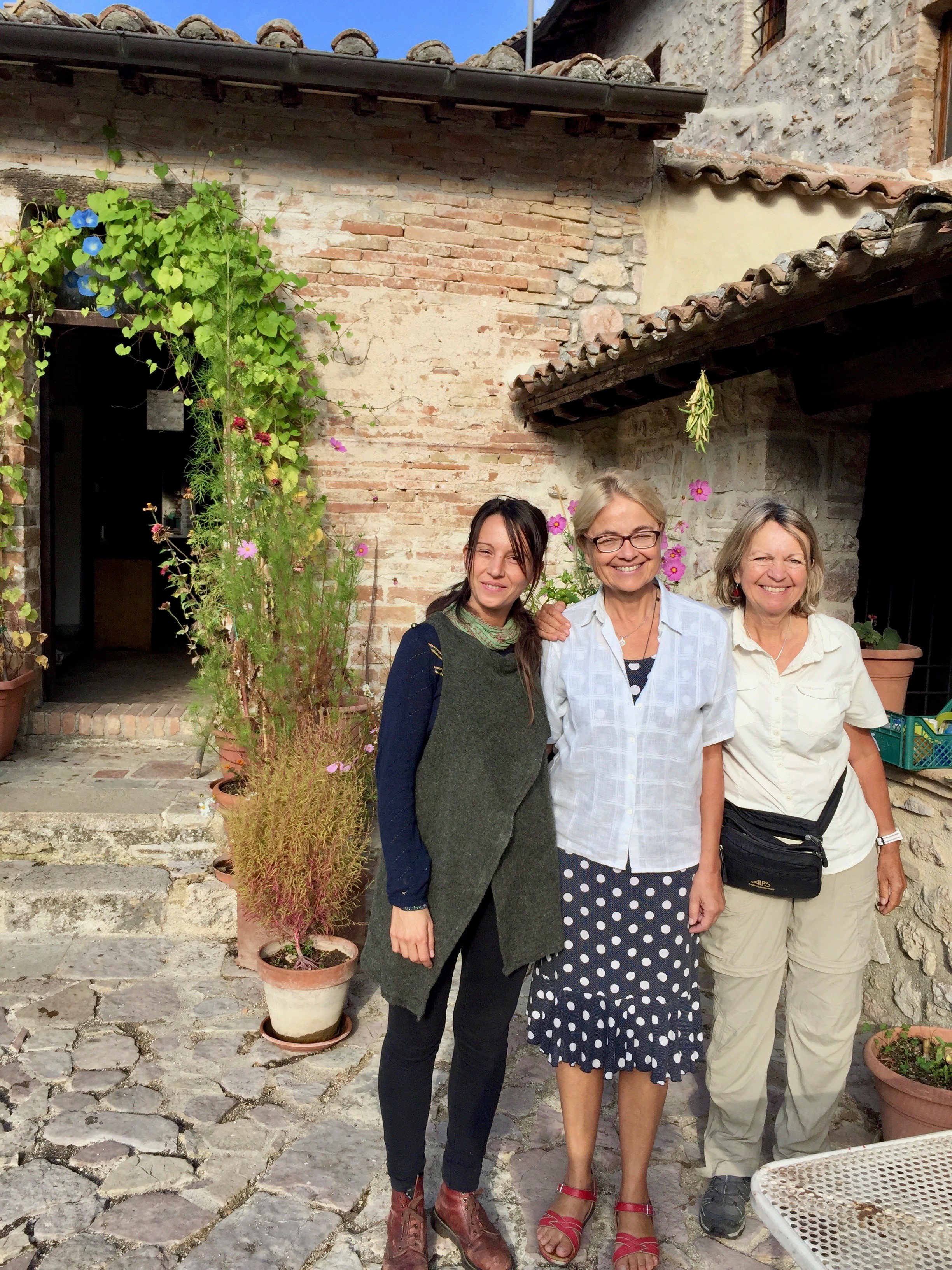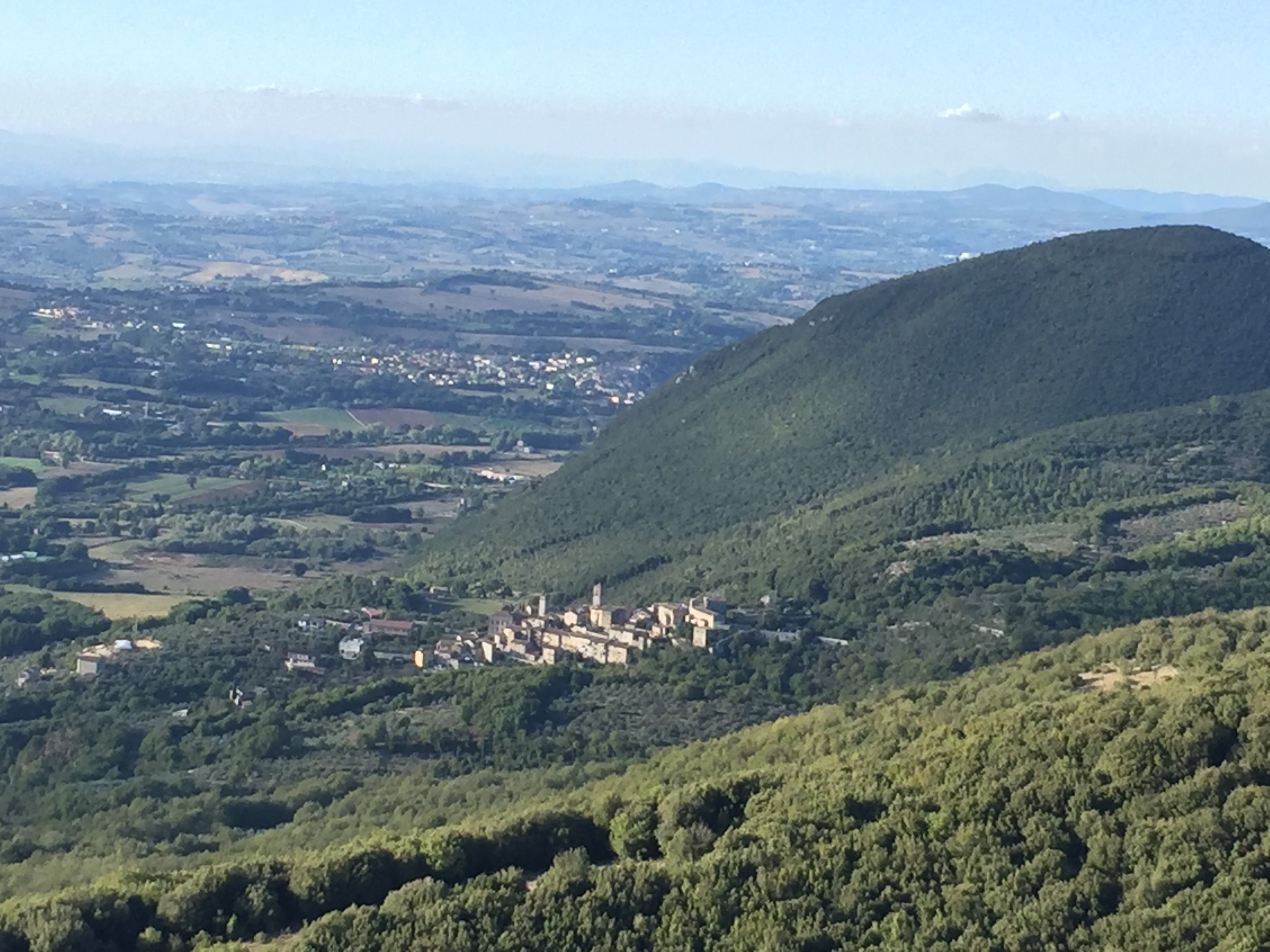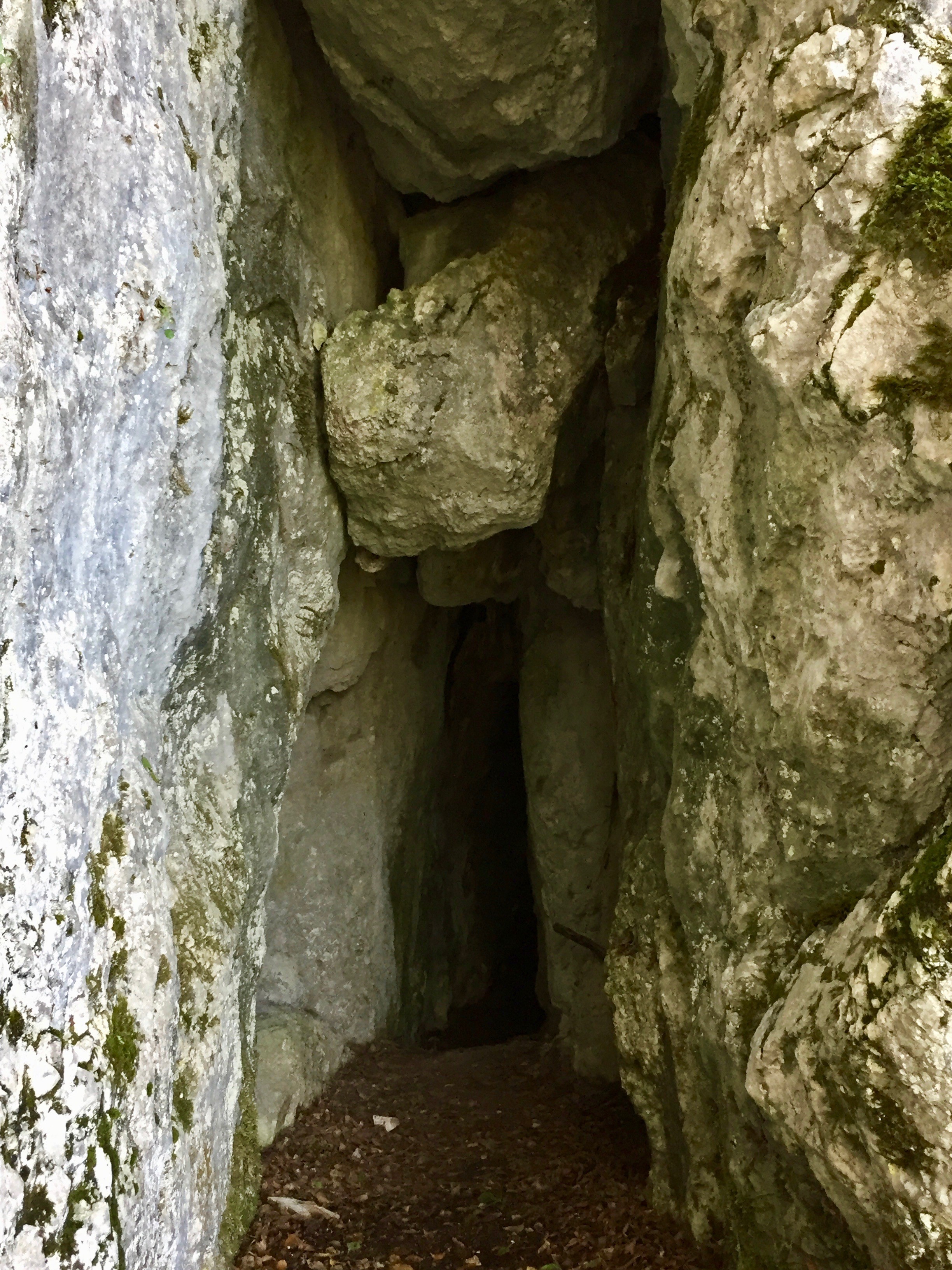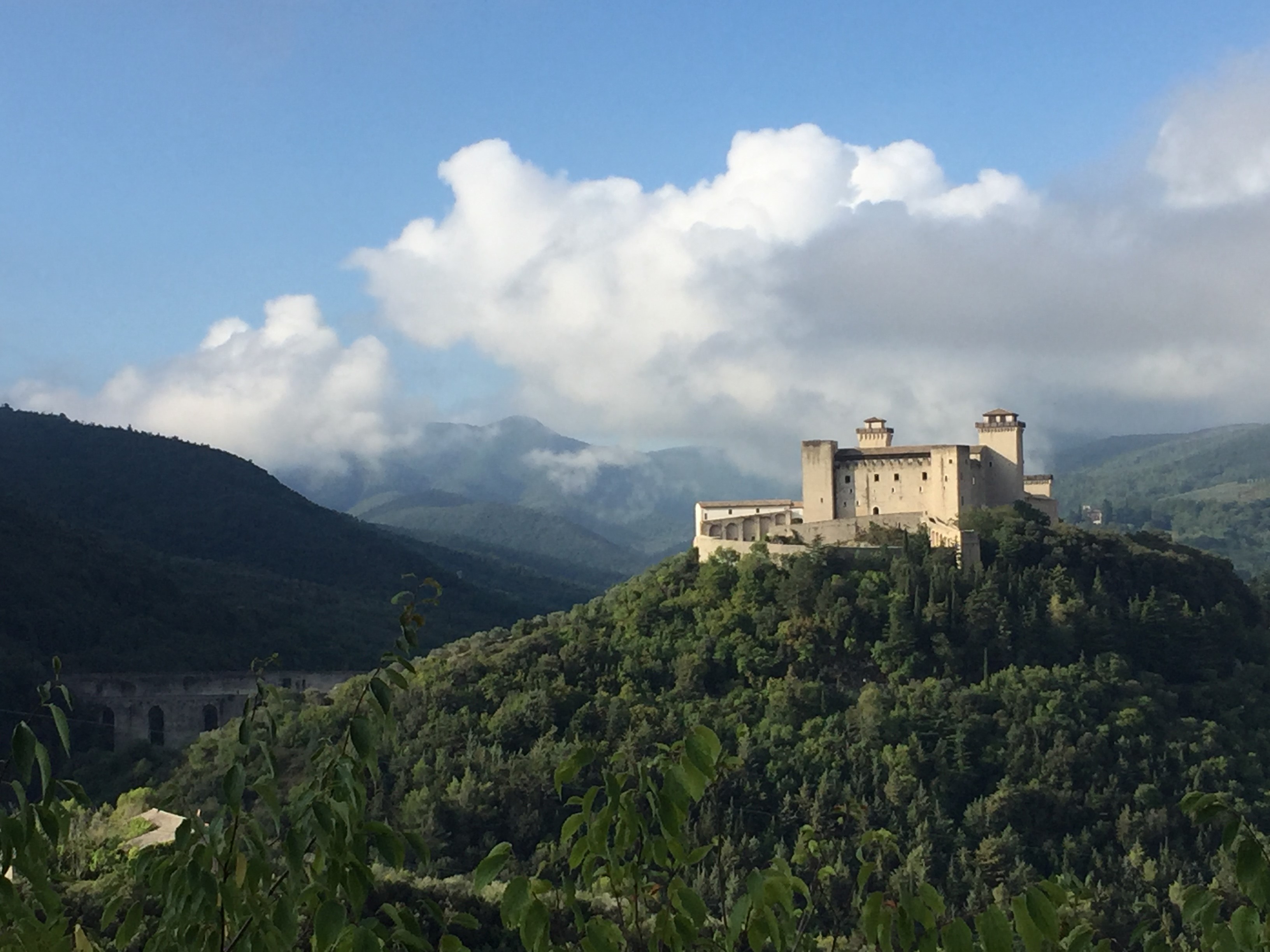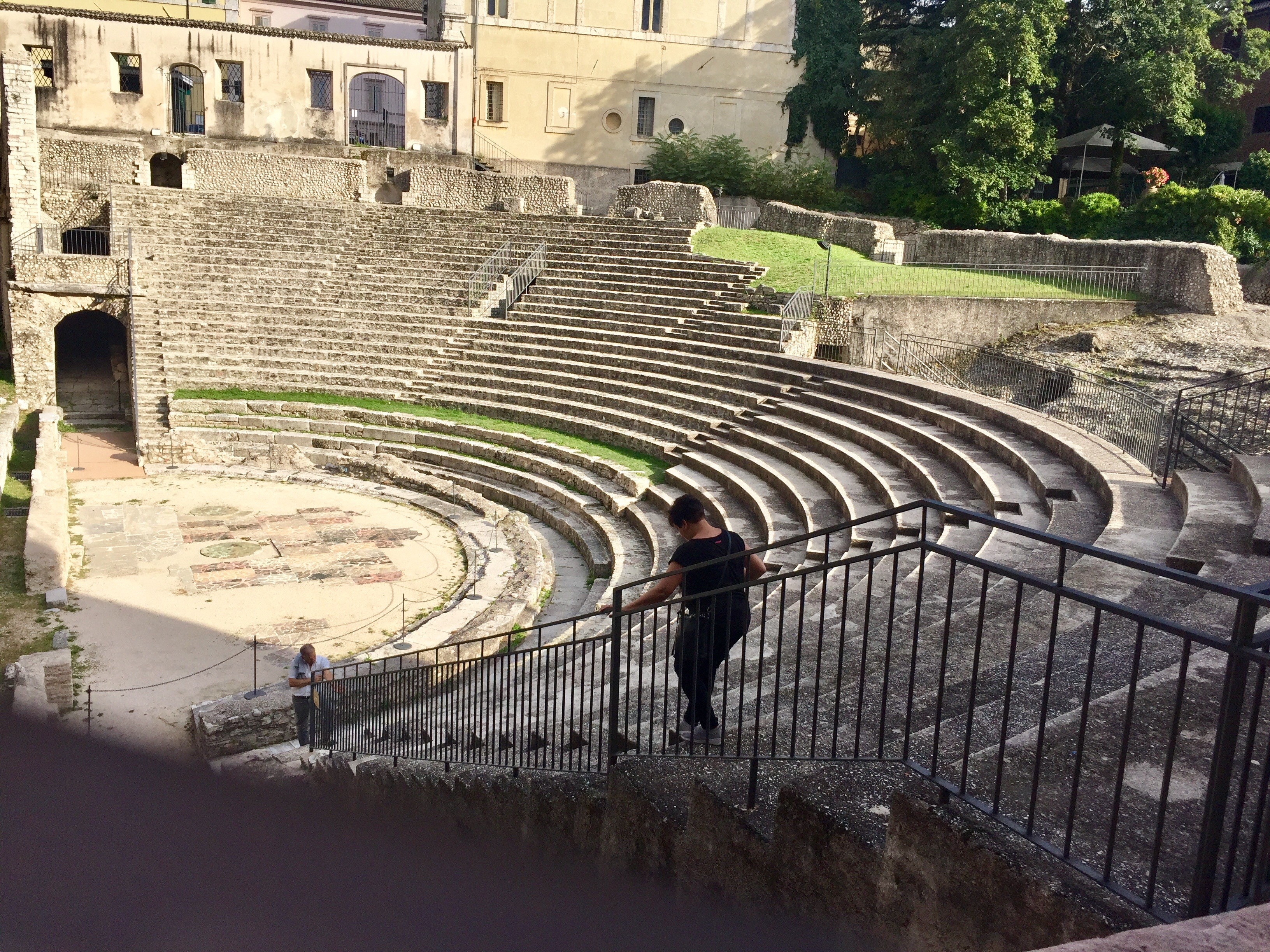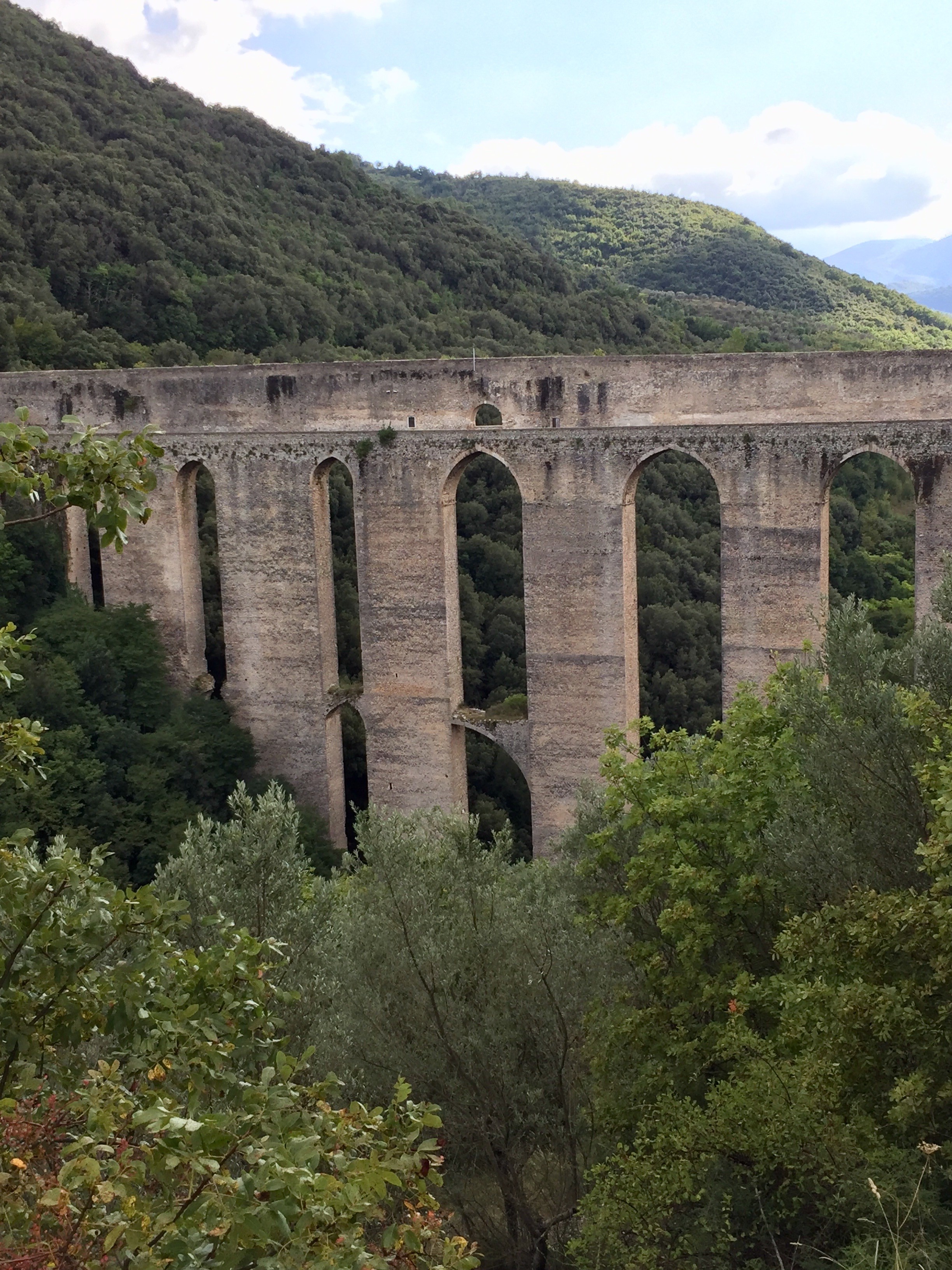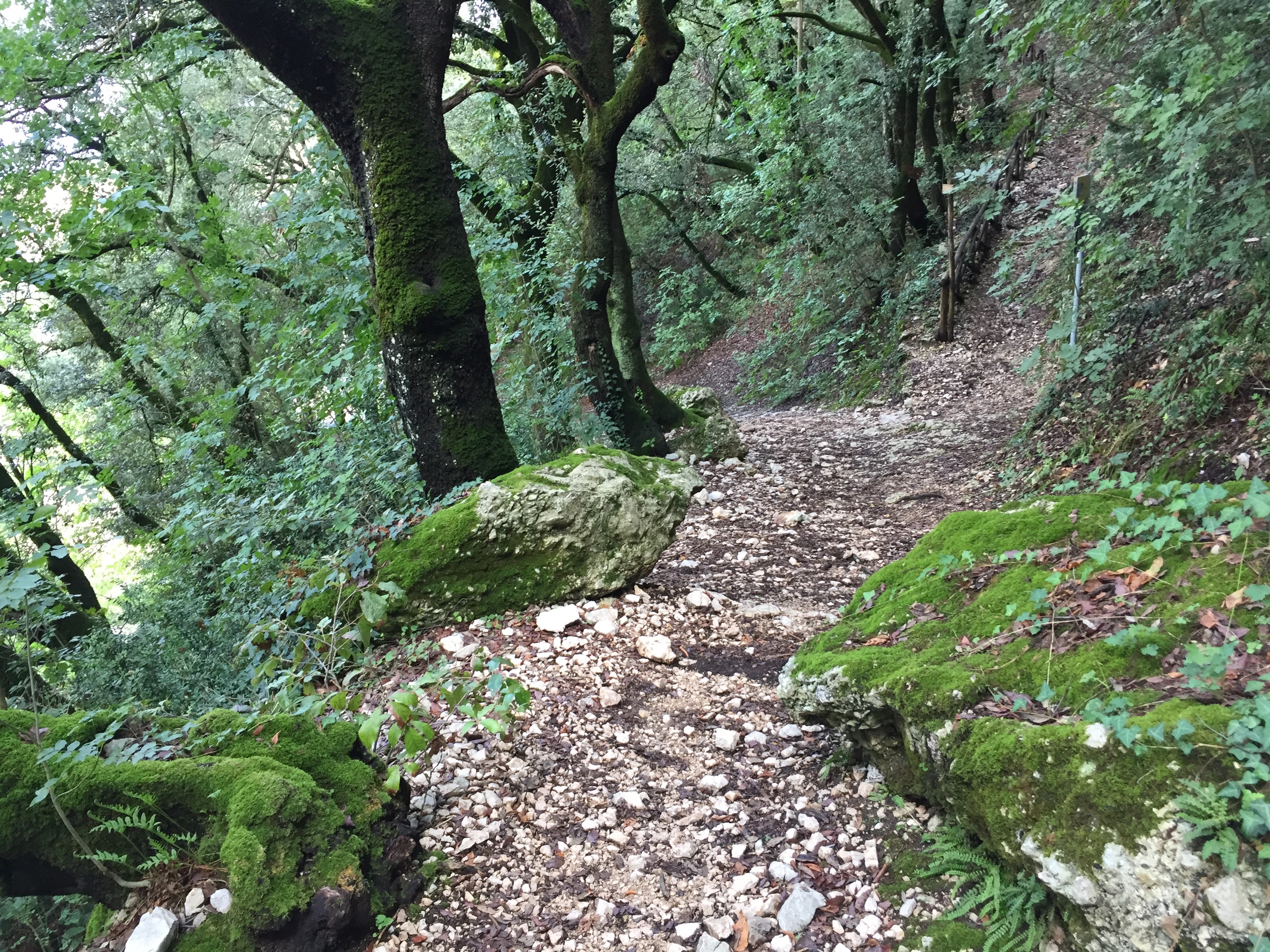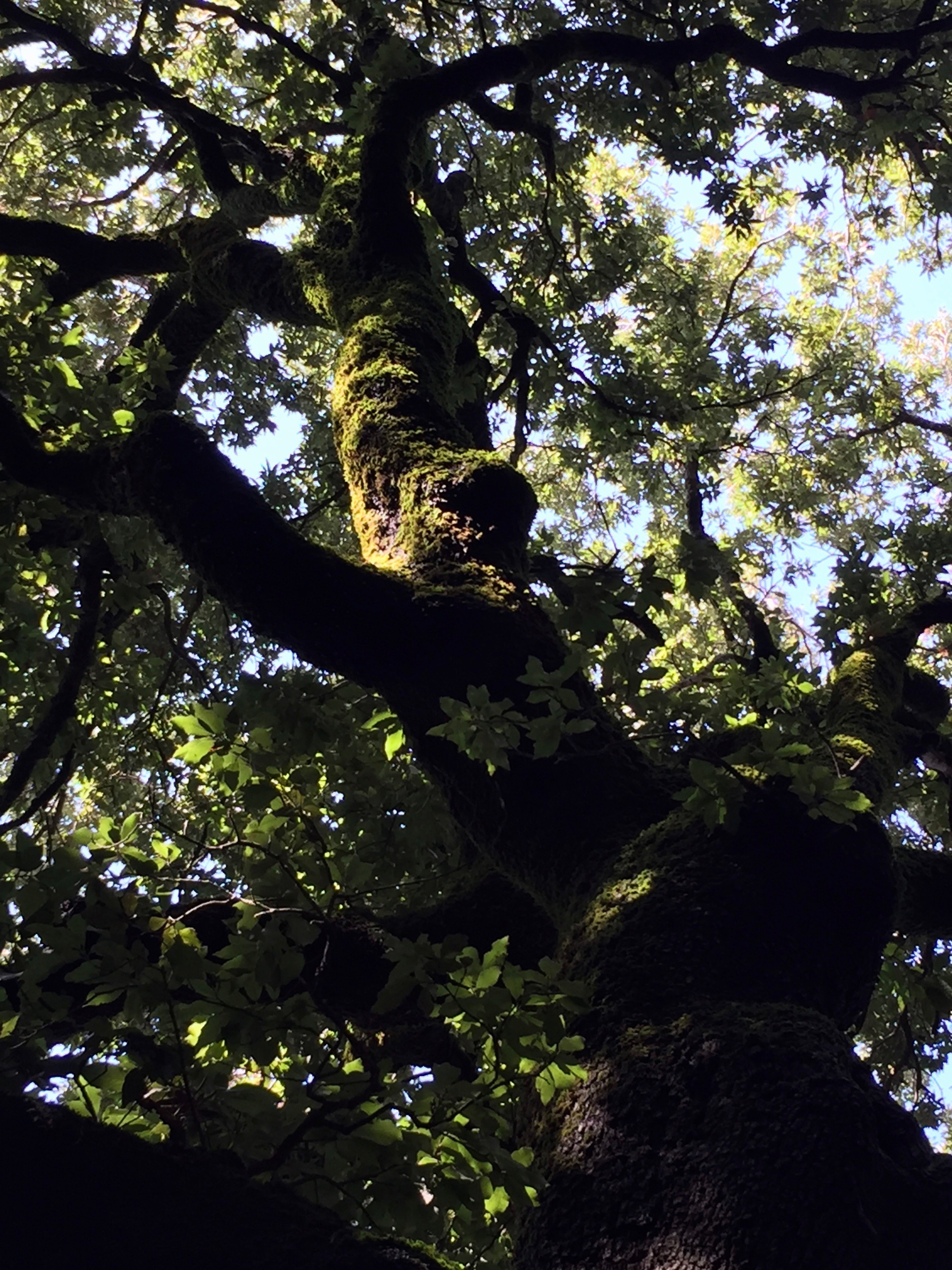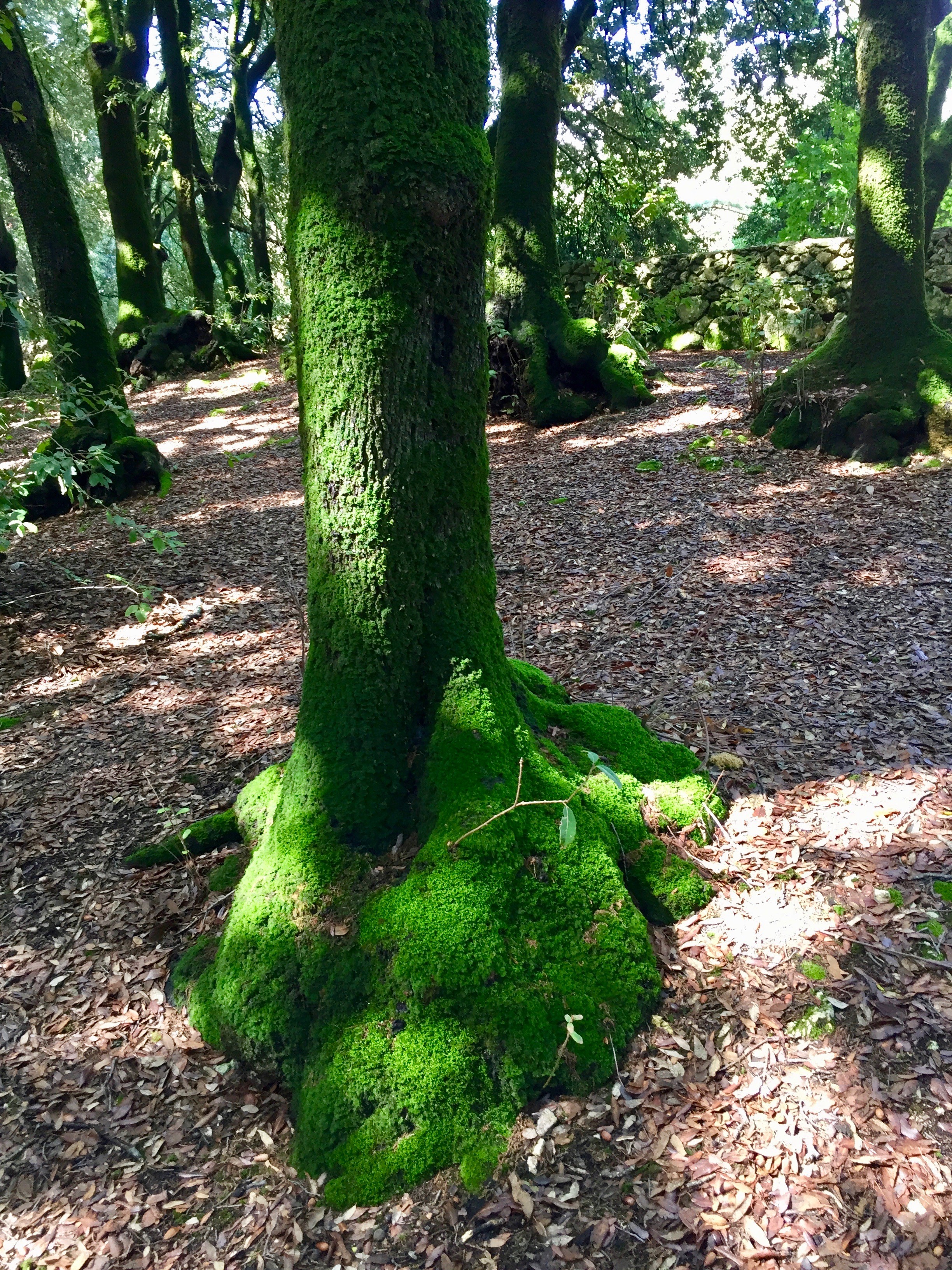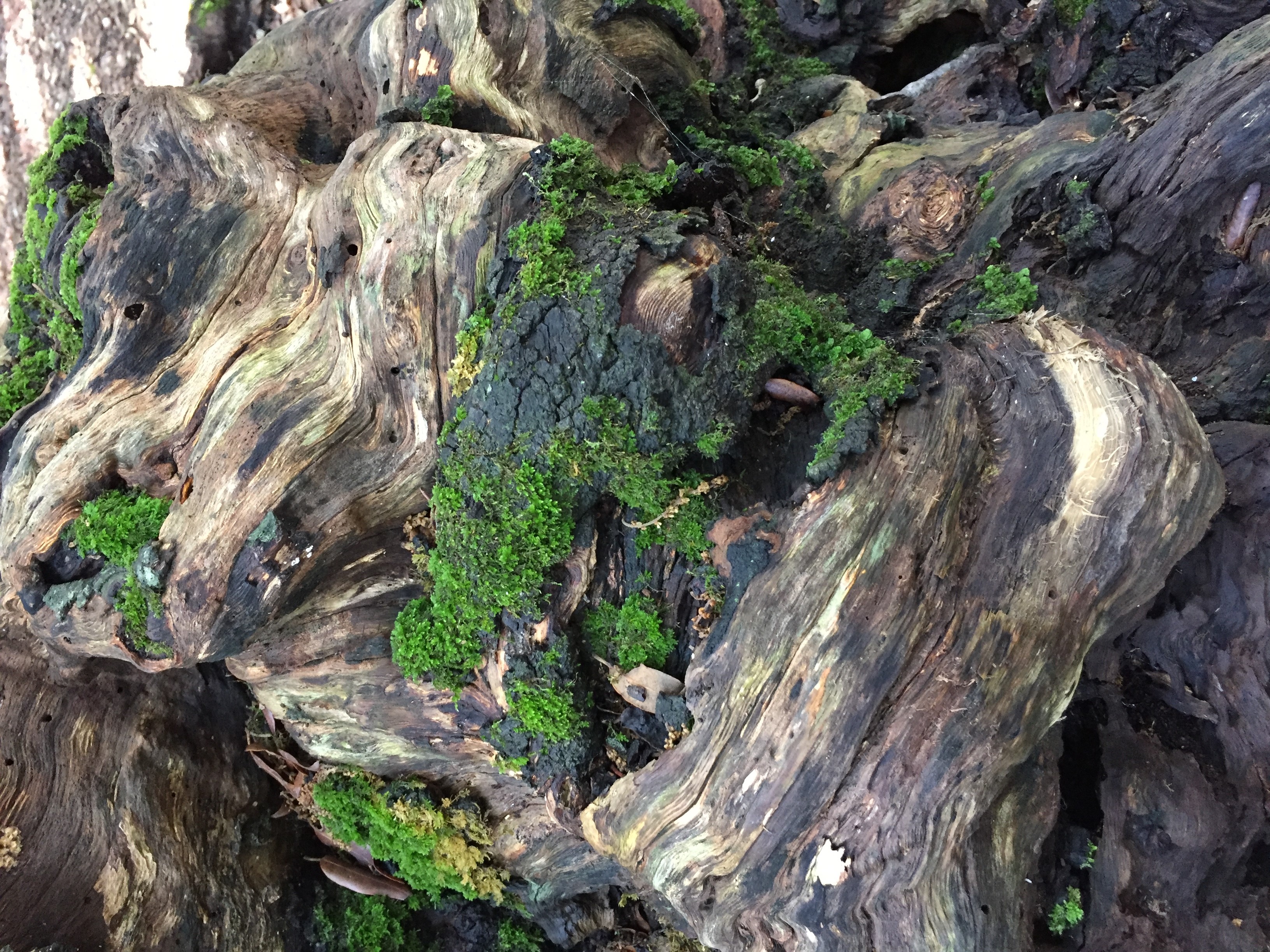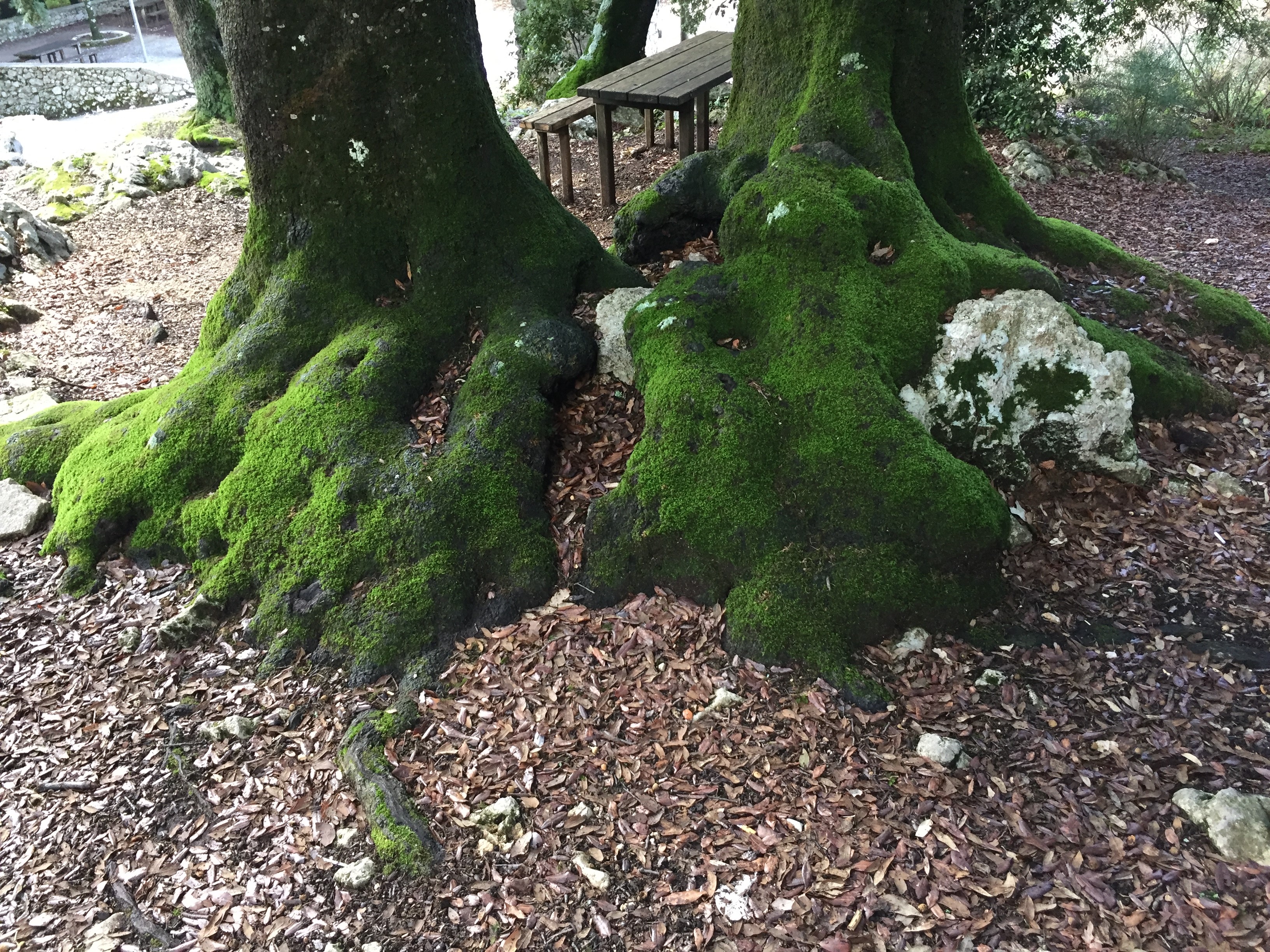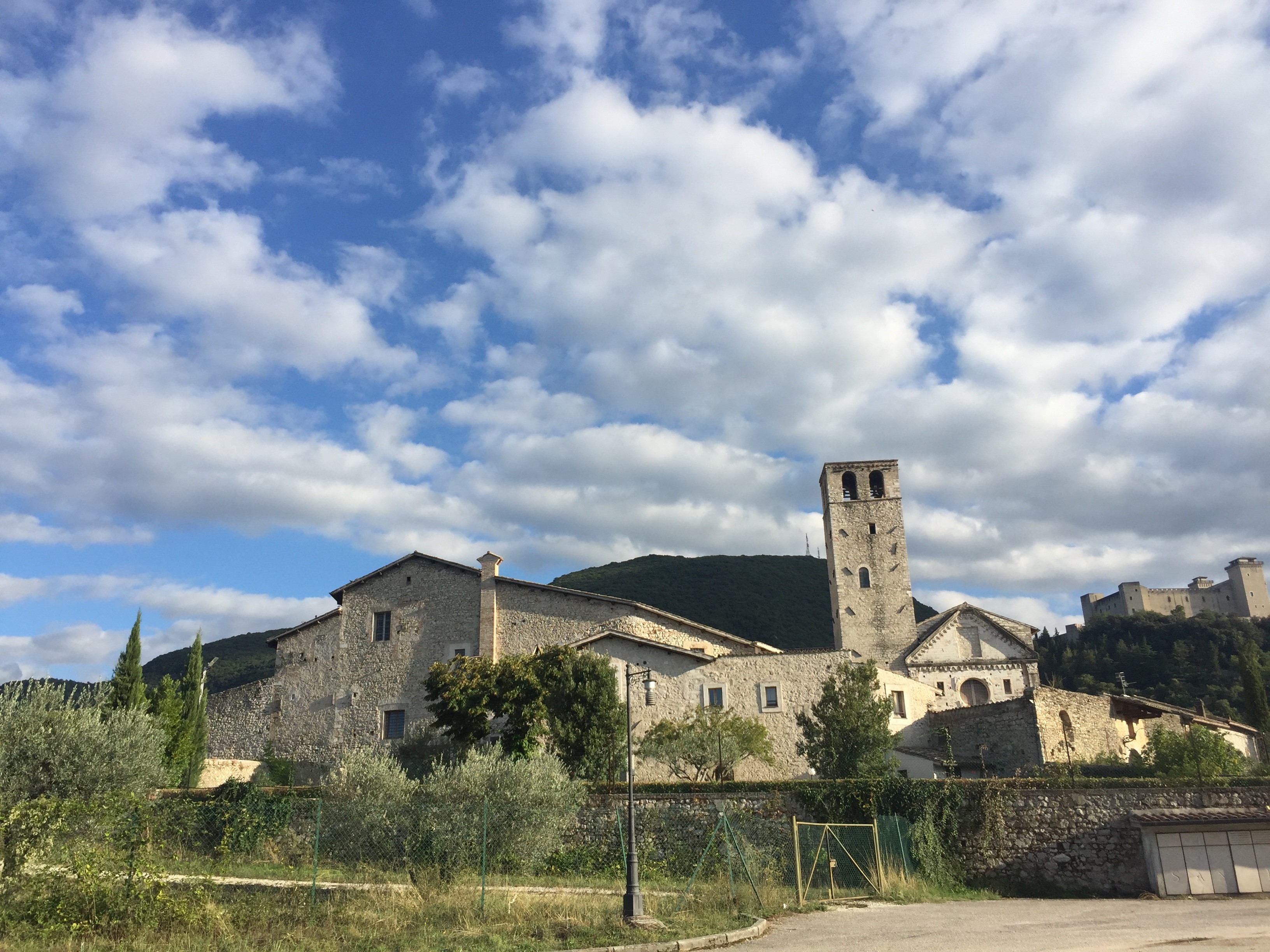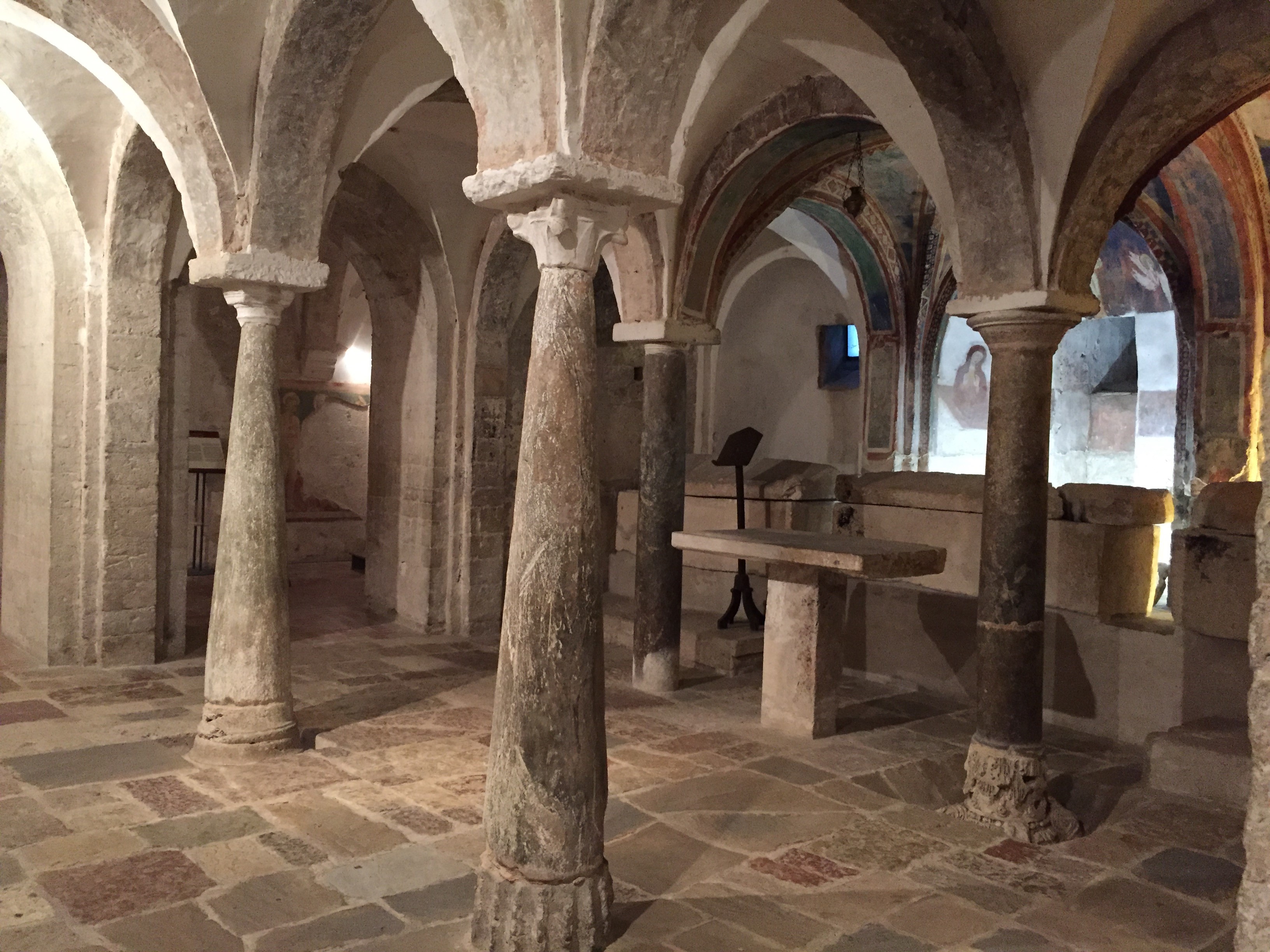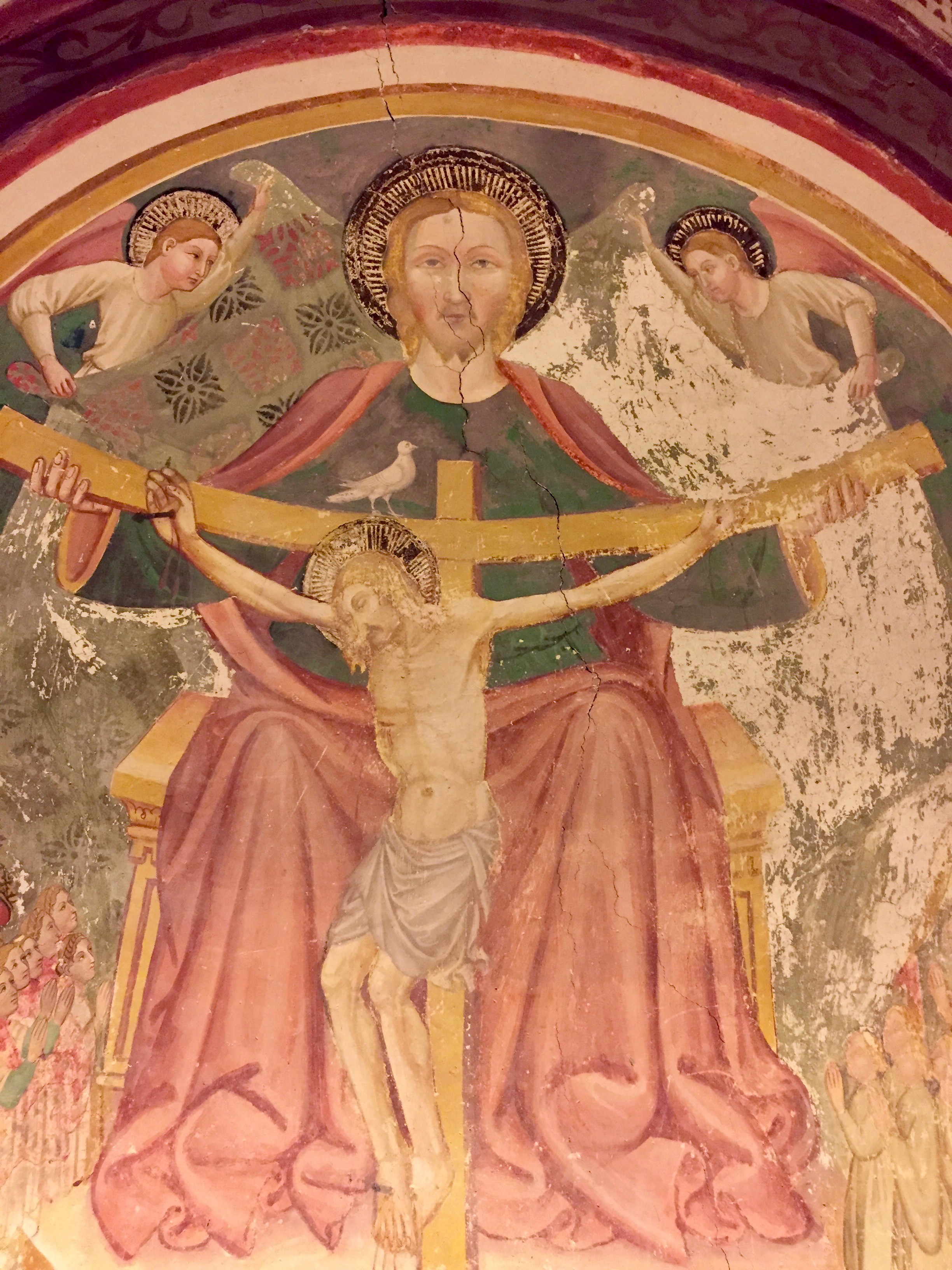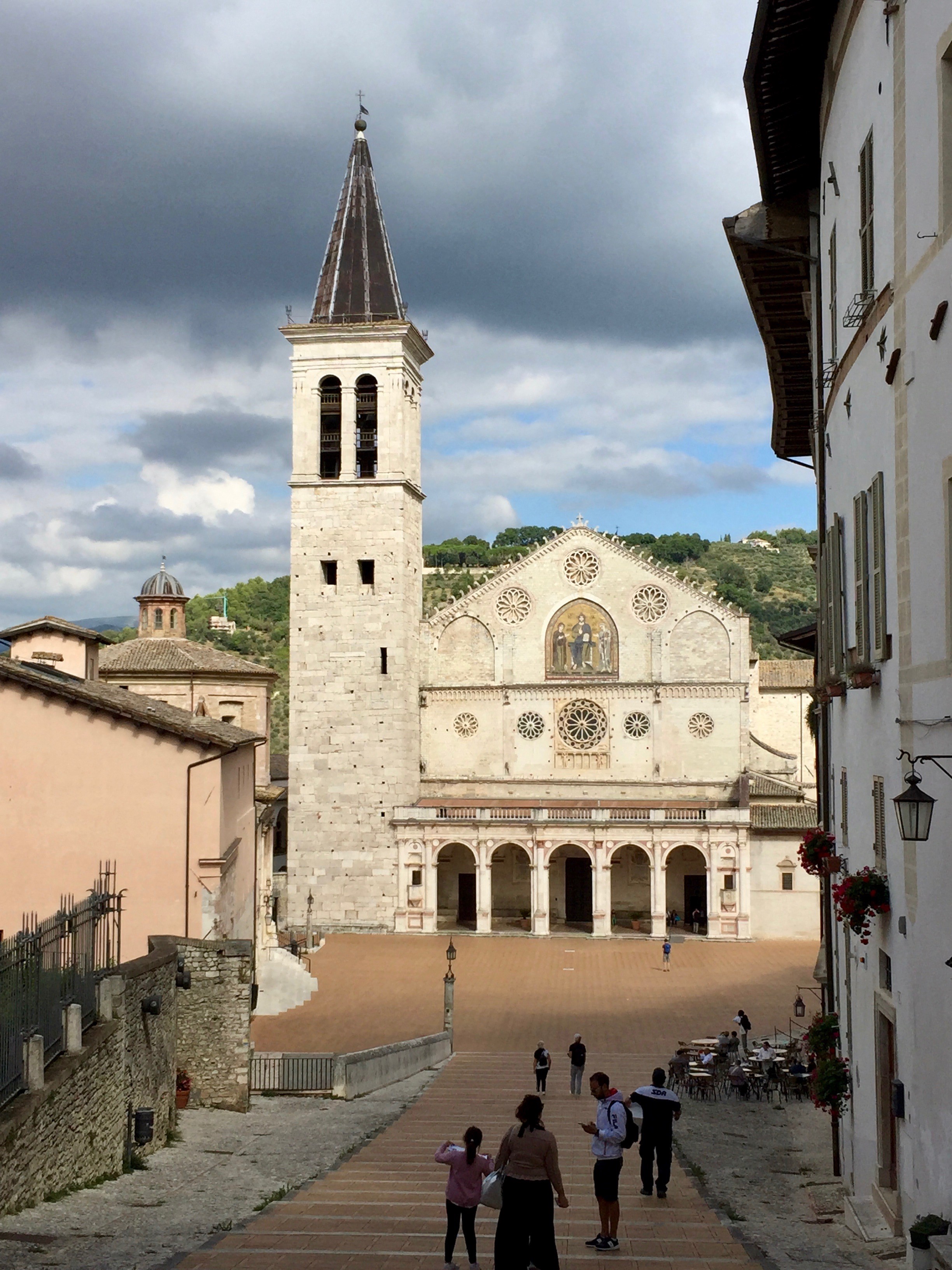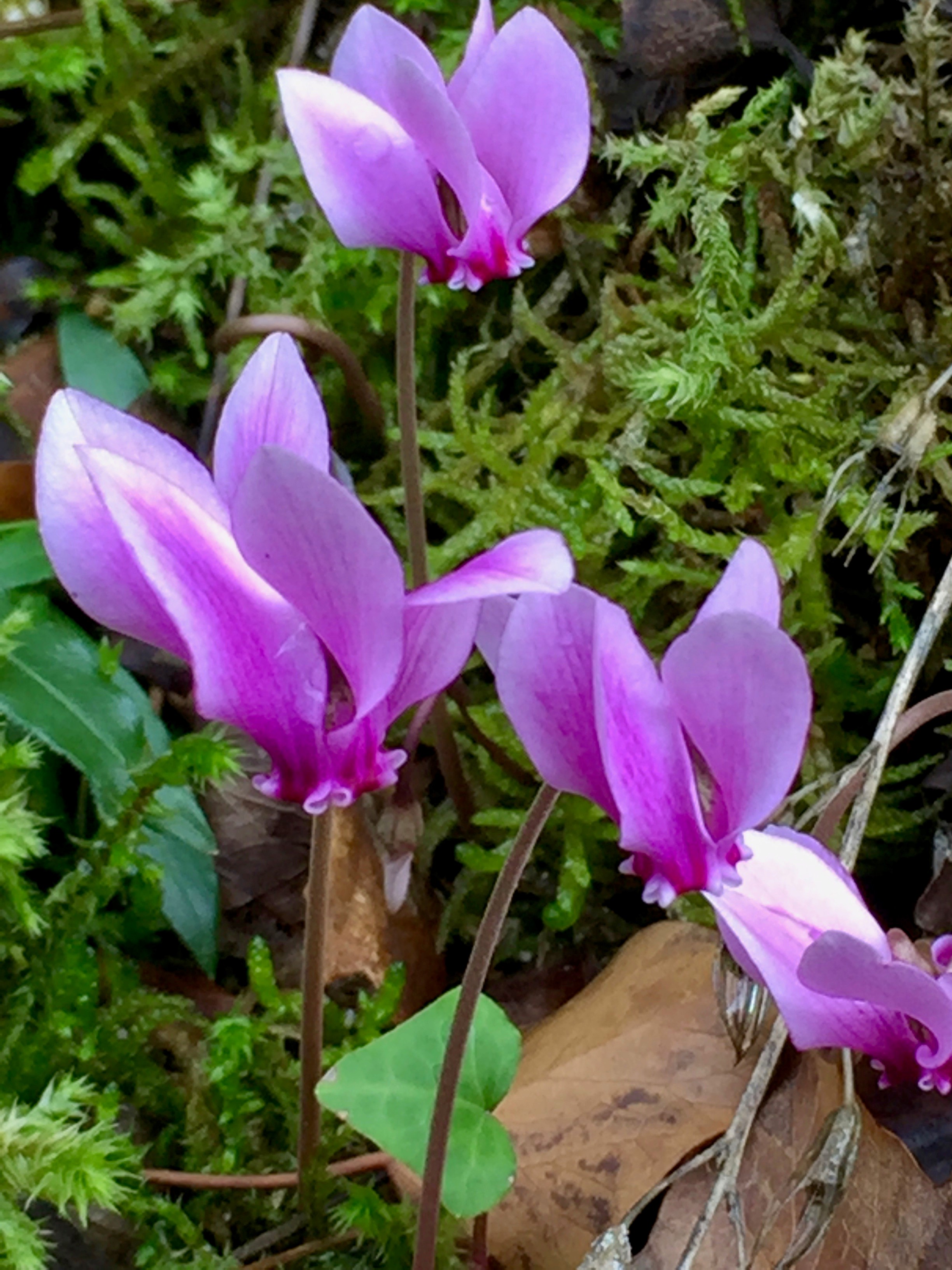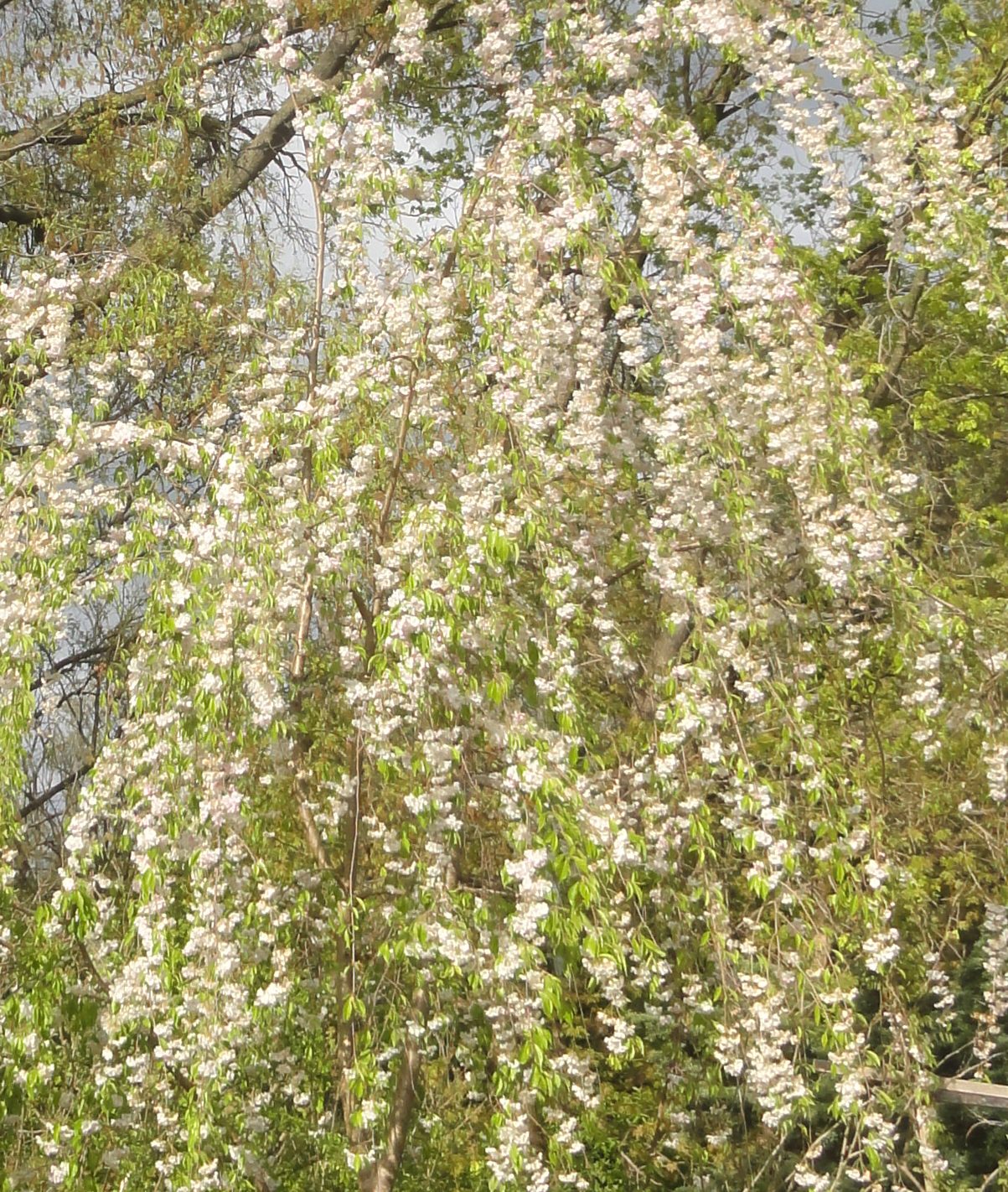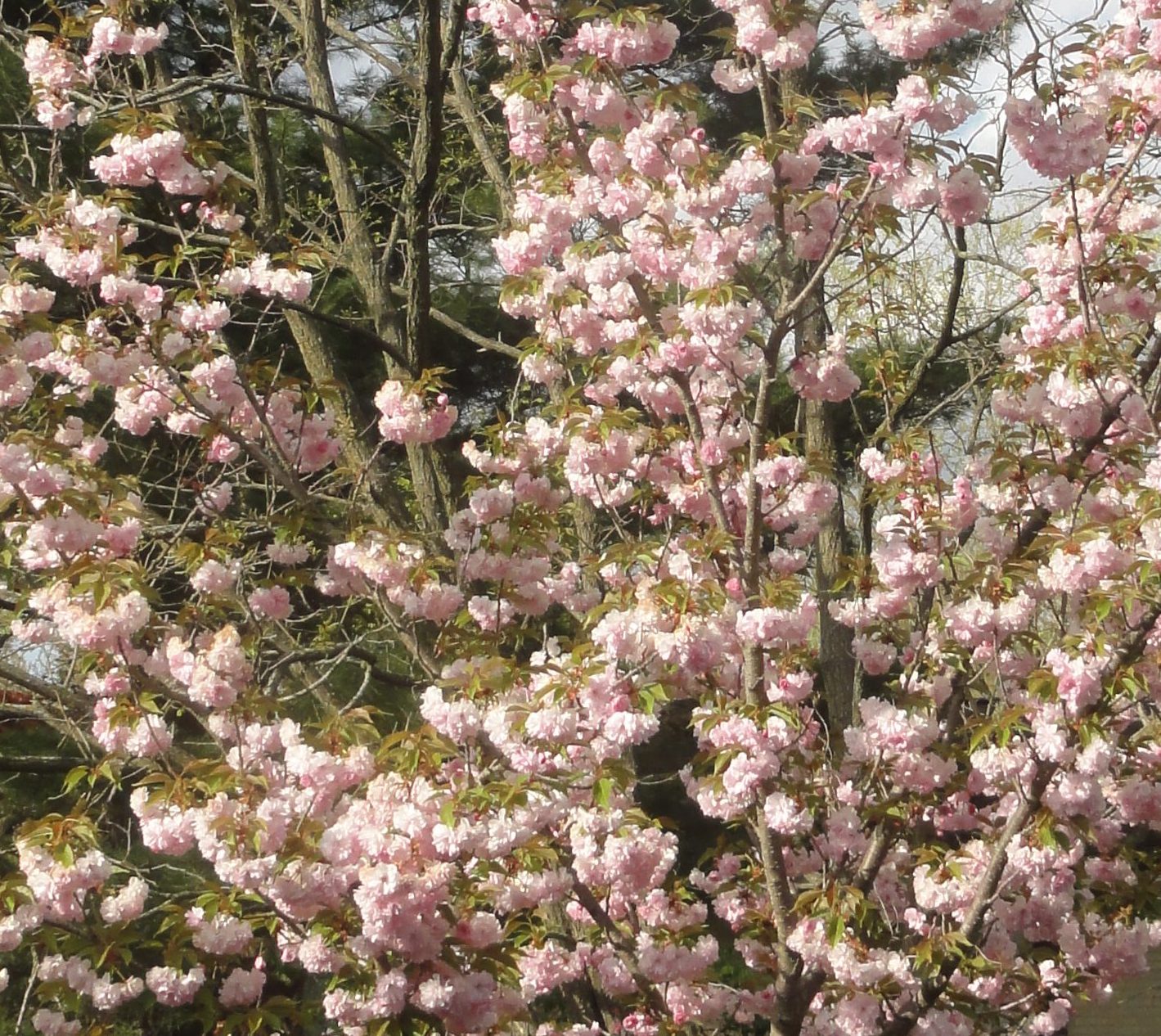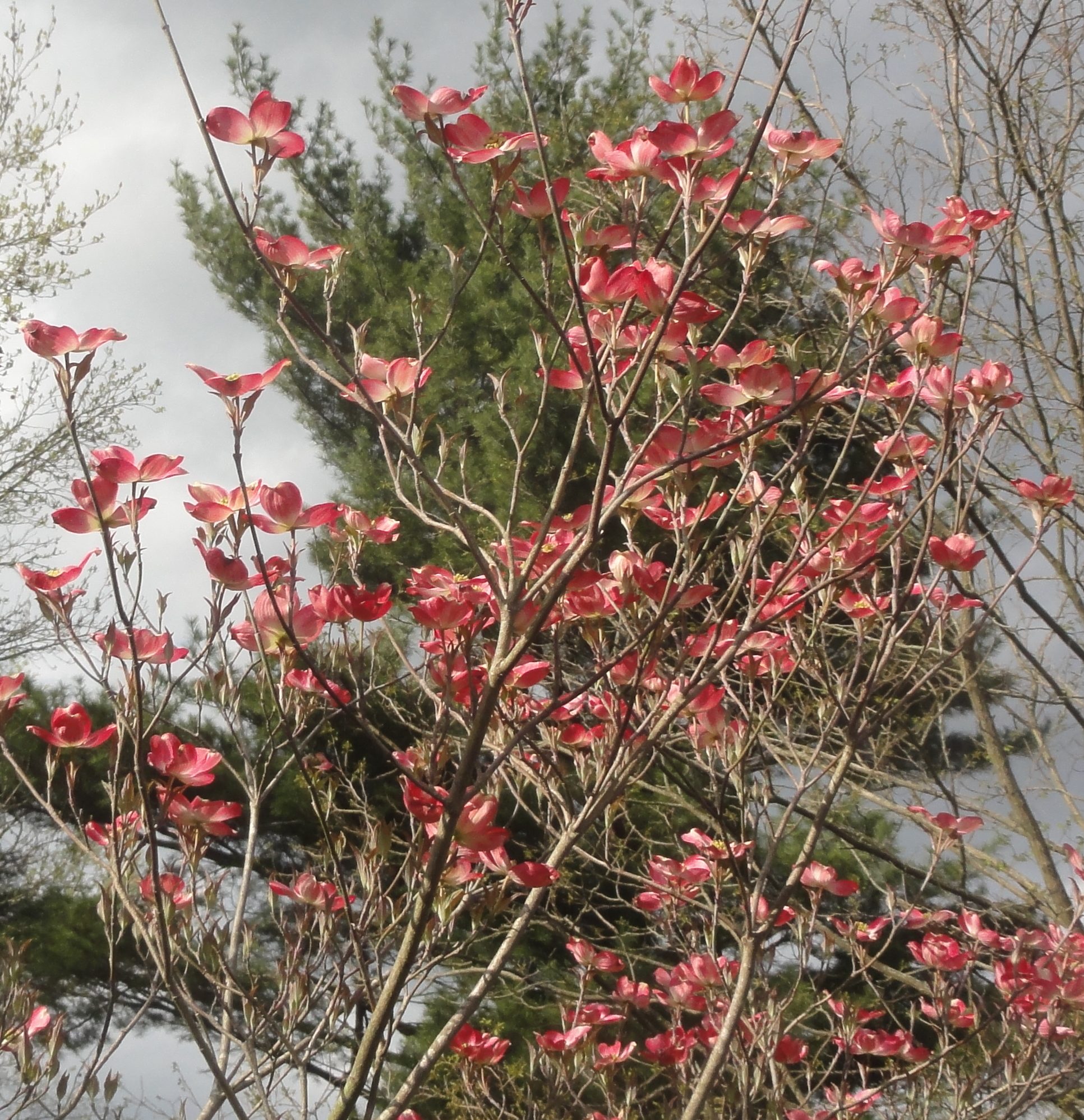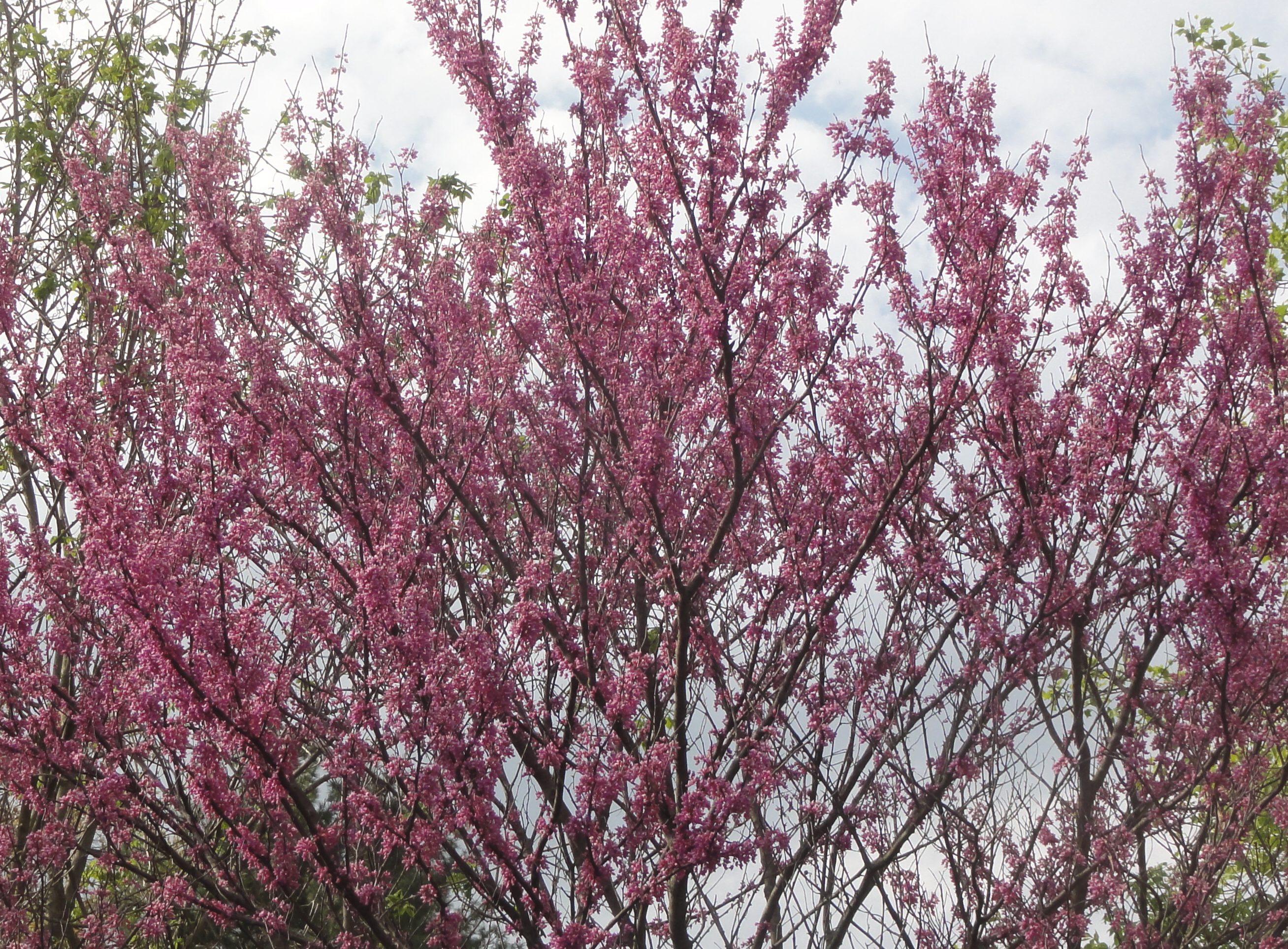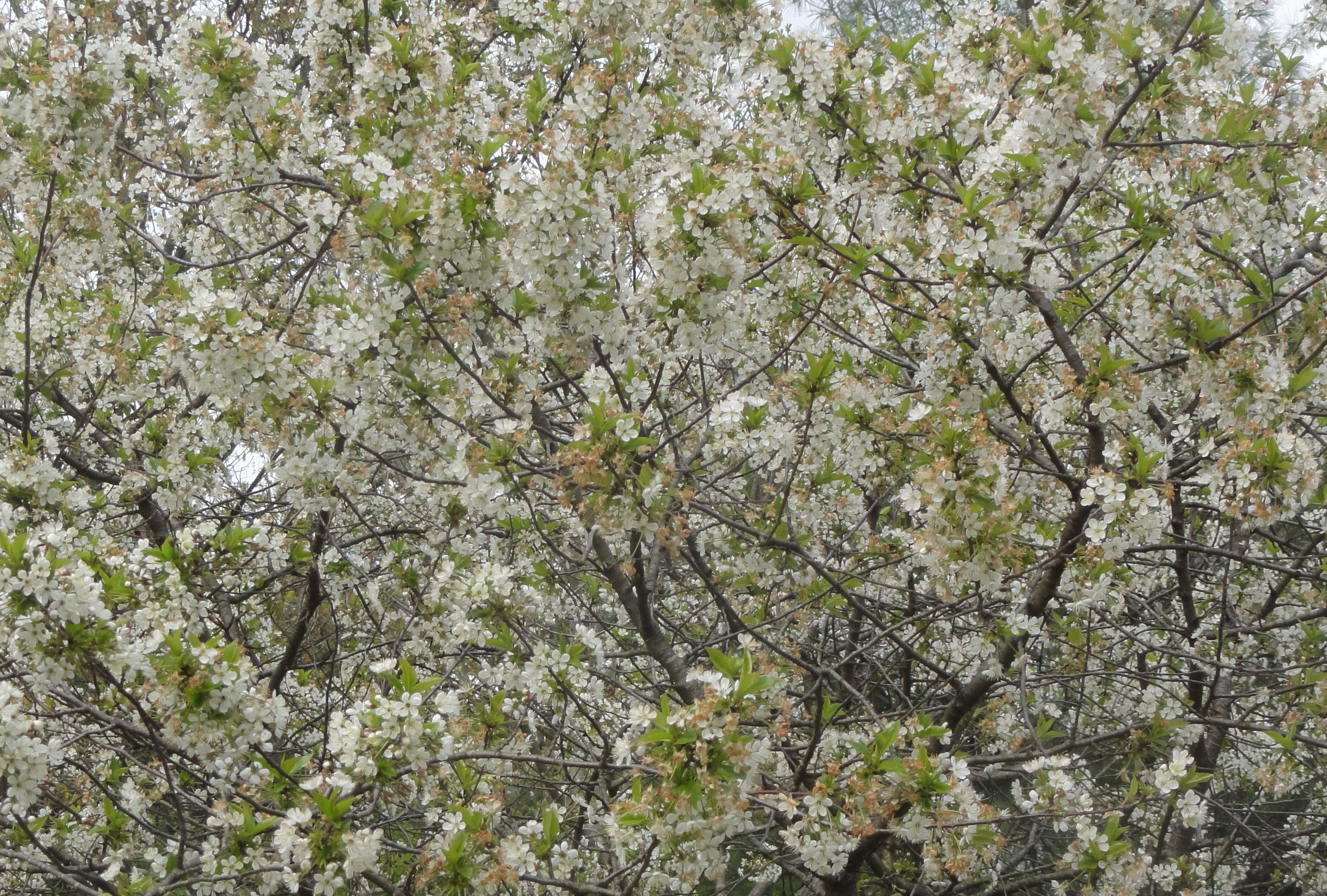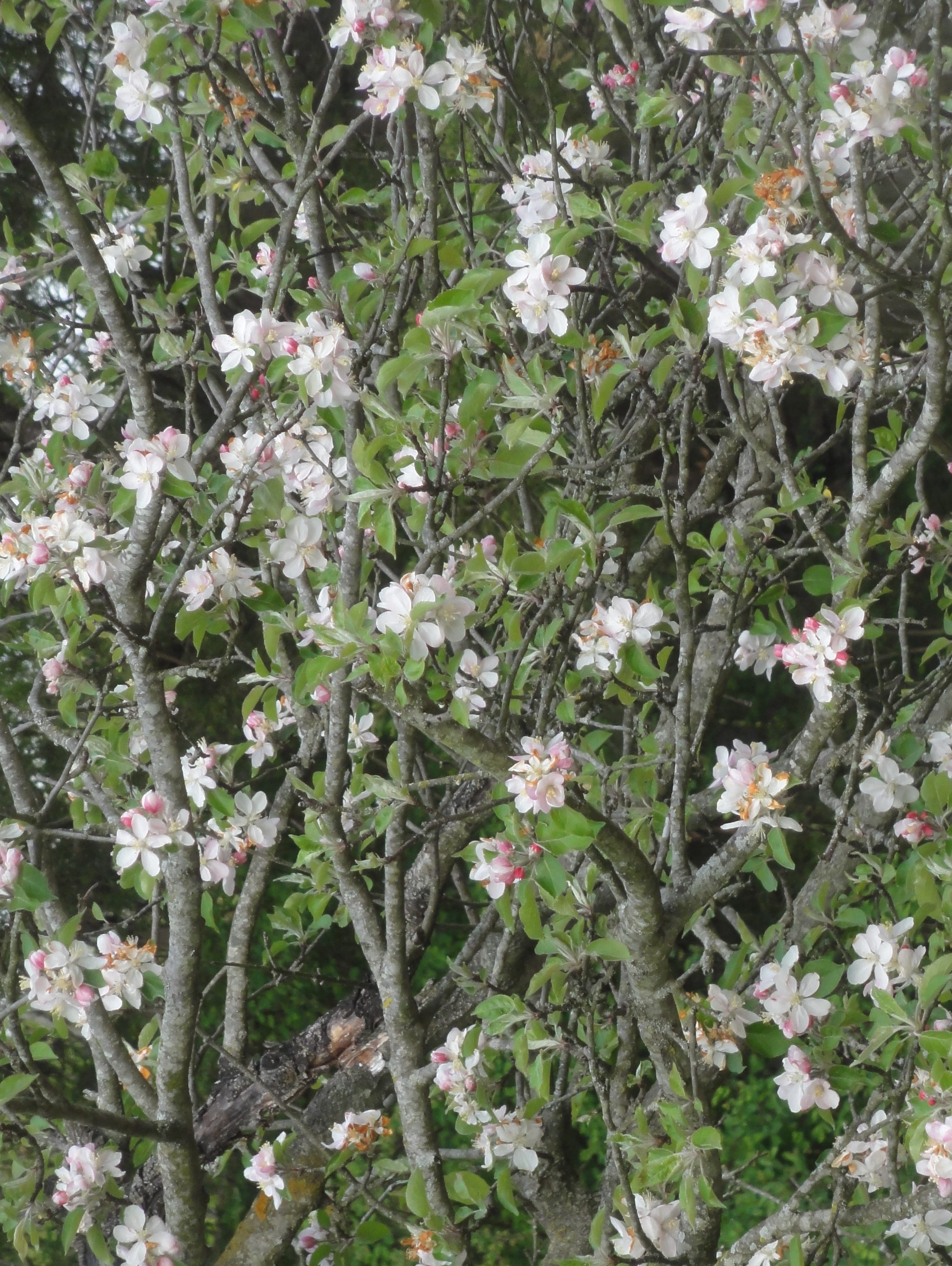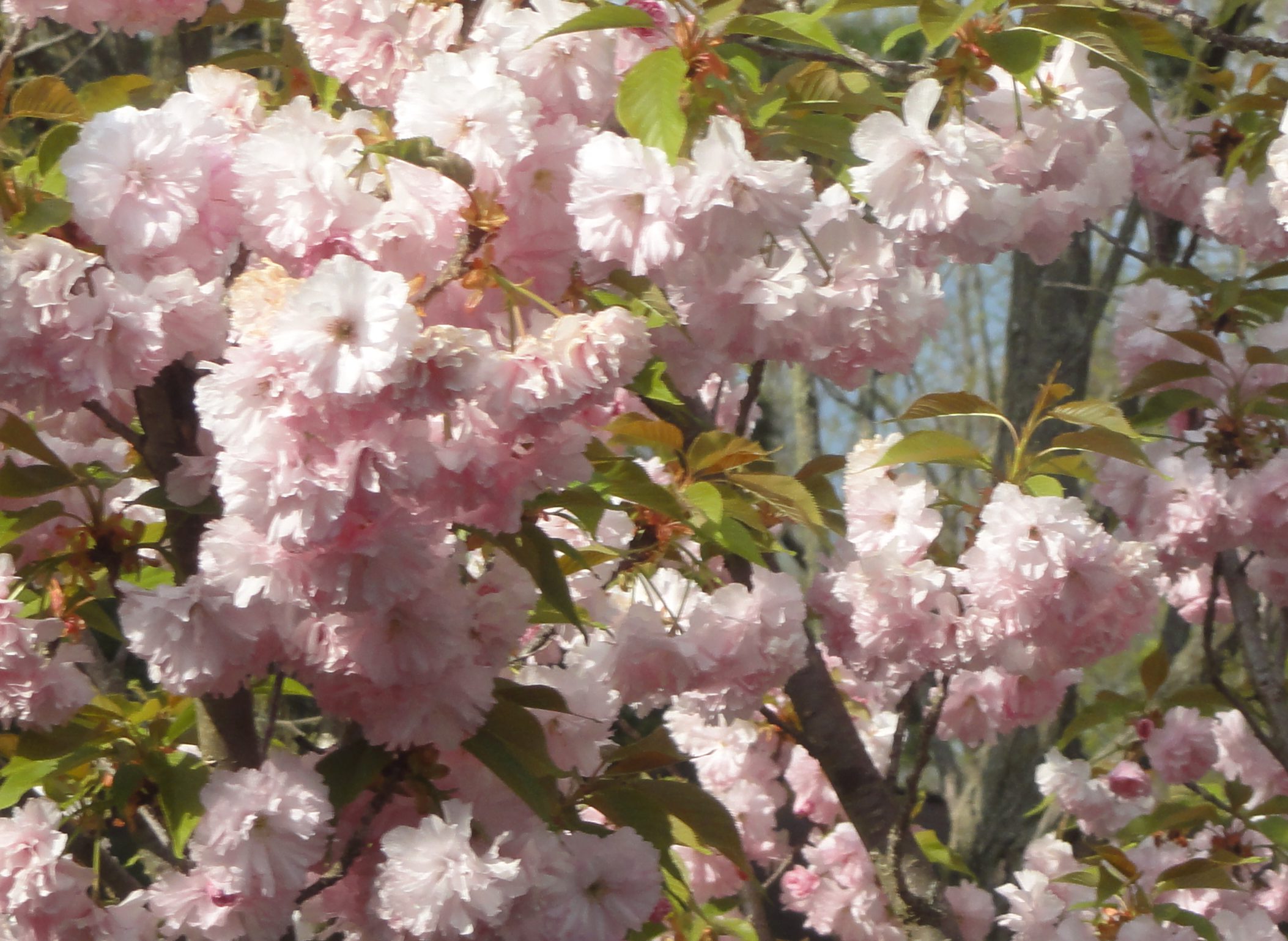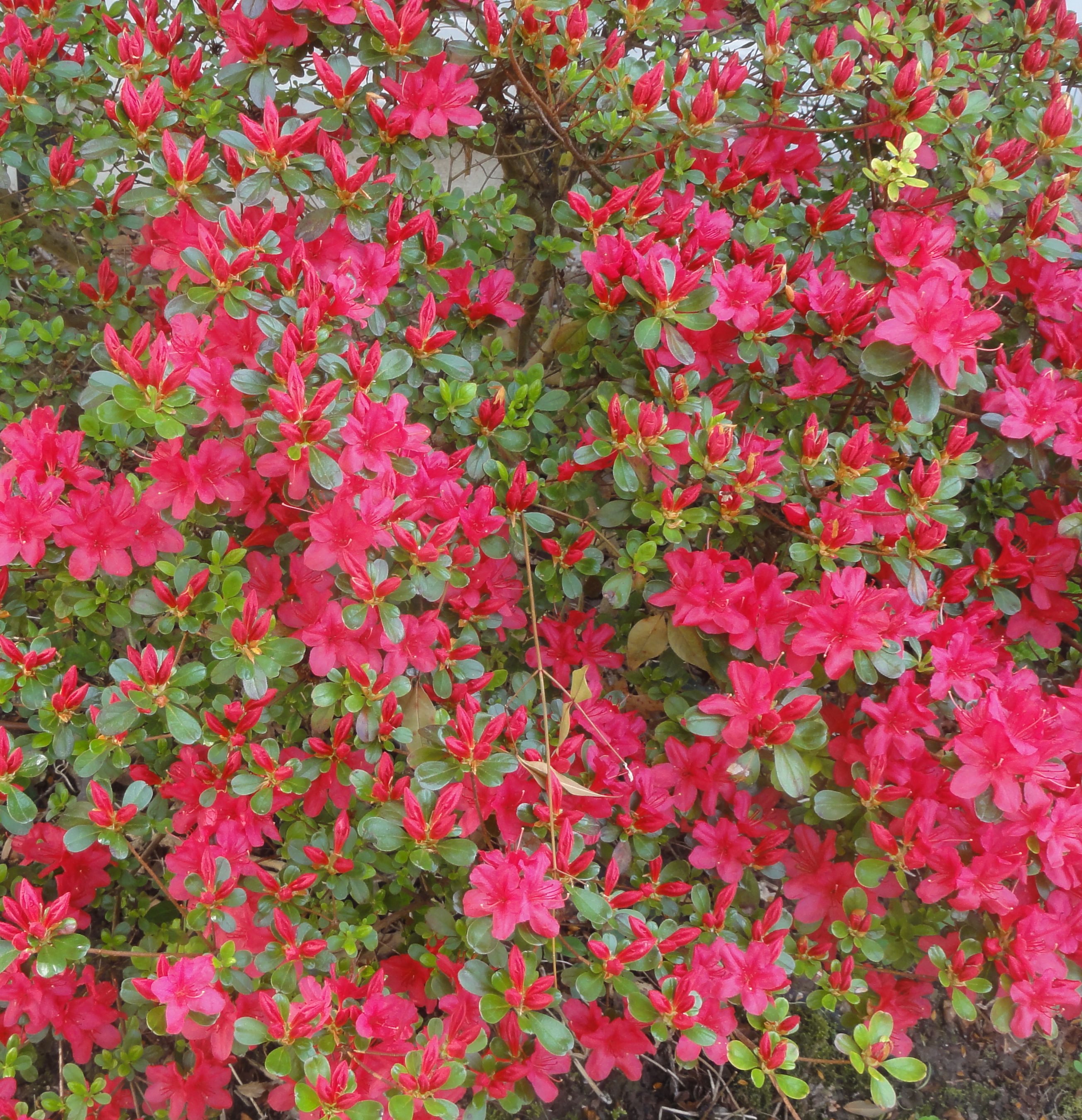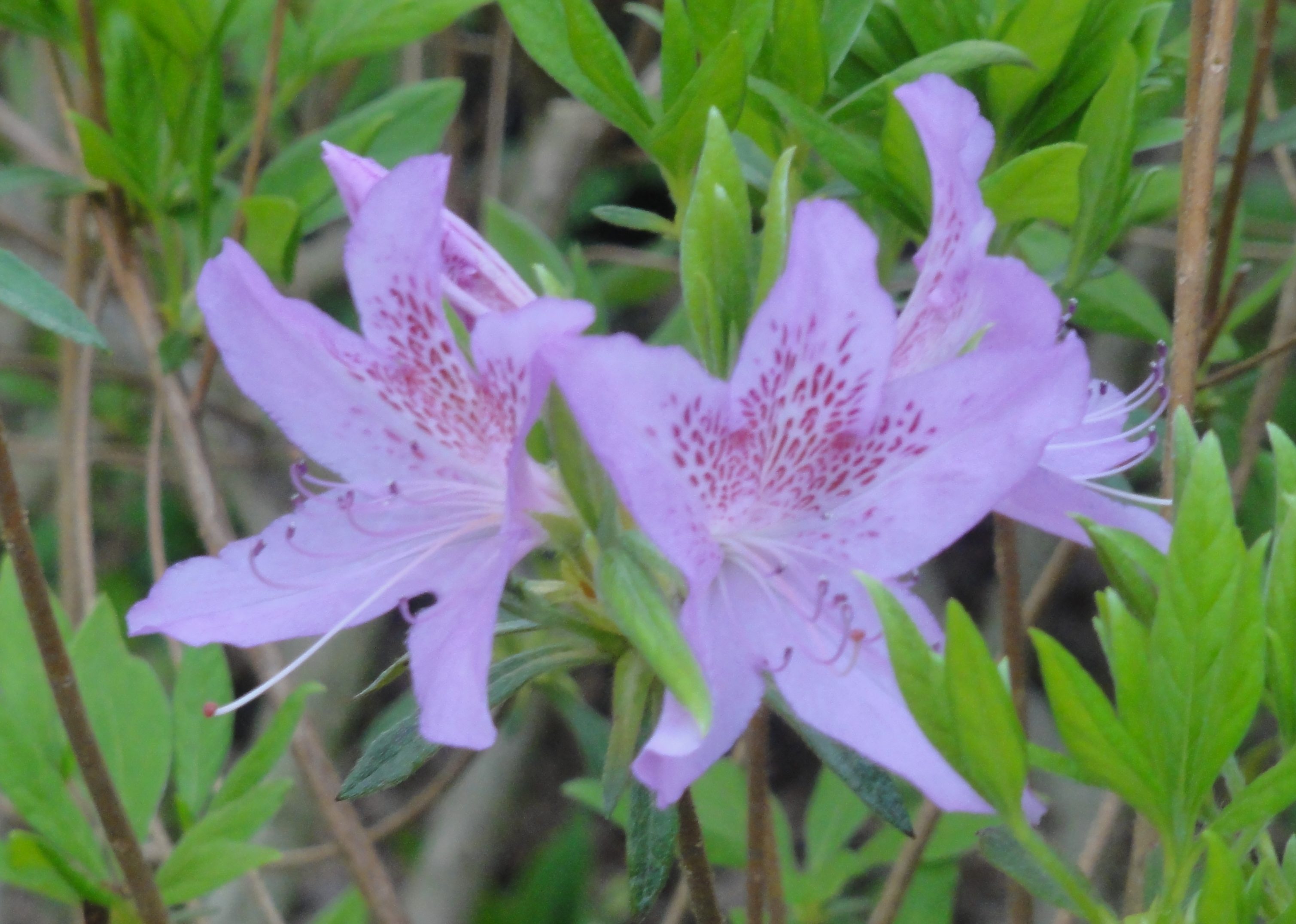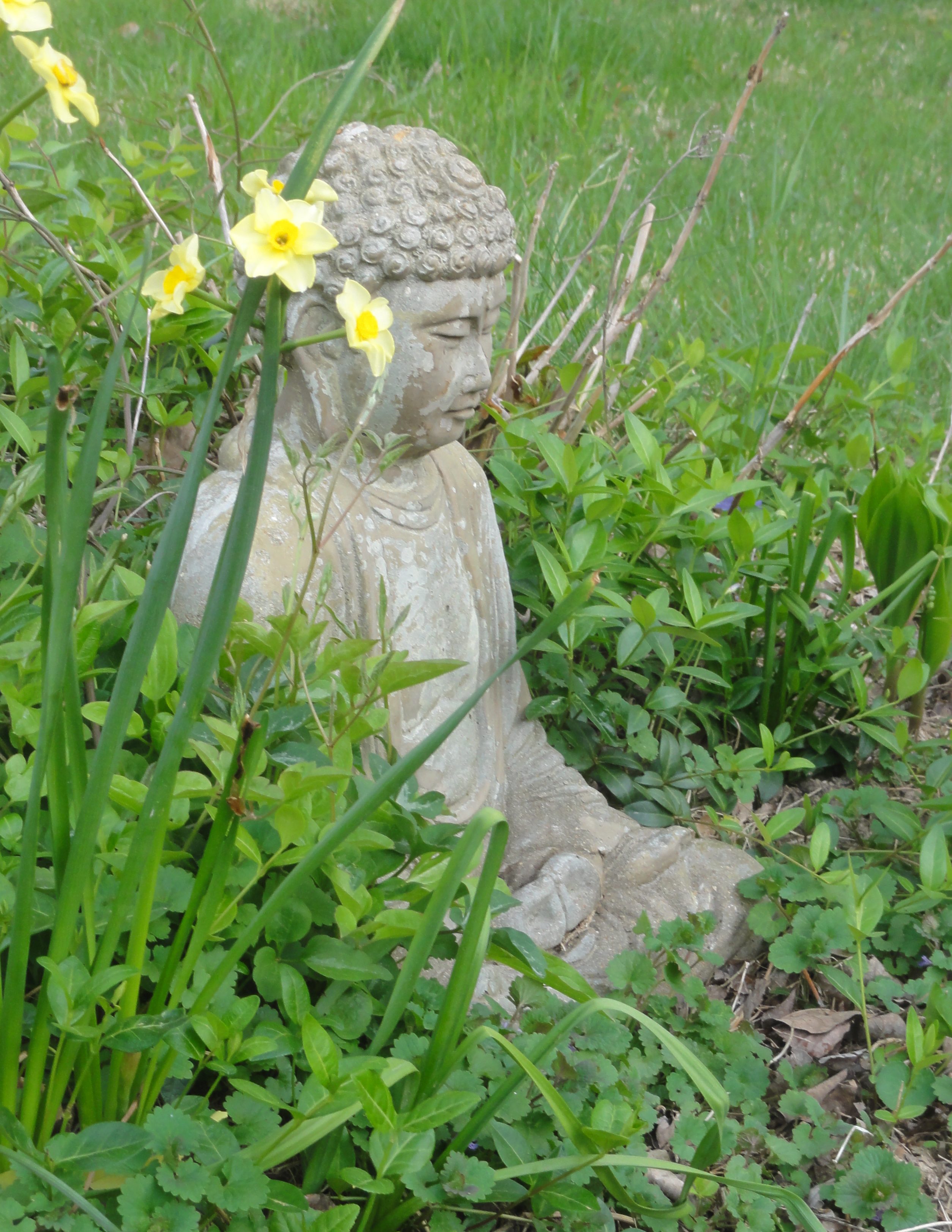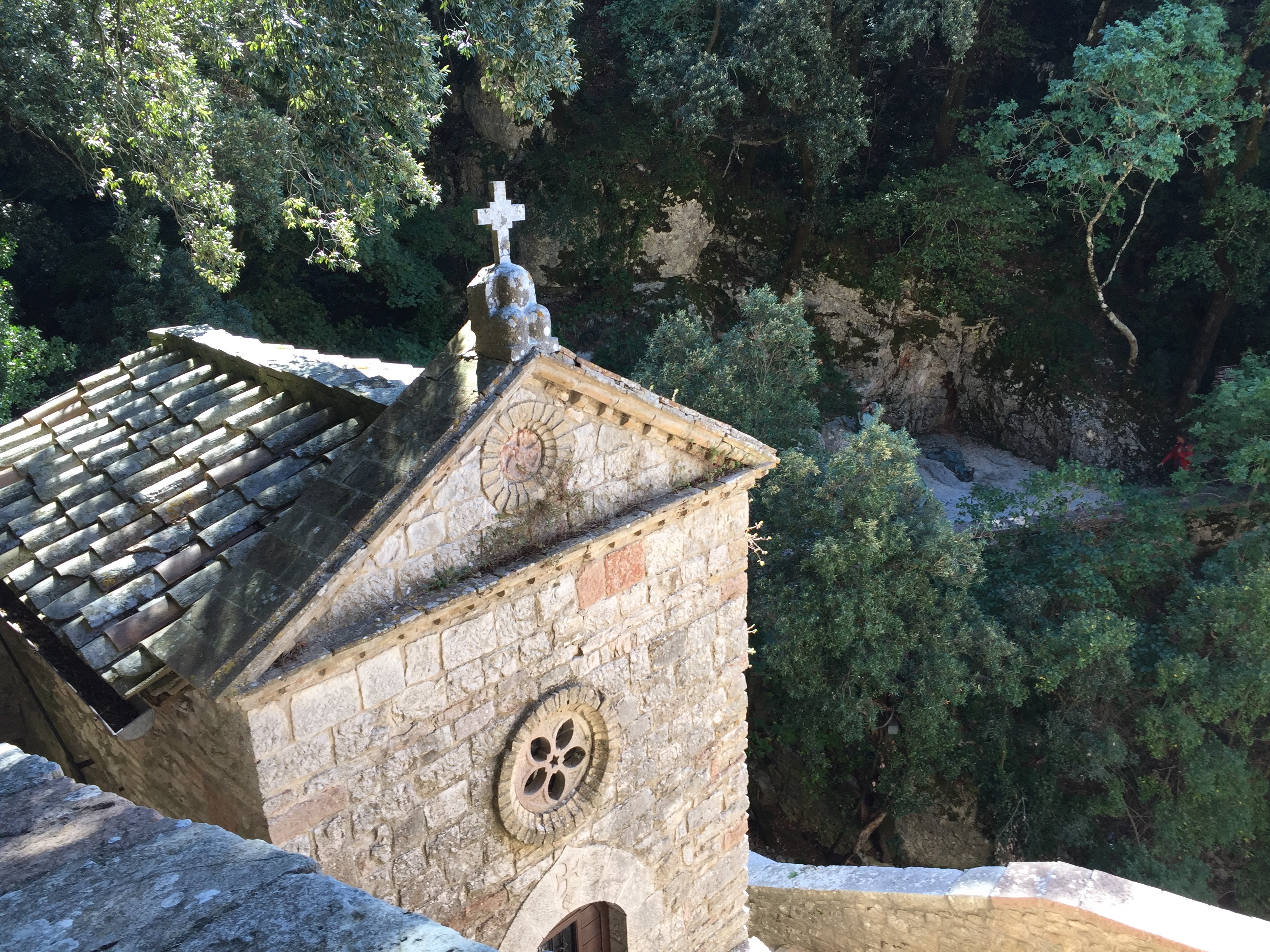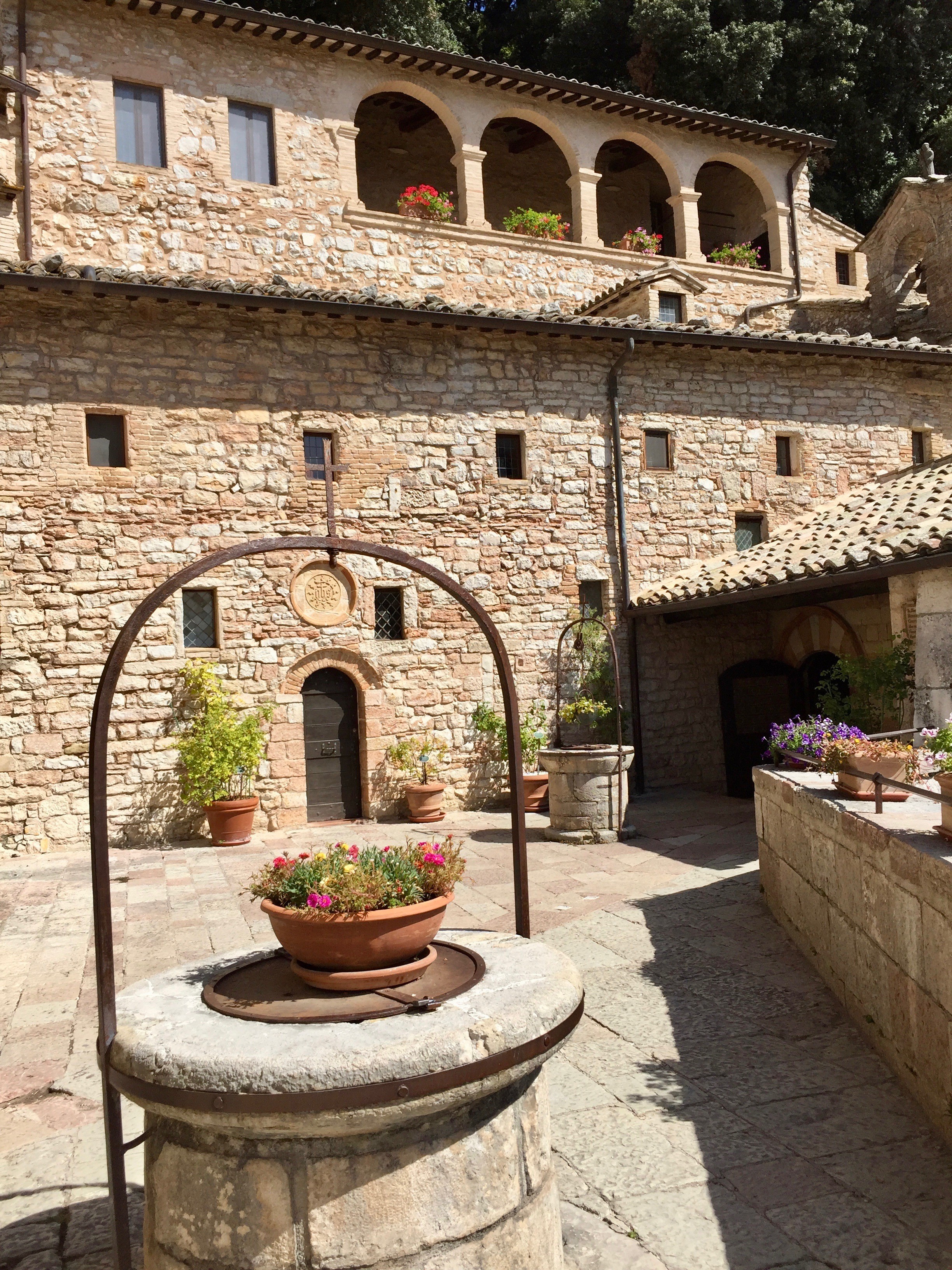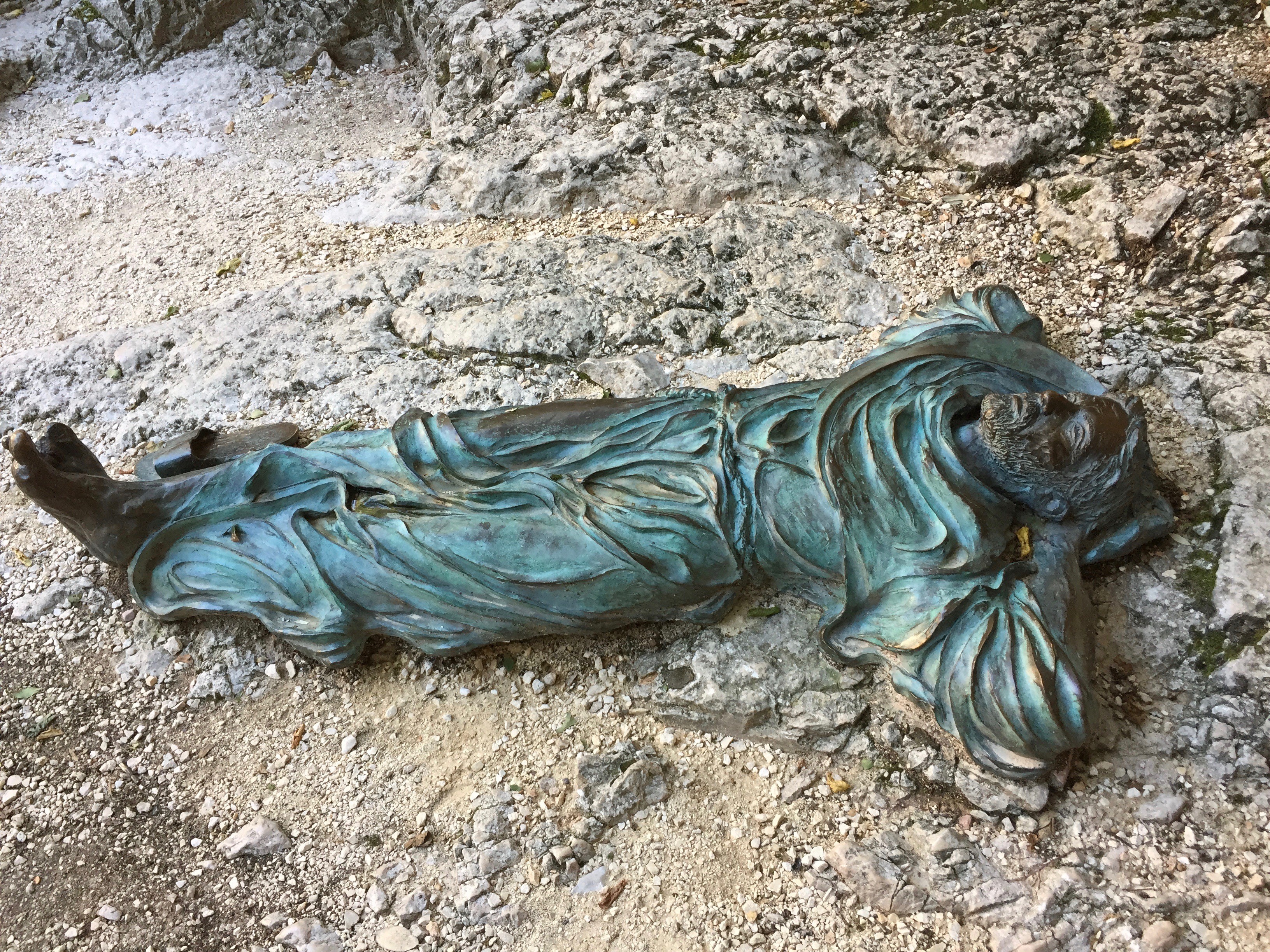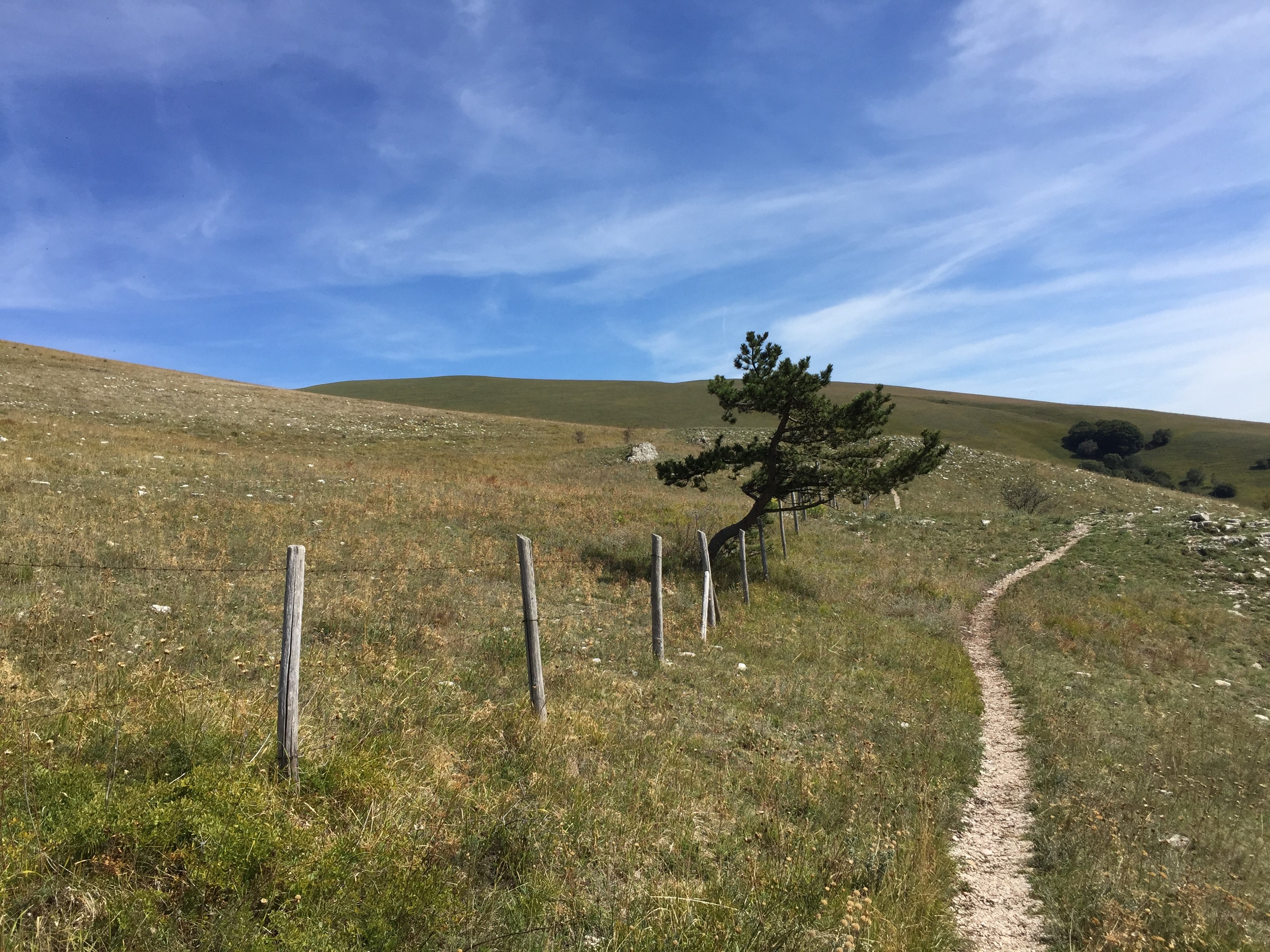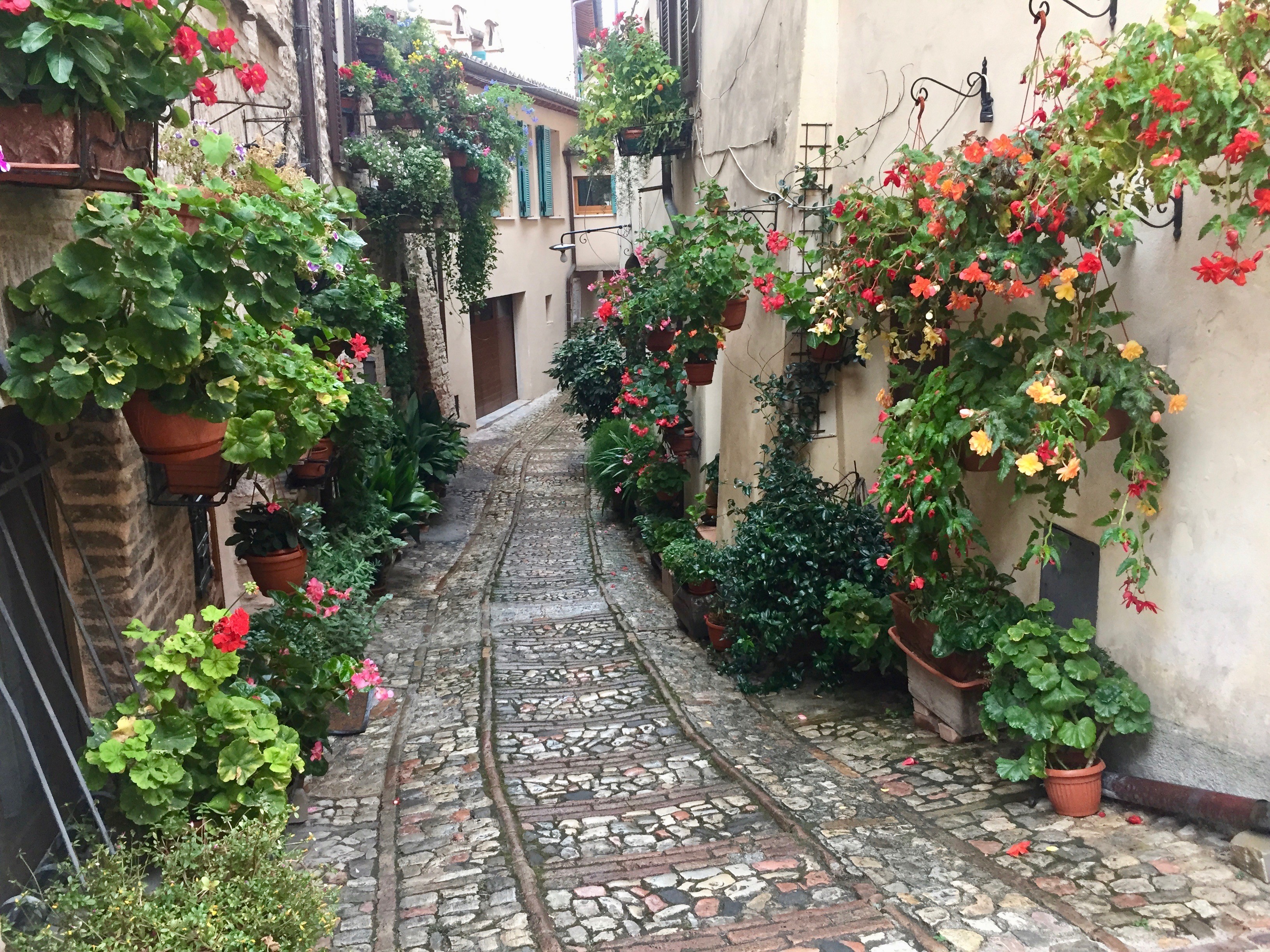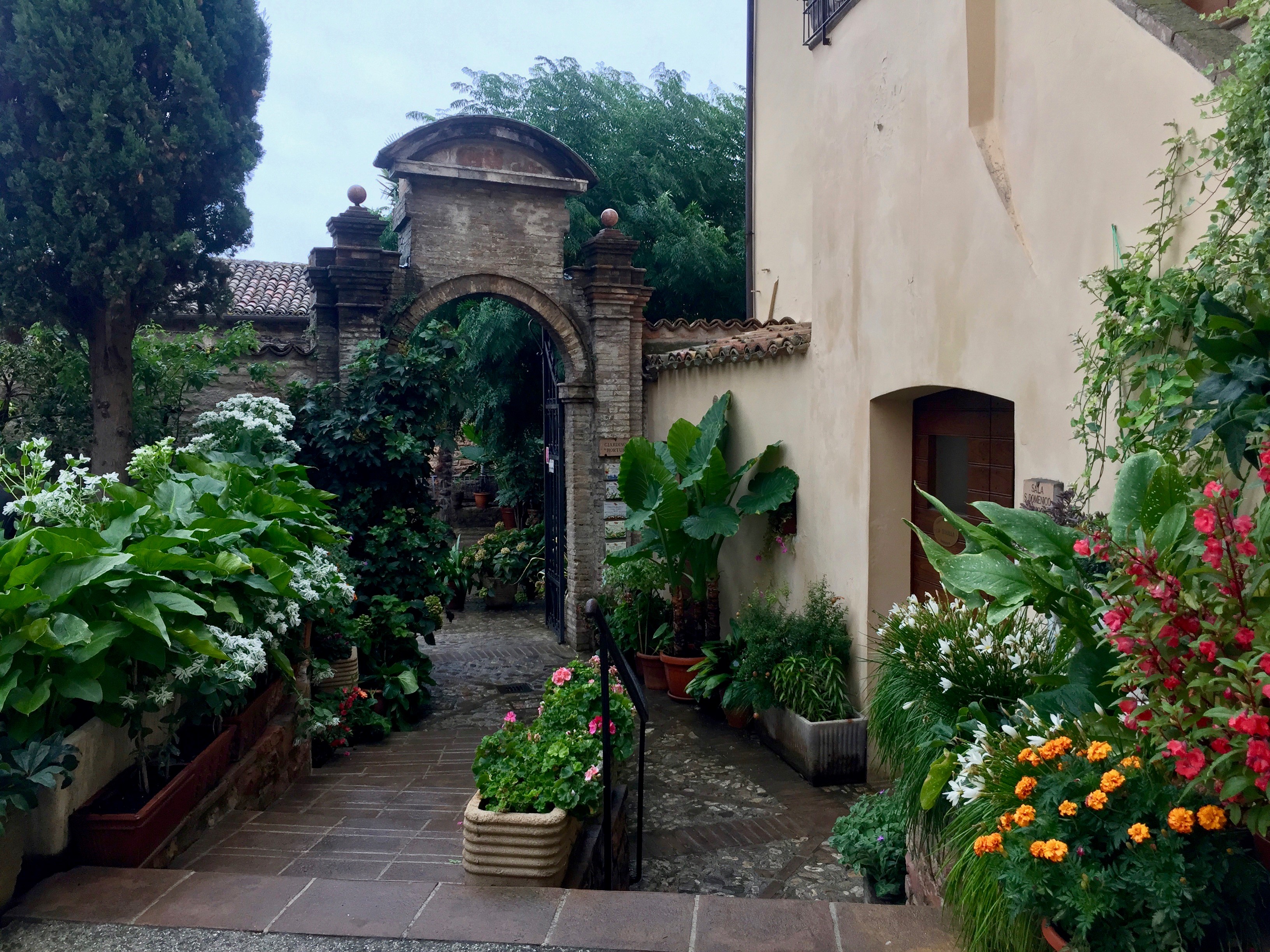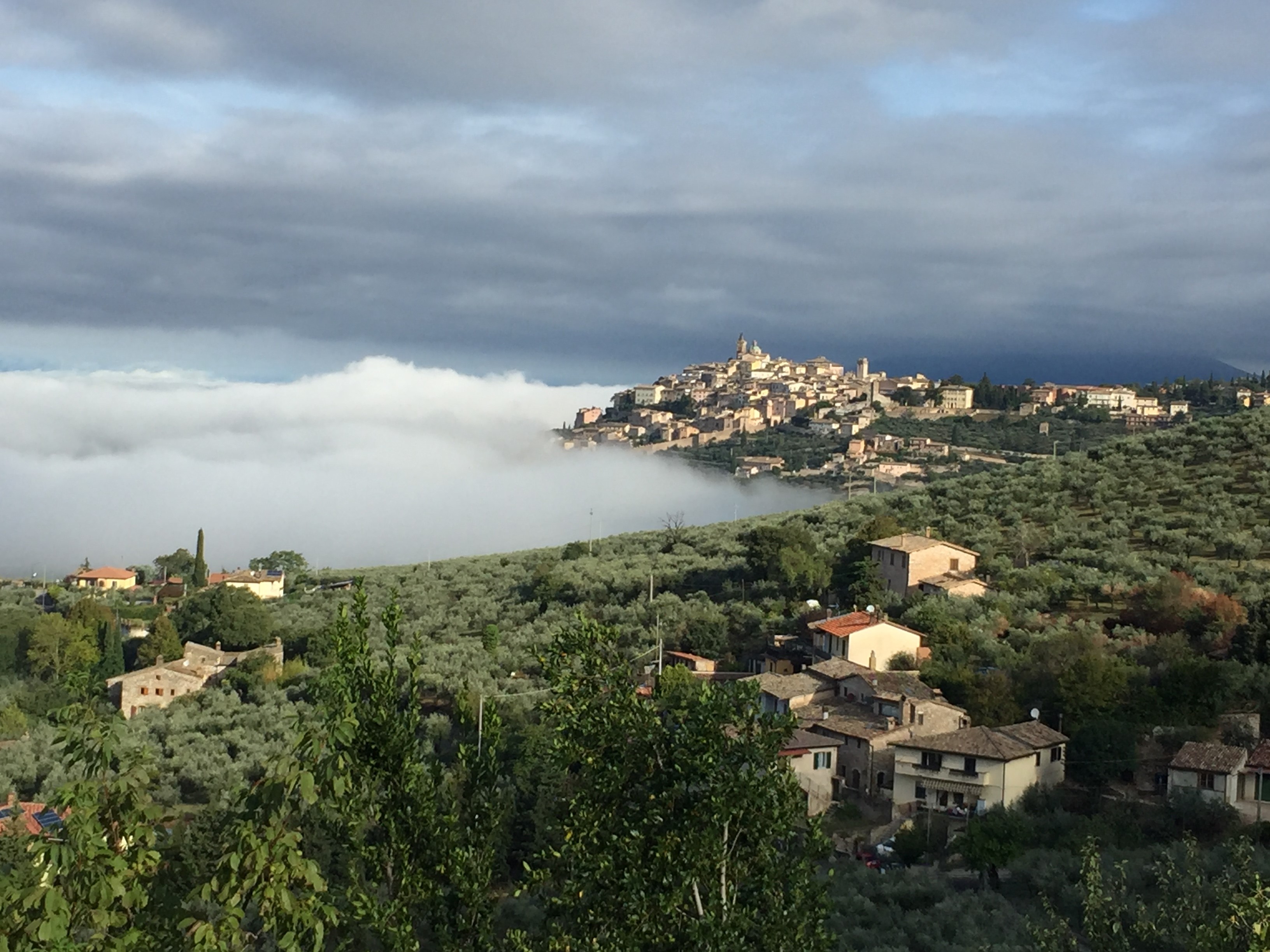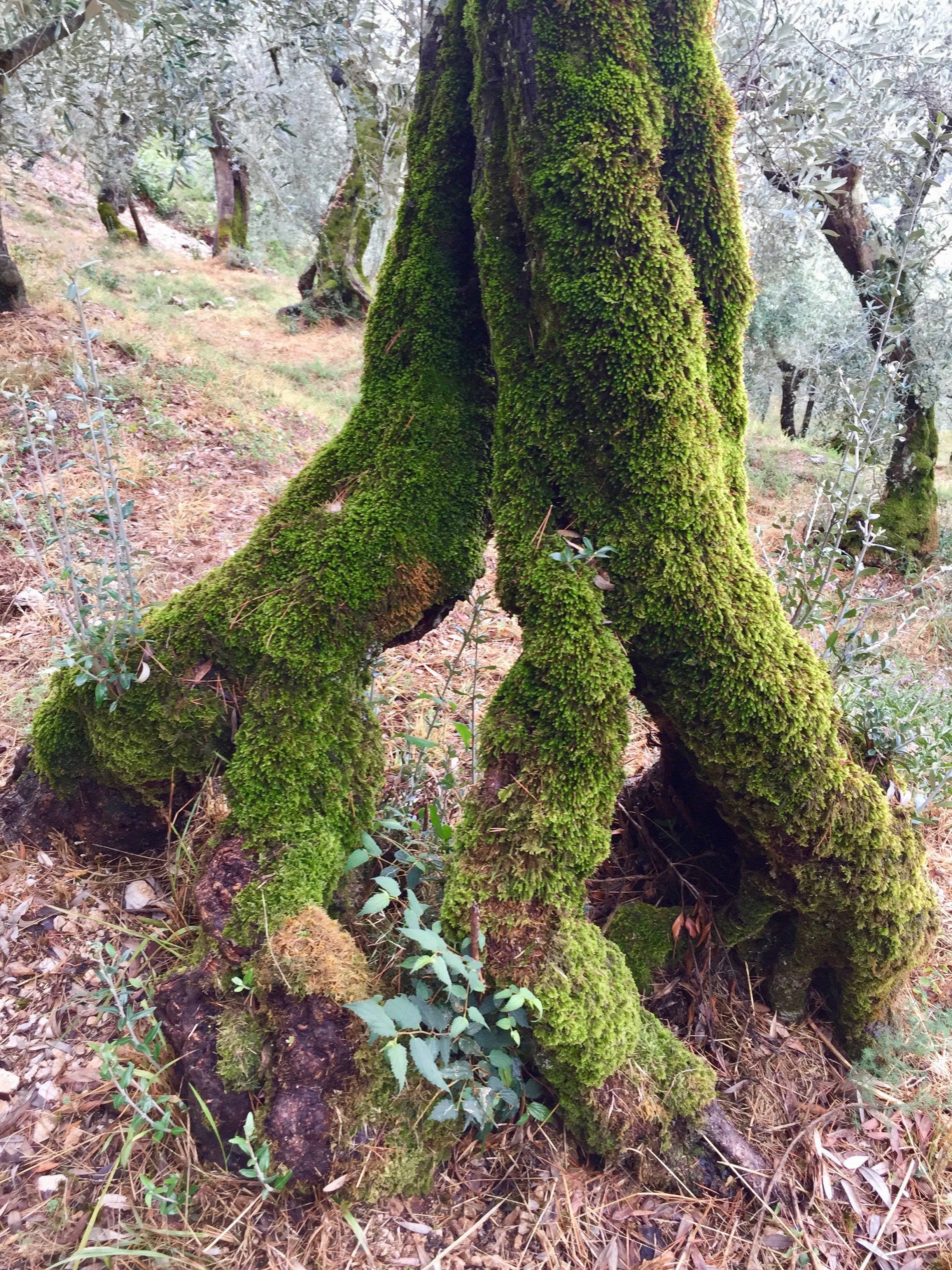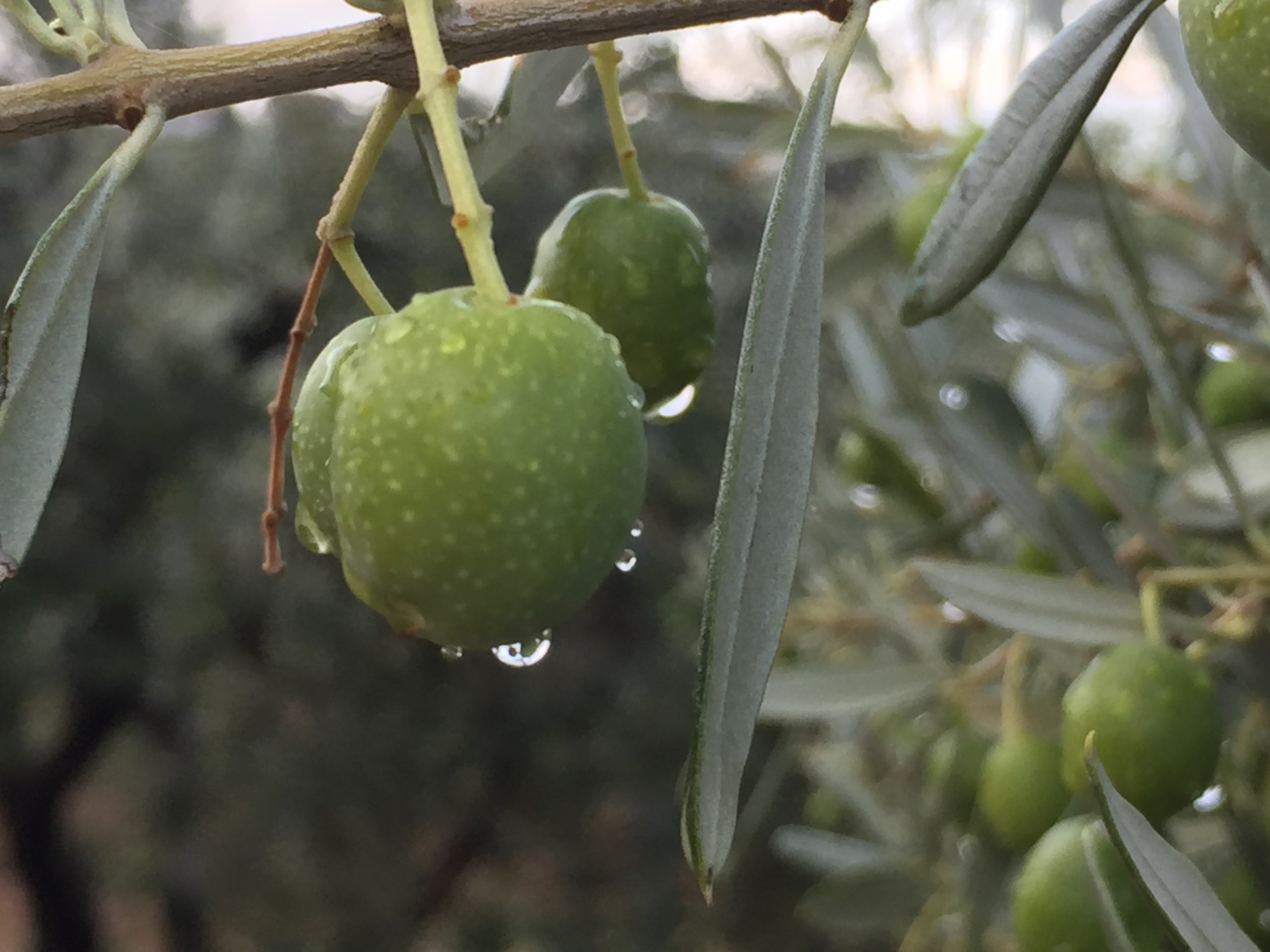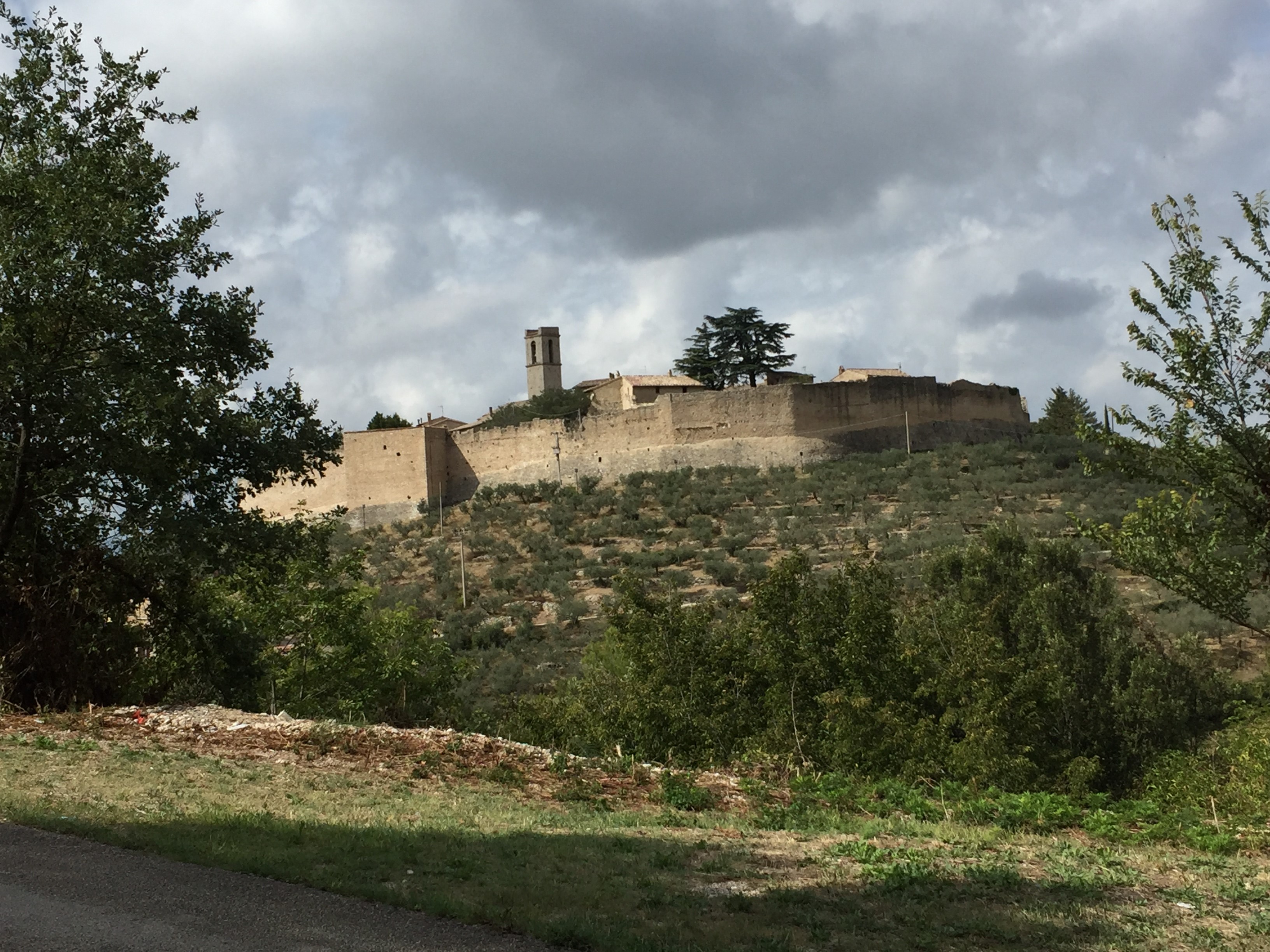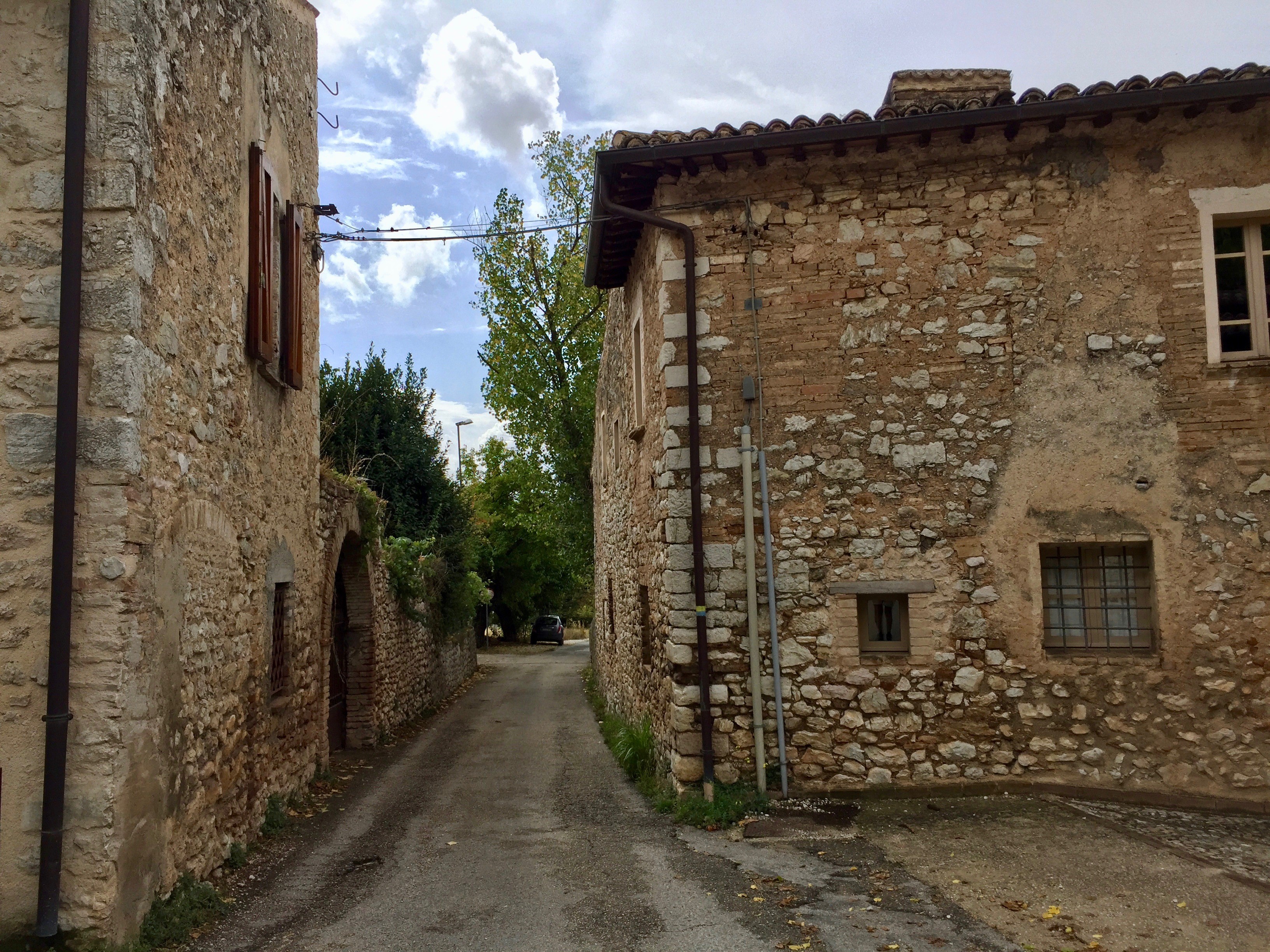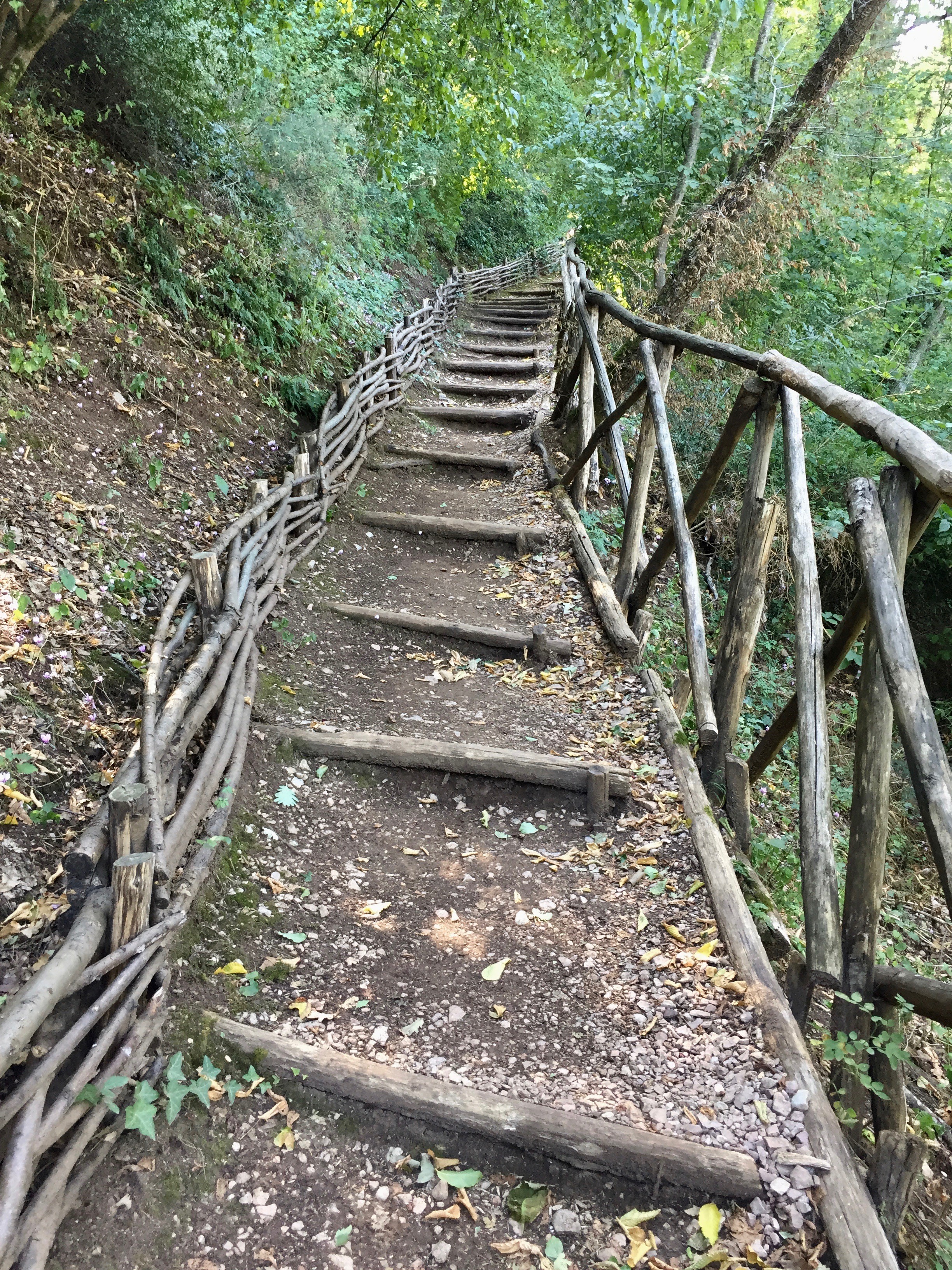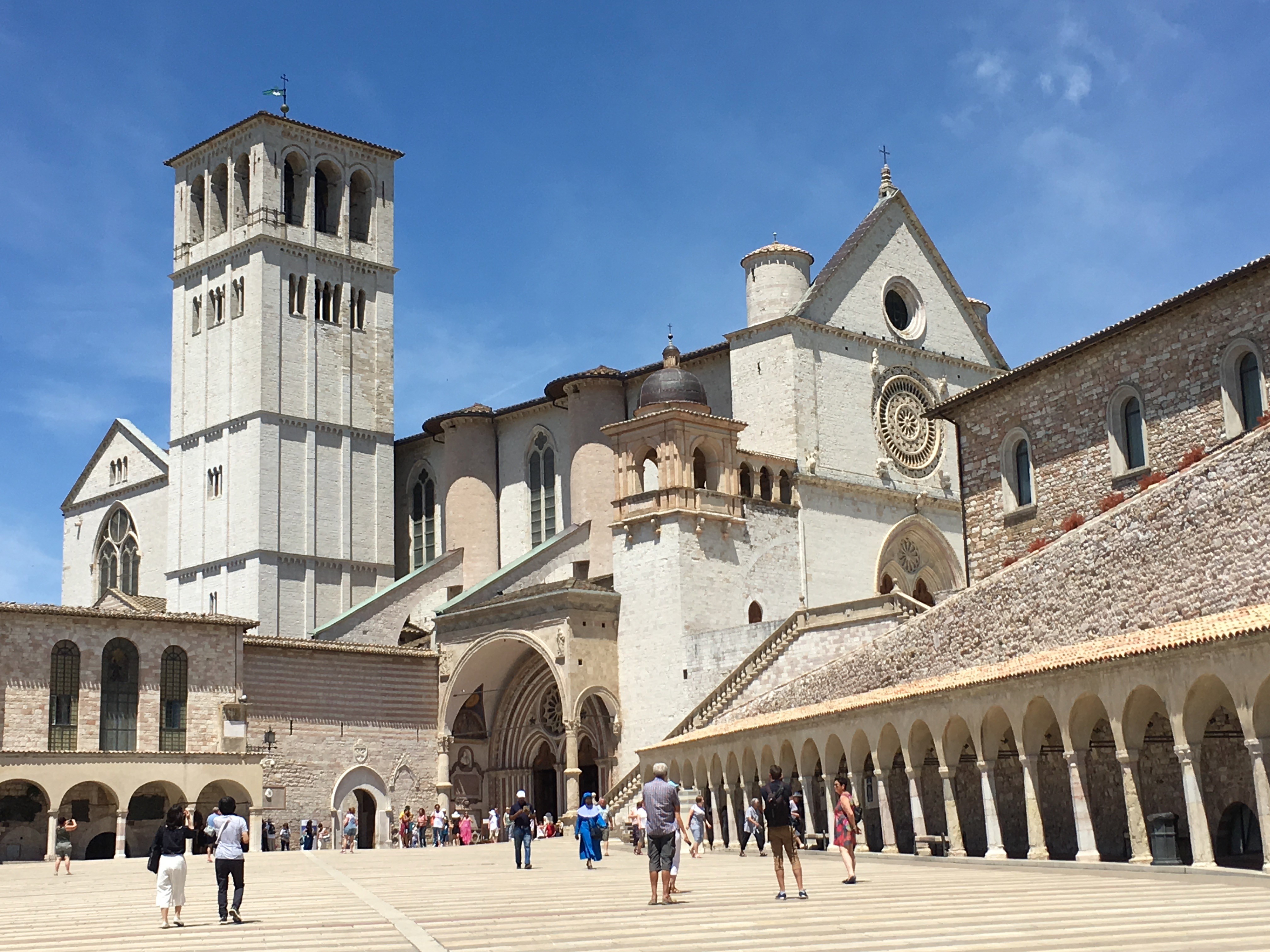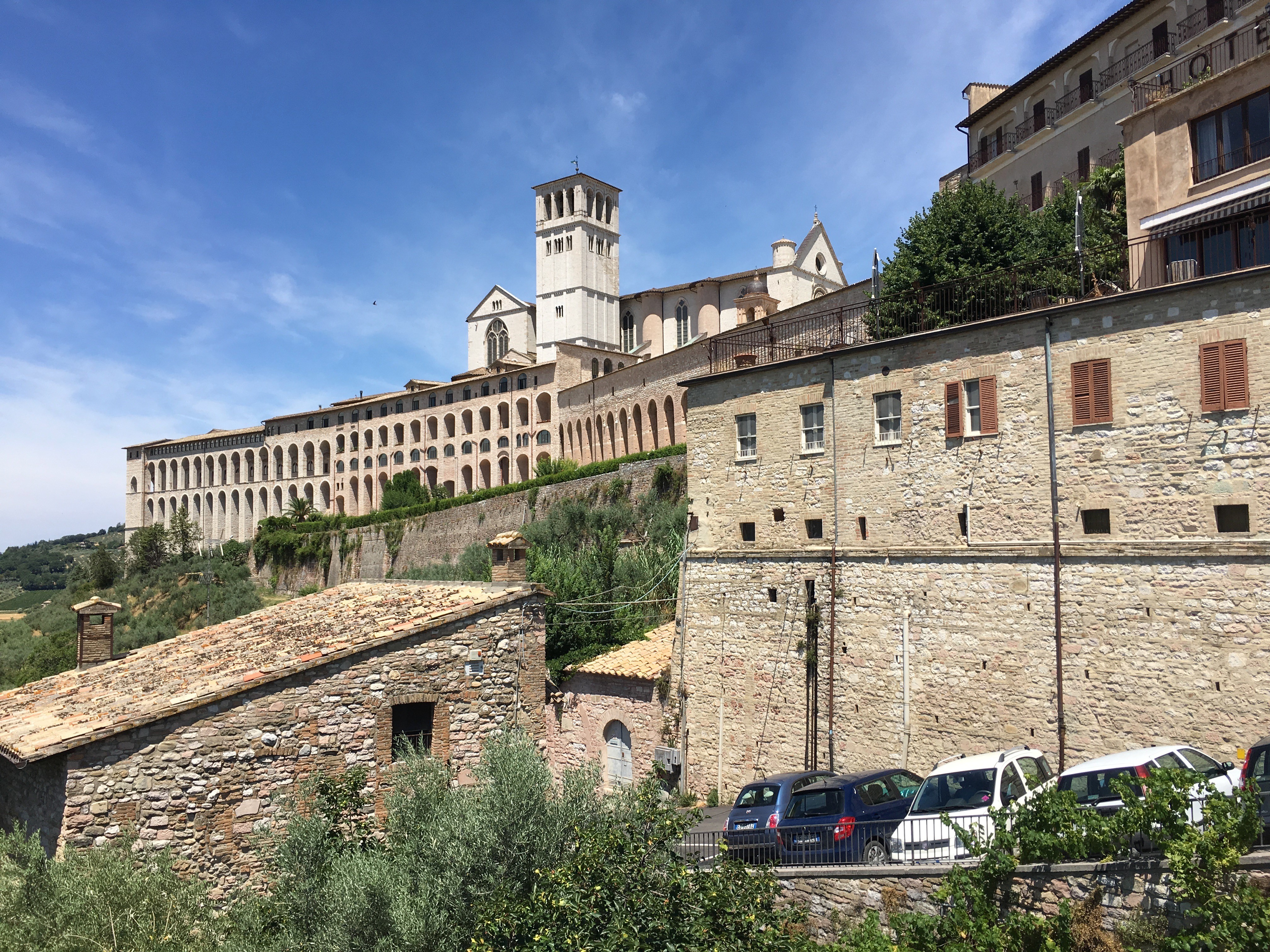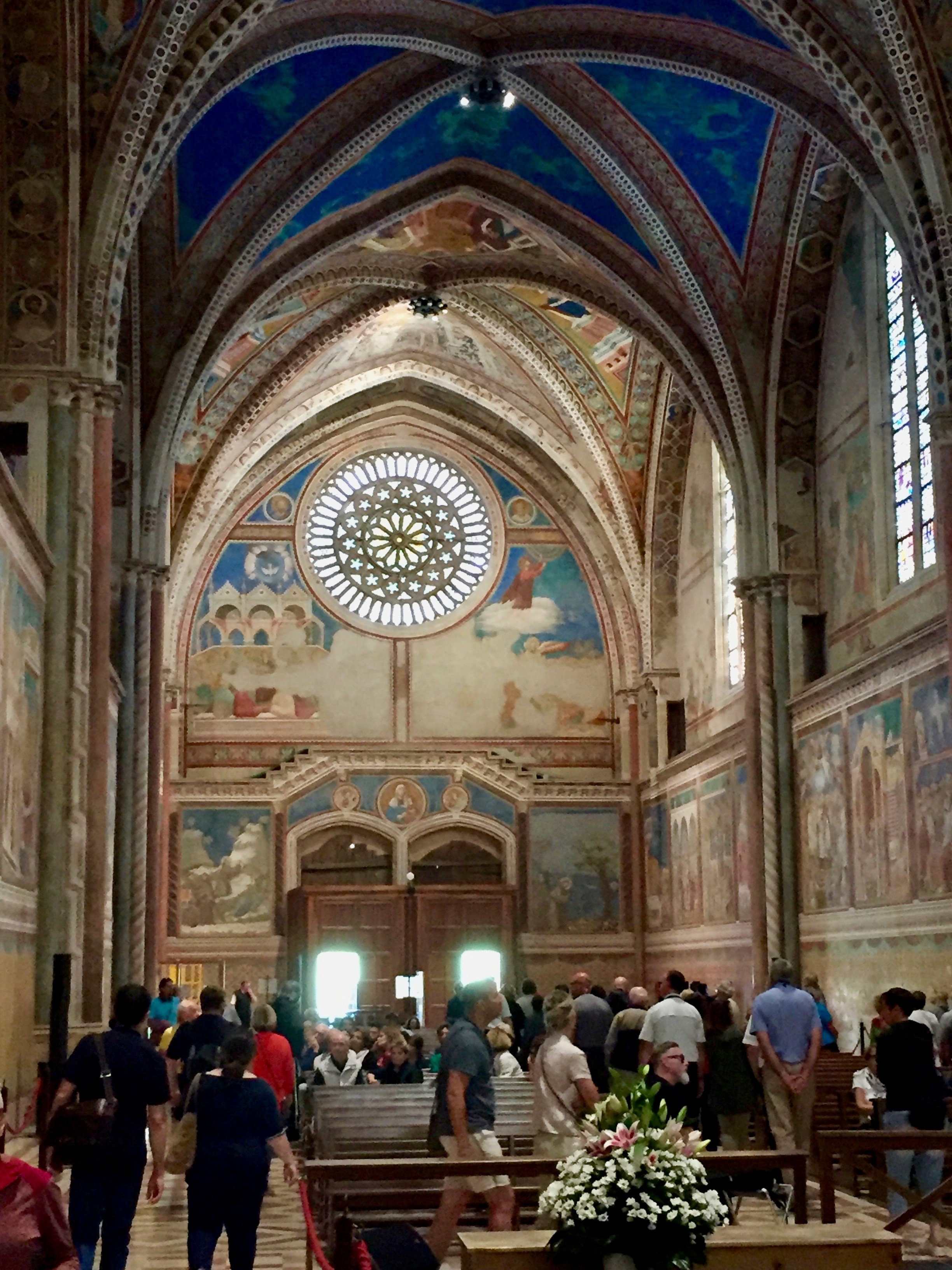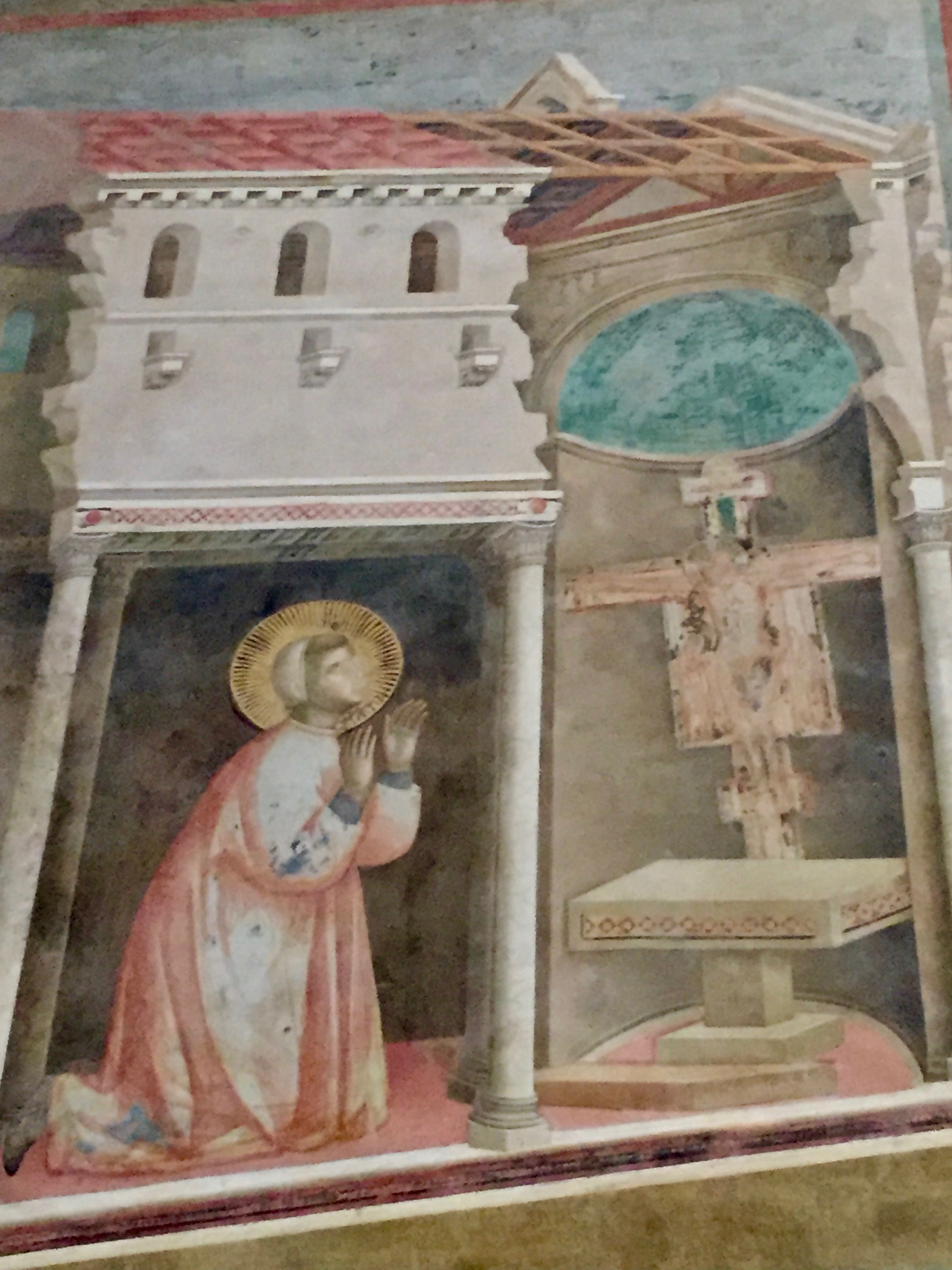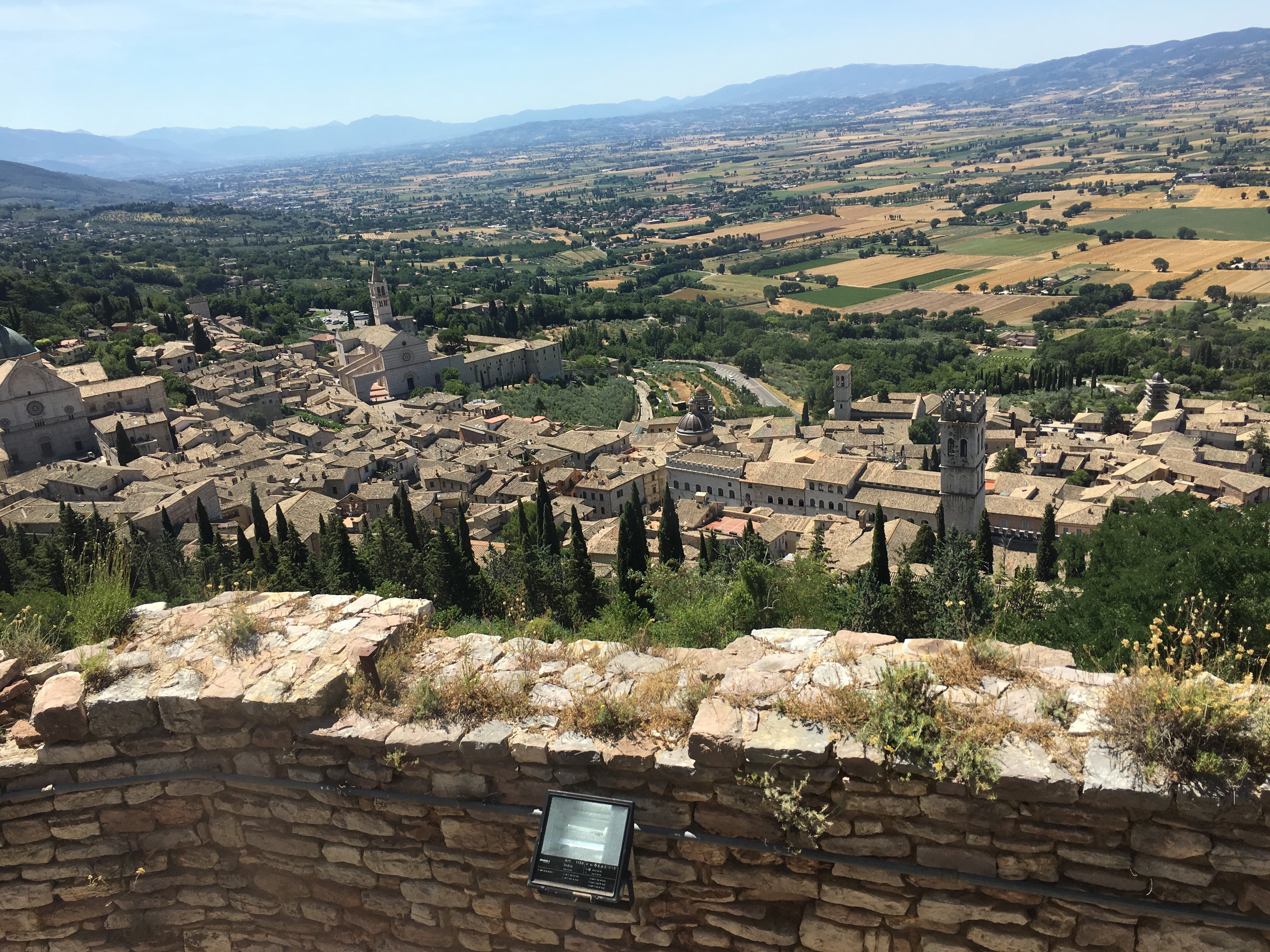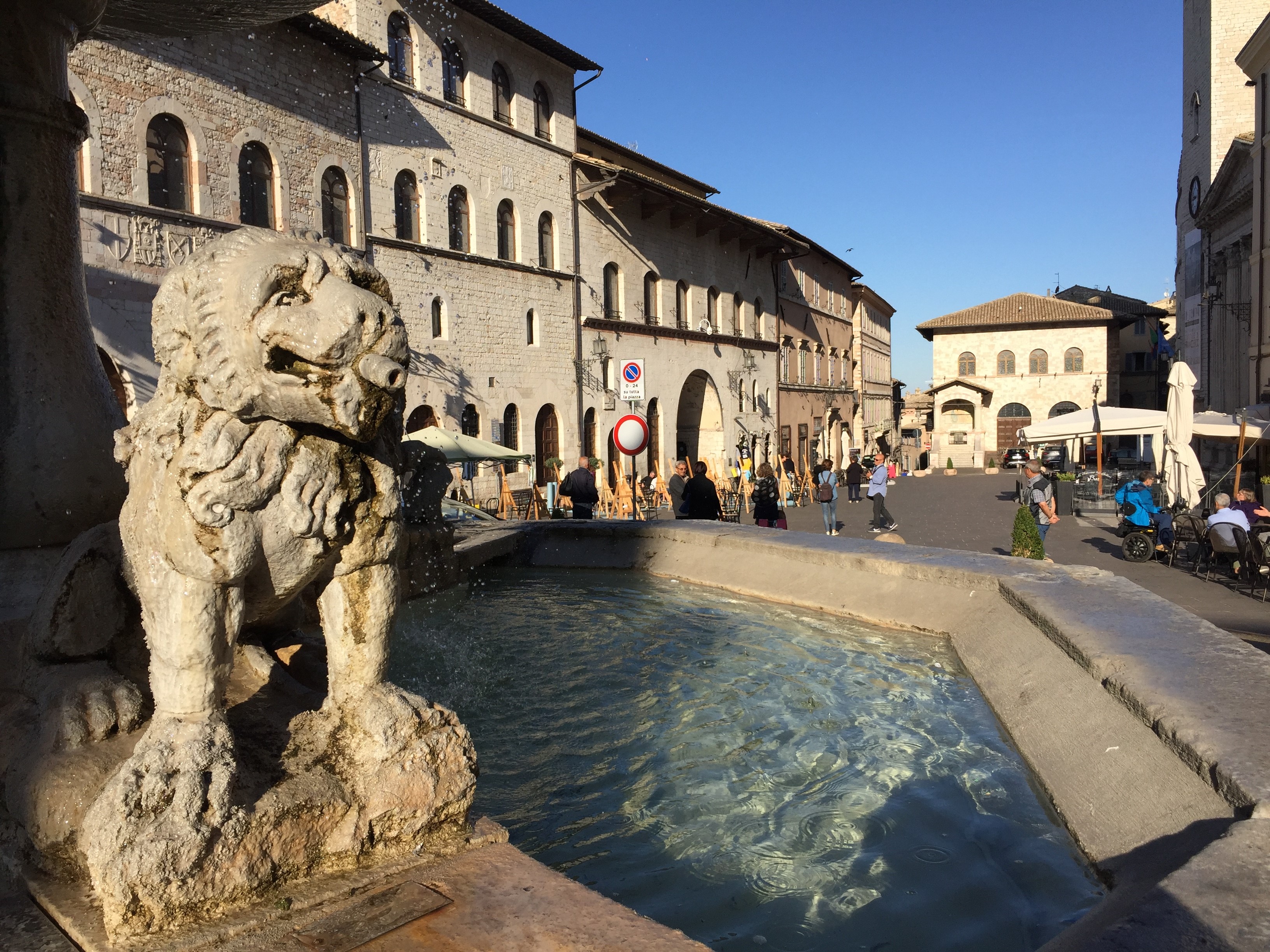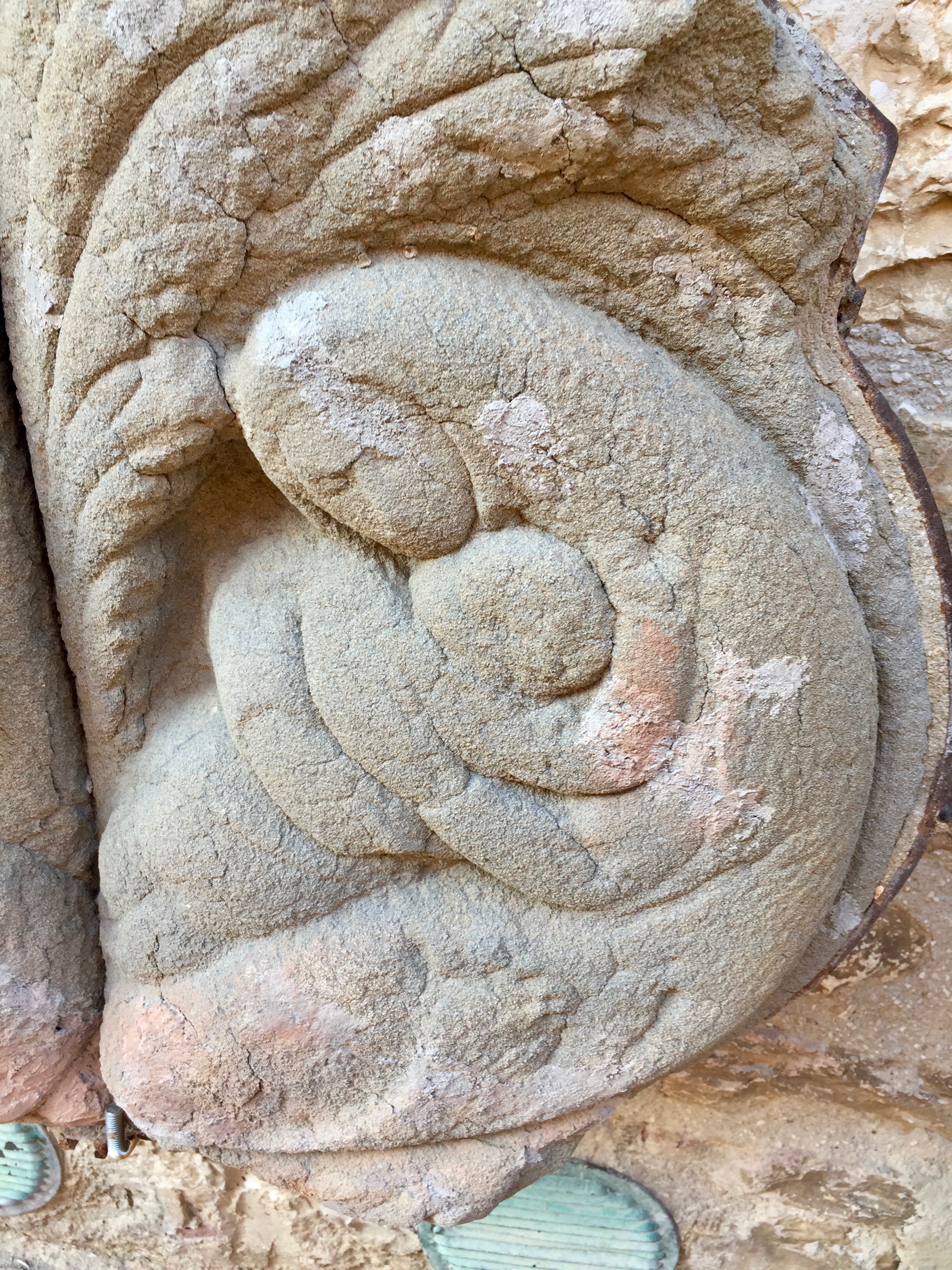(13)
Peace is every step
“Peace is every step” is the title of a book by Zen master Thich Nhat Hanh. I have chosen his words as a motto, a guideline for my pilgrimages. During pilgrimages, it is inner peace that helps me to stay open to the beauty in the world, to appreciate the day and everything that is happening during this day.
It stopped raining when I left Creccio. Like always after a rain, everything was fresh and green.
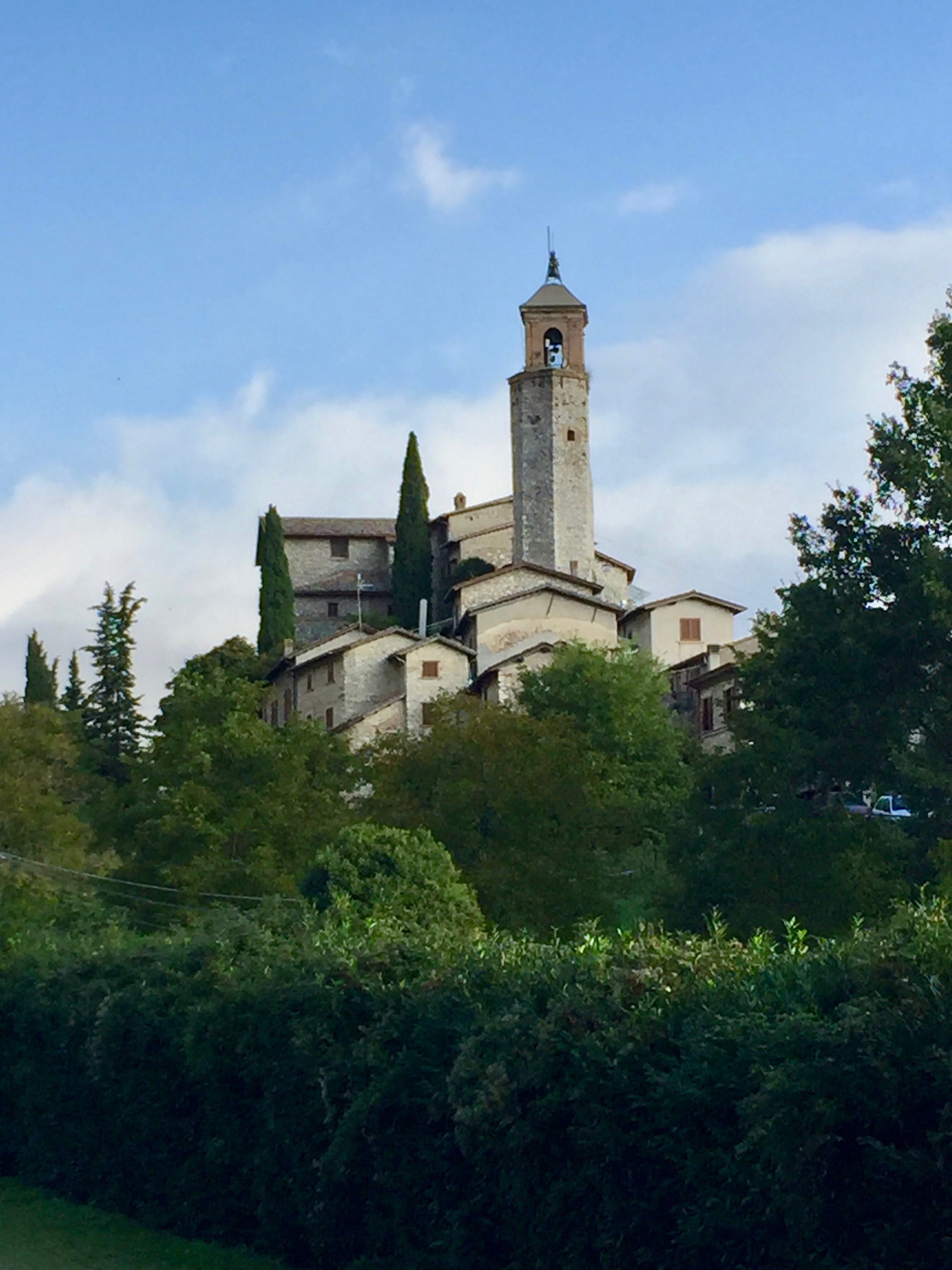
The town Contigliano
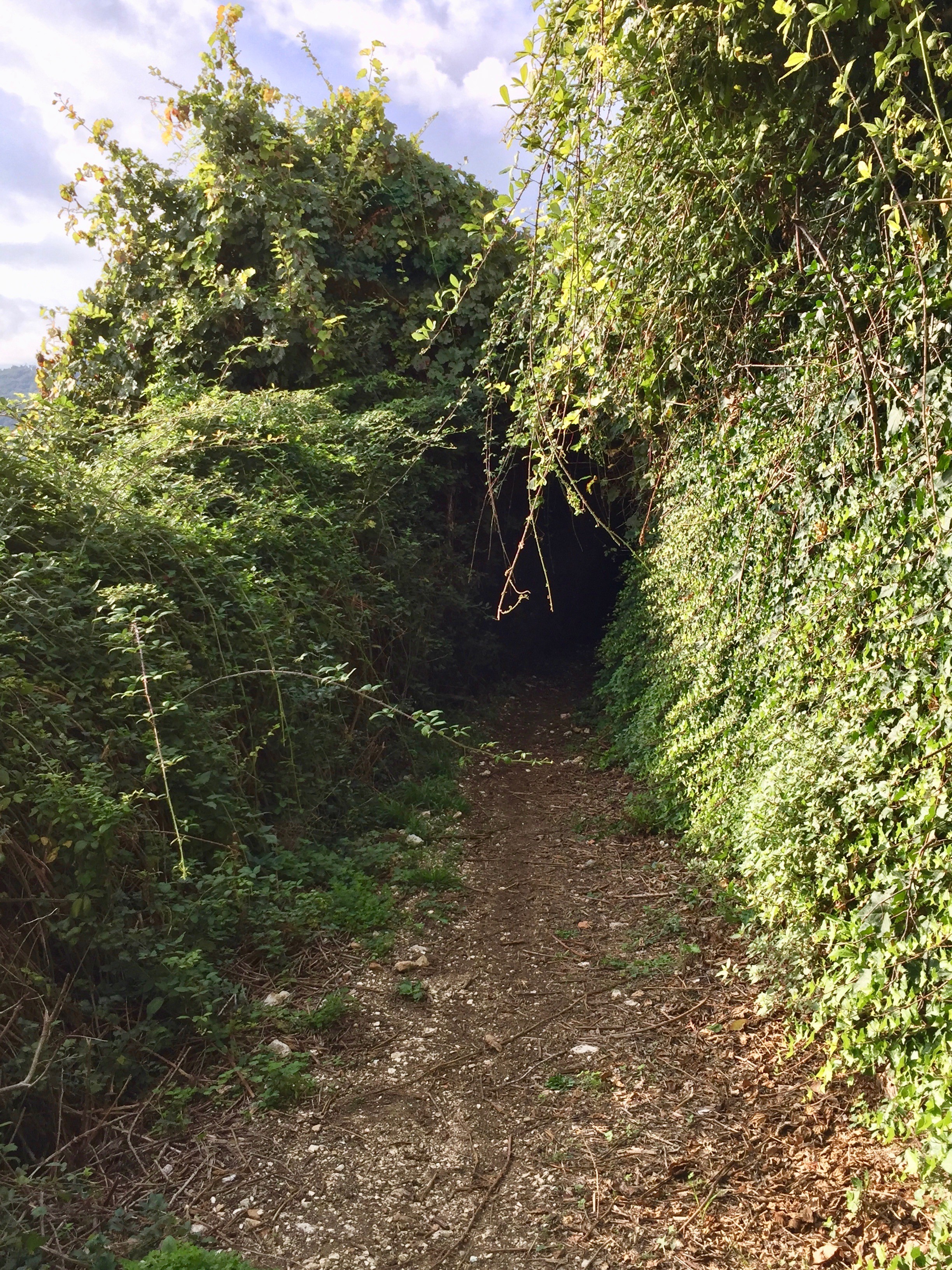
Gorgeous overgrown pathways
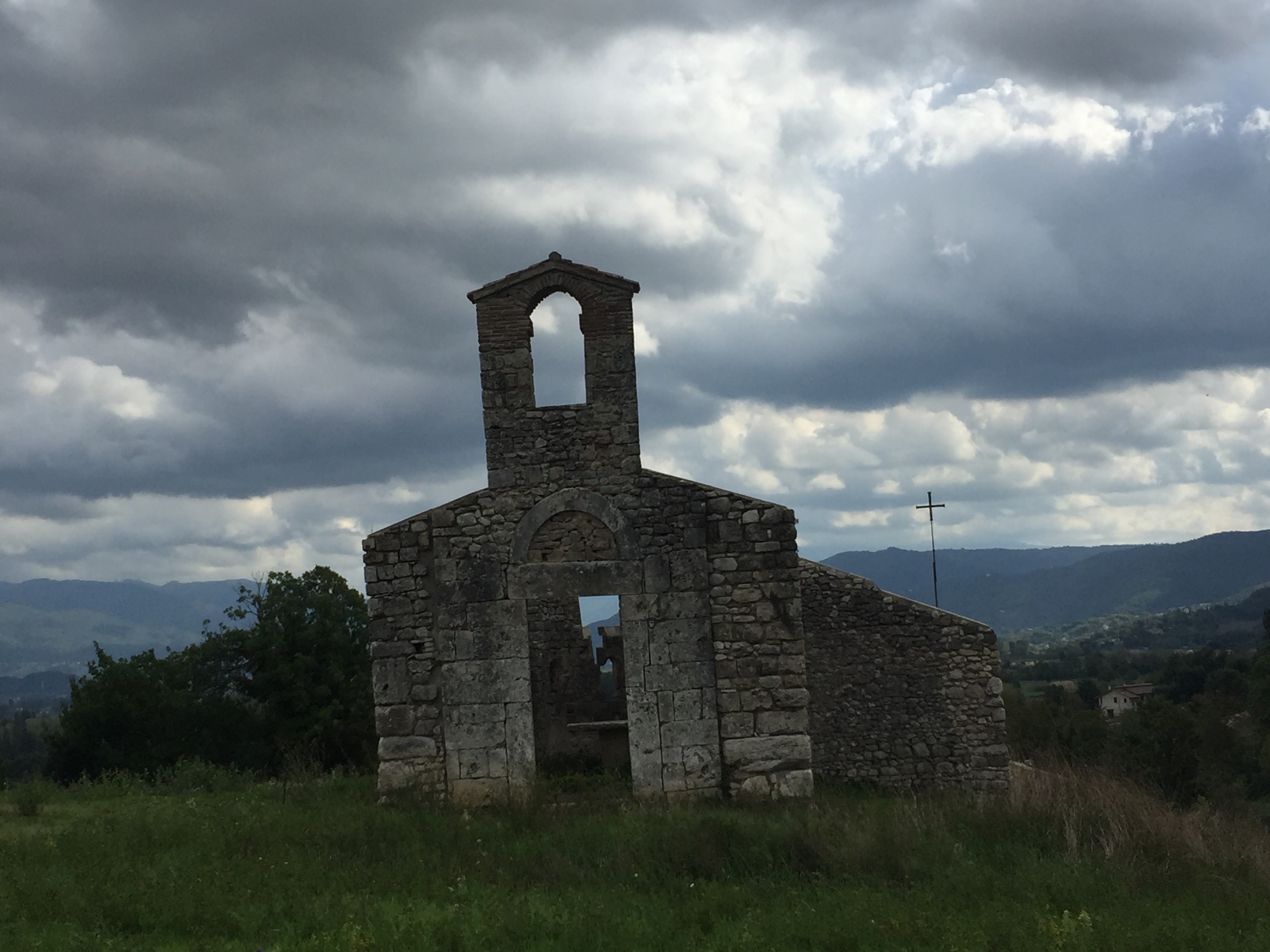
In the middle of a meadow stood a former chapel, where I had a super lunch
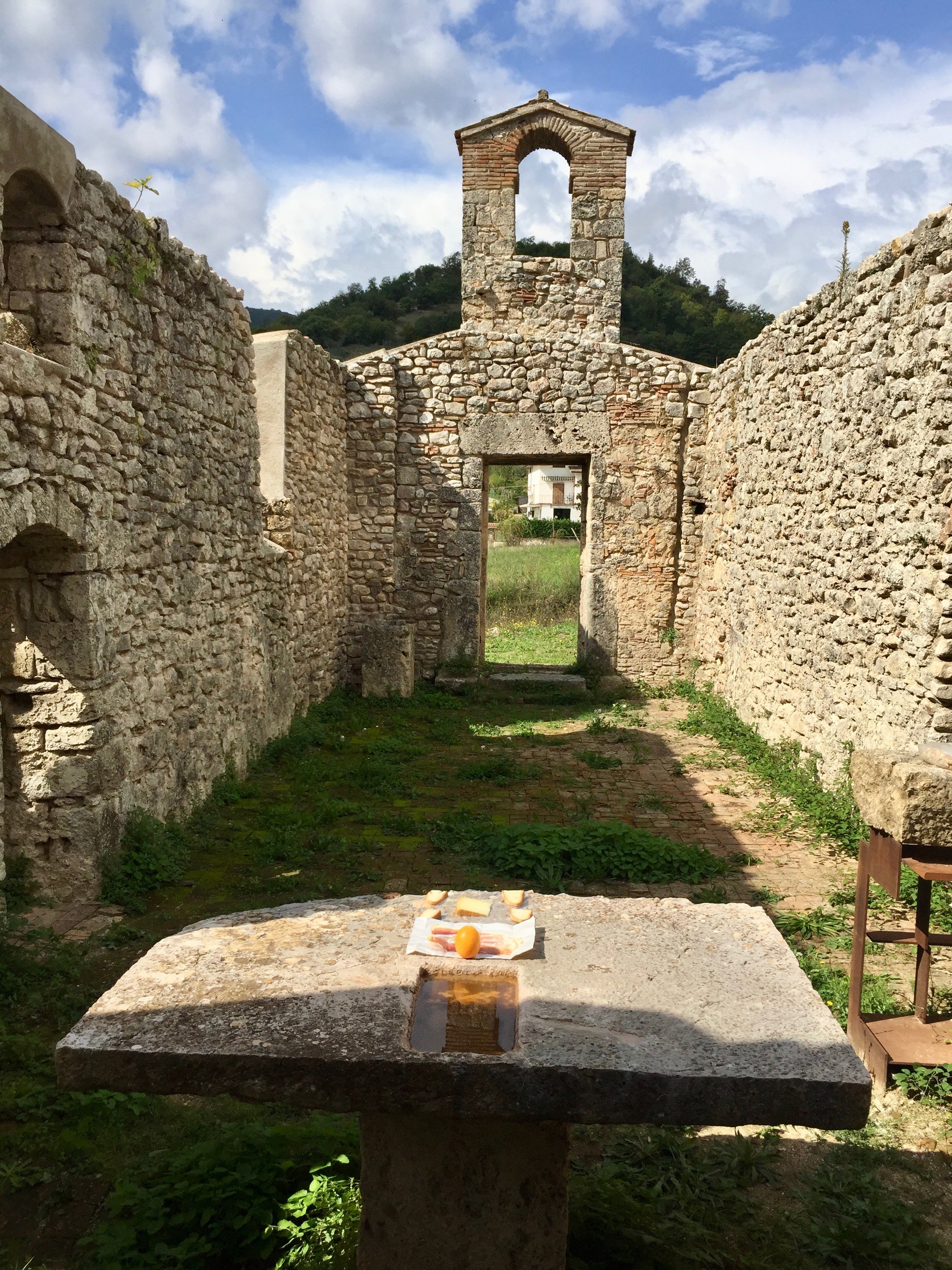
The sky looked different on the other side
However, the day continued to have challenges. Thunderstorms were approaching and soon heavy rain pounded down on me. I lost my way in the rain and found it again. When I arrived at the Sanctuario Fonte Colombo, I was ready to stop. The hermitage had places to sleep. I was the only guest and had dinner and breakfast with the friars, who very warmly welcomed me.
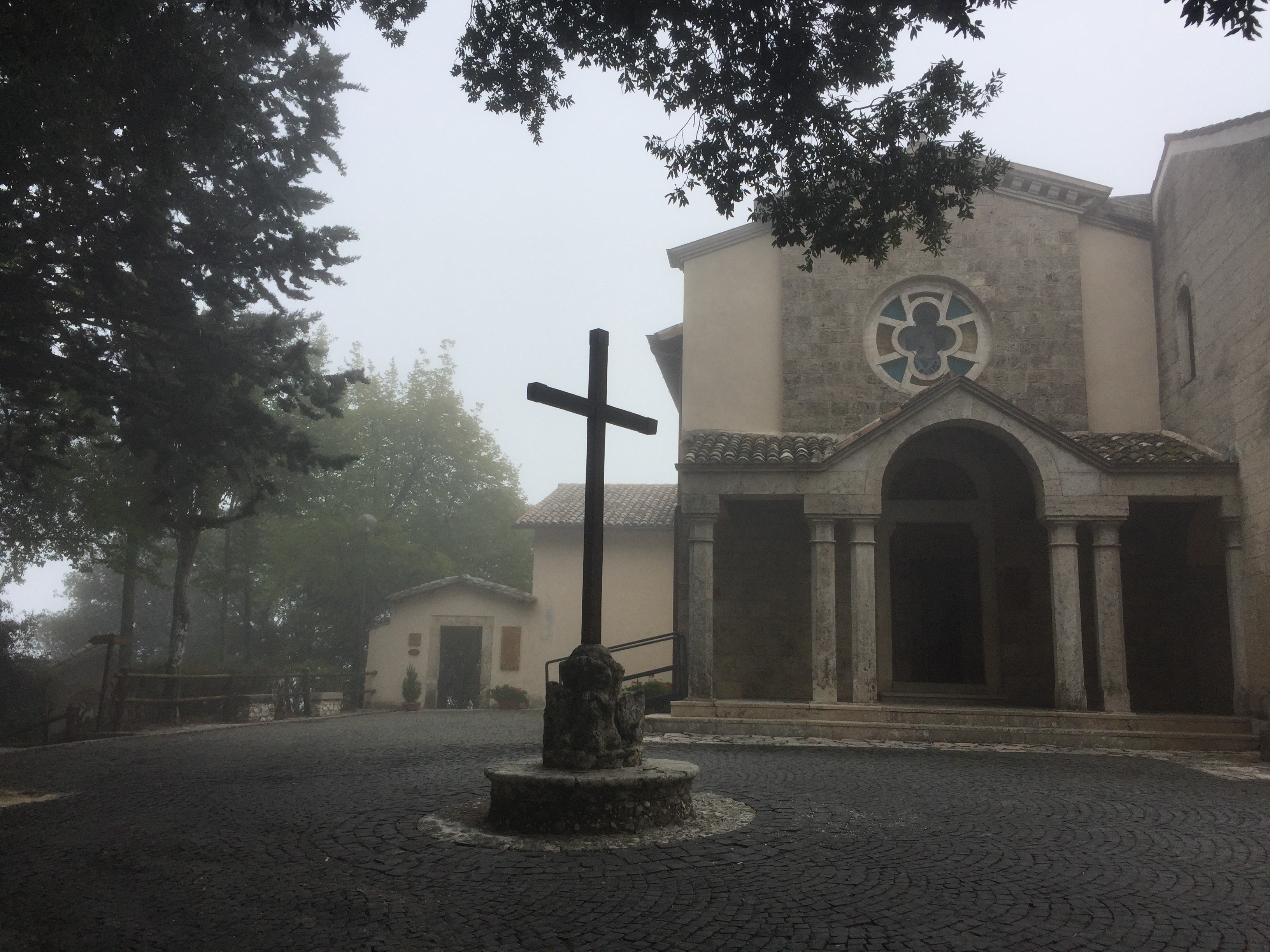
Eating in the refectory with the friars was an interesting experience. In big letters, SILENTIUM was written at the end of the hall. However, the 5 friars, each sitting at his own 15-foot-long wooden table, were having conversations by shouting to the other friars far away.
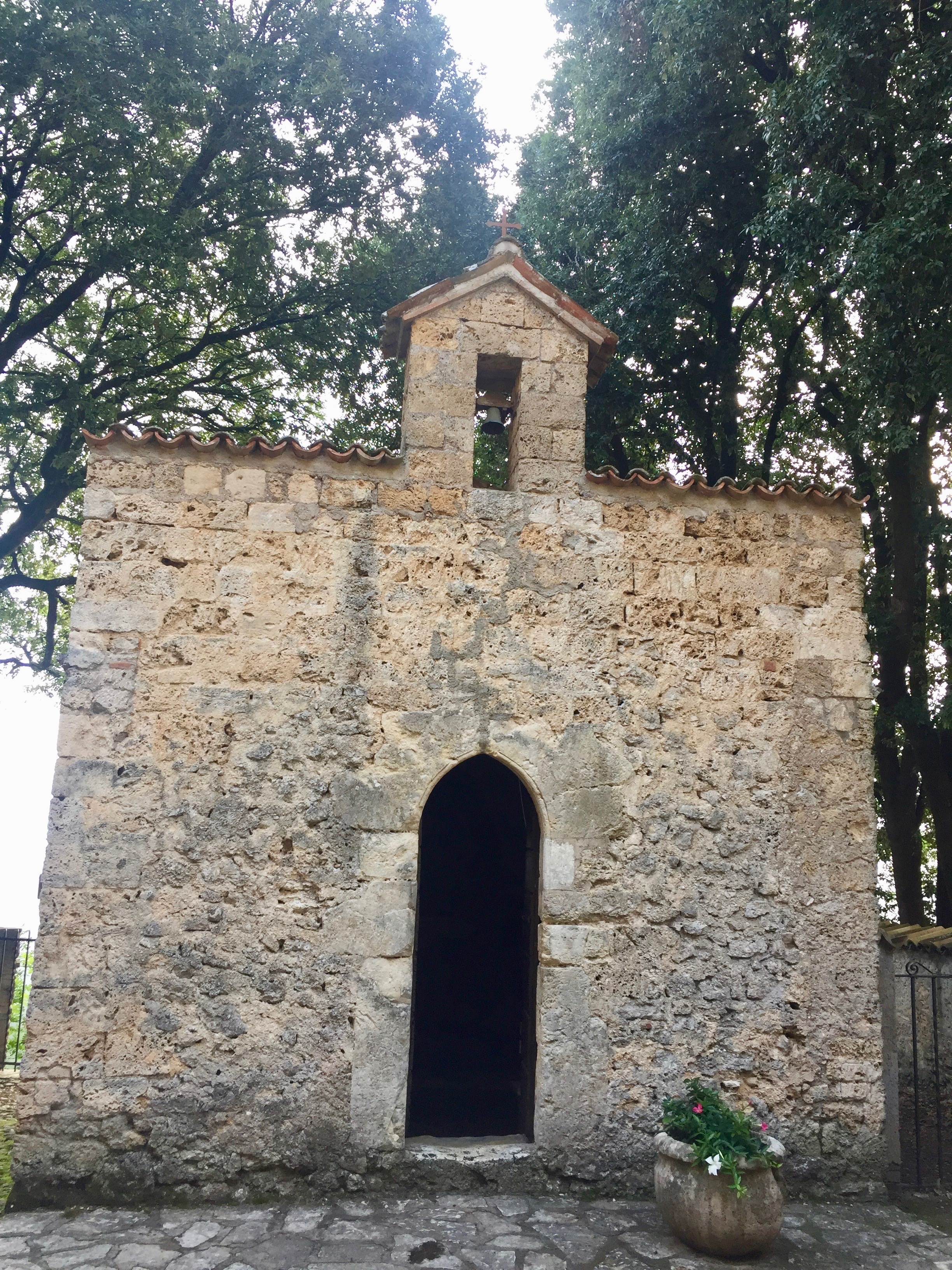
La Maddalena chapel existed at the time of St. Francis
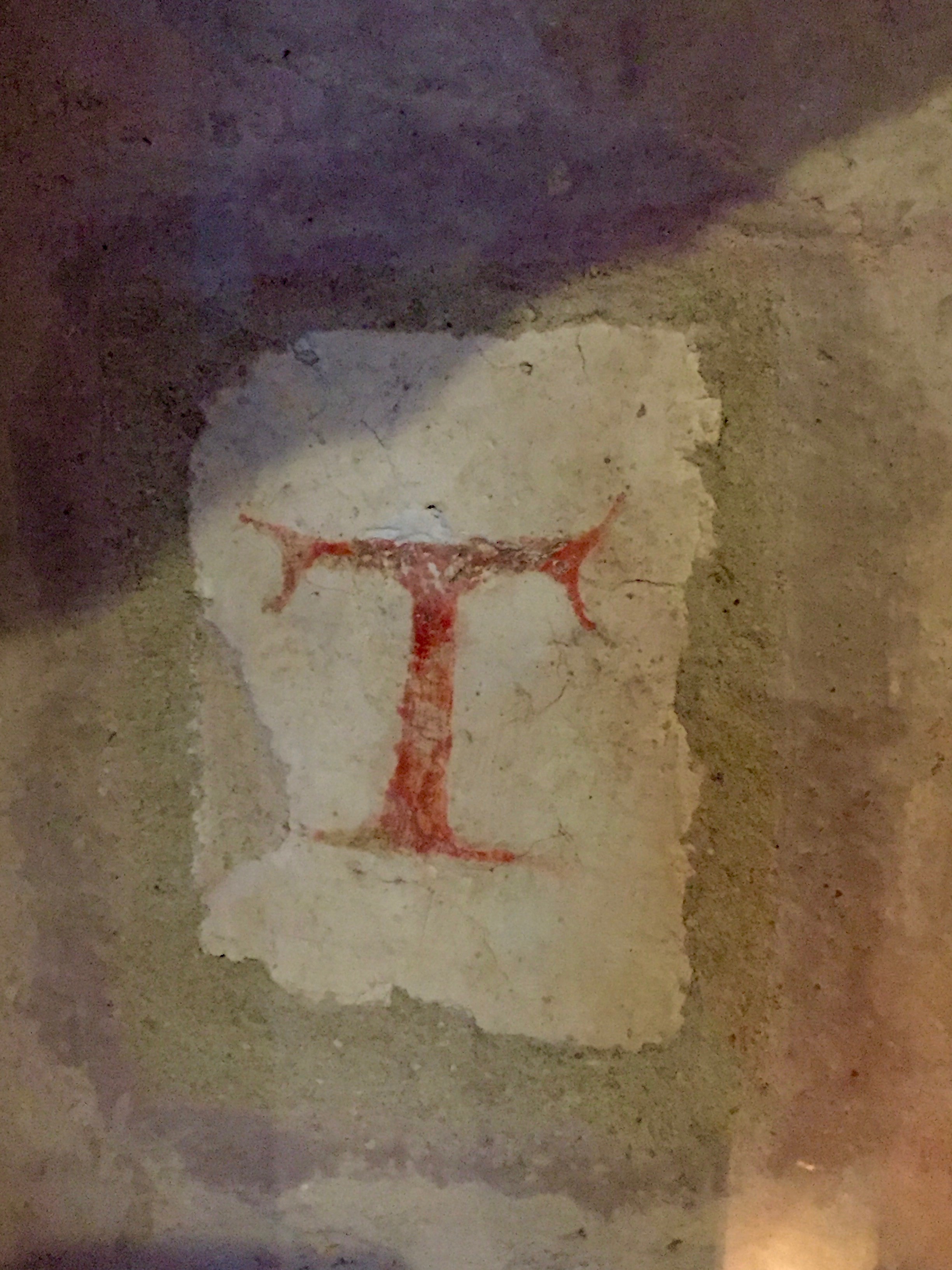
The Tau sign in the Maddalena chapel is said to have been painted by St. Francis
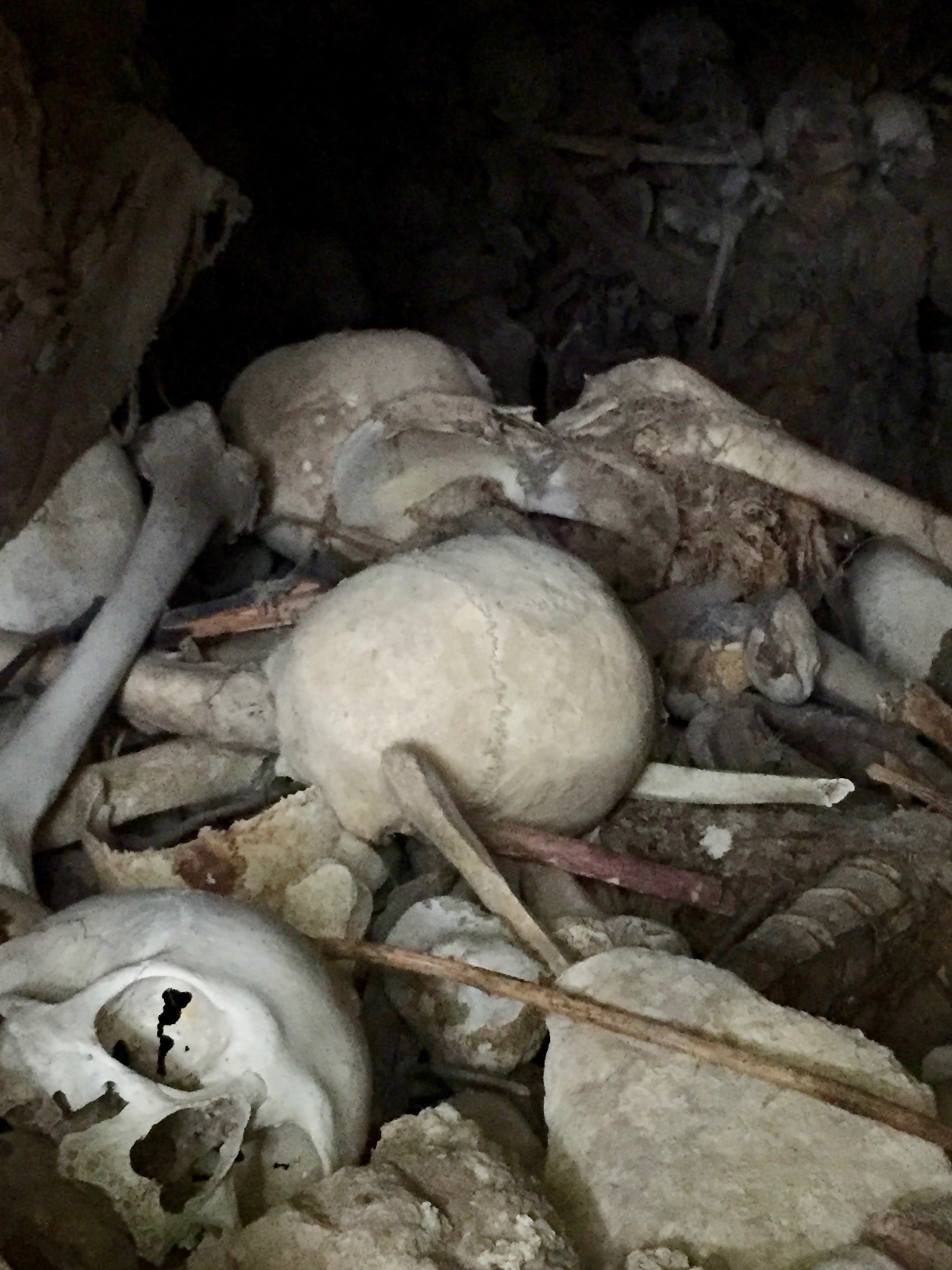
By peeking through a tiny window of the Maddalena chapel, I saw these bones
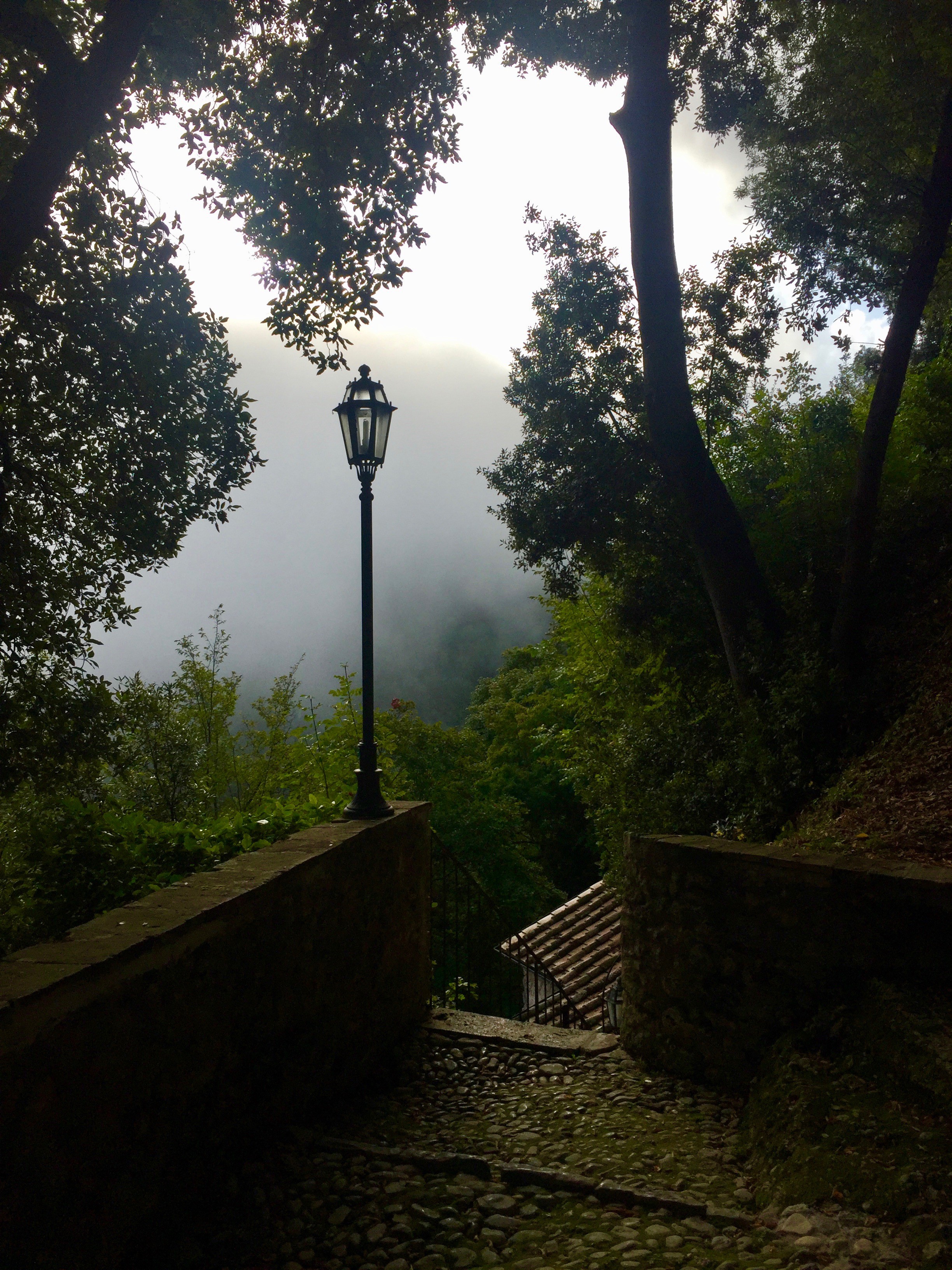
Walking down to the Sacro Specco
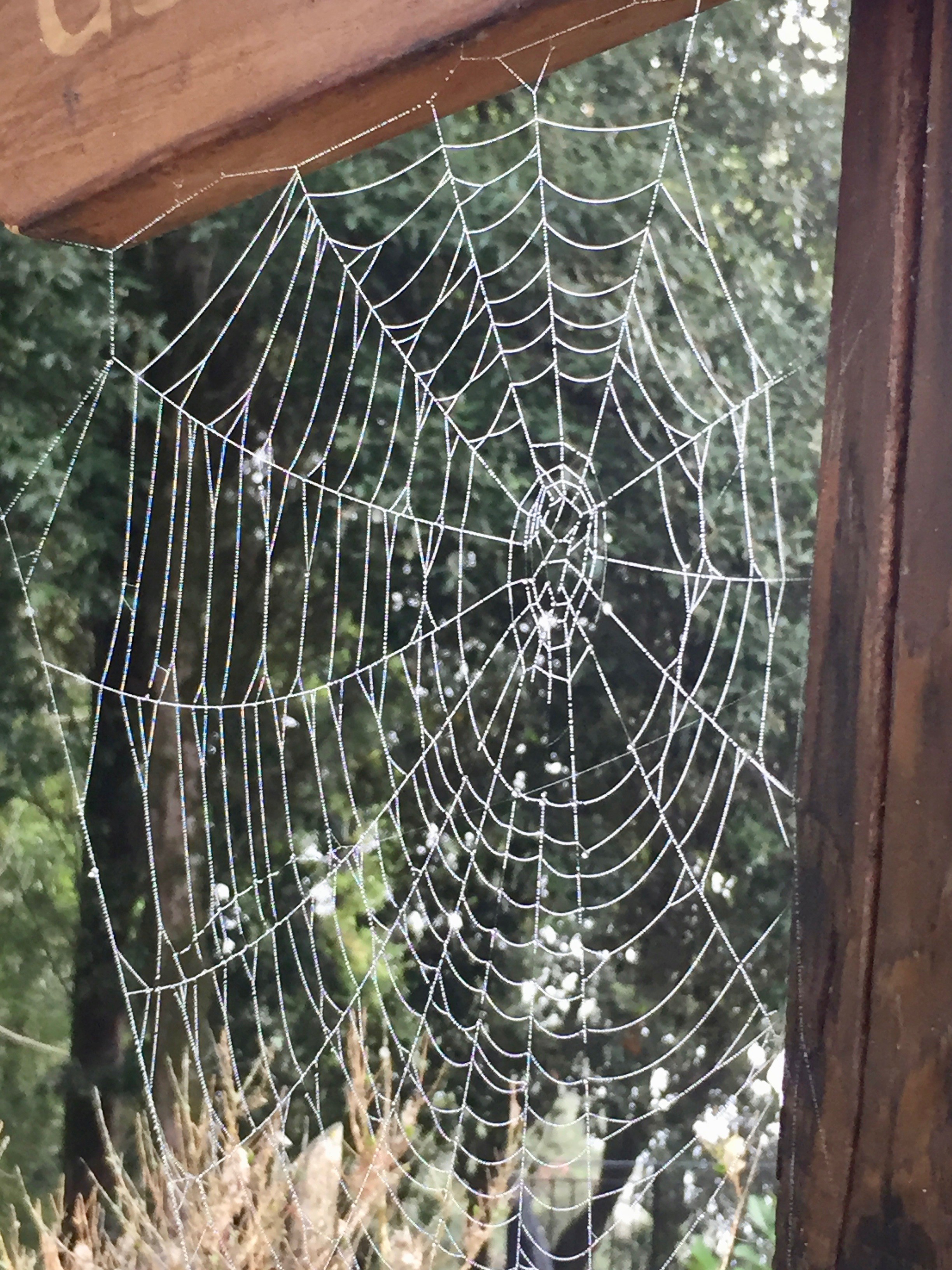
Only when I was staying there did I discover that this place was very special for St. Francis.
He often visited the sanctuary near the end of his life. It was here that he dictated the rules for his order to Brother Leo in 1223. The pope put a lot of pressure on him to write these rules. By this time, thousands of people were already following his calling and the church wanted to secure its influence. St. Francis could not include the rule of absolute poverty.
Maybe a more important event that showed the personality of St. Francis was the treatment of his eyes in 1225. St. Francis had contracted a bacterial eye infection
(trachoma) in Egypt that had made him nearly blind. He had travelled to Egypt because he had hoped to make peace and stop the war between Muslims and Christians. At the time, the treatment for this infection was to press a hot iron rod on the face between the eyebrow and ear. Before the treatment, he asked the fire not to be too hot, but he did not welcome nor fight the pain. He accepted it.
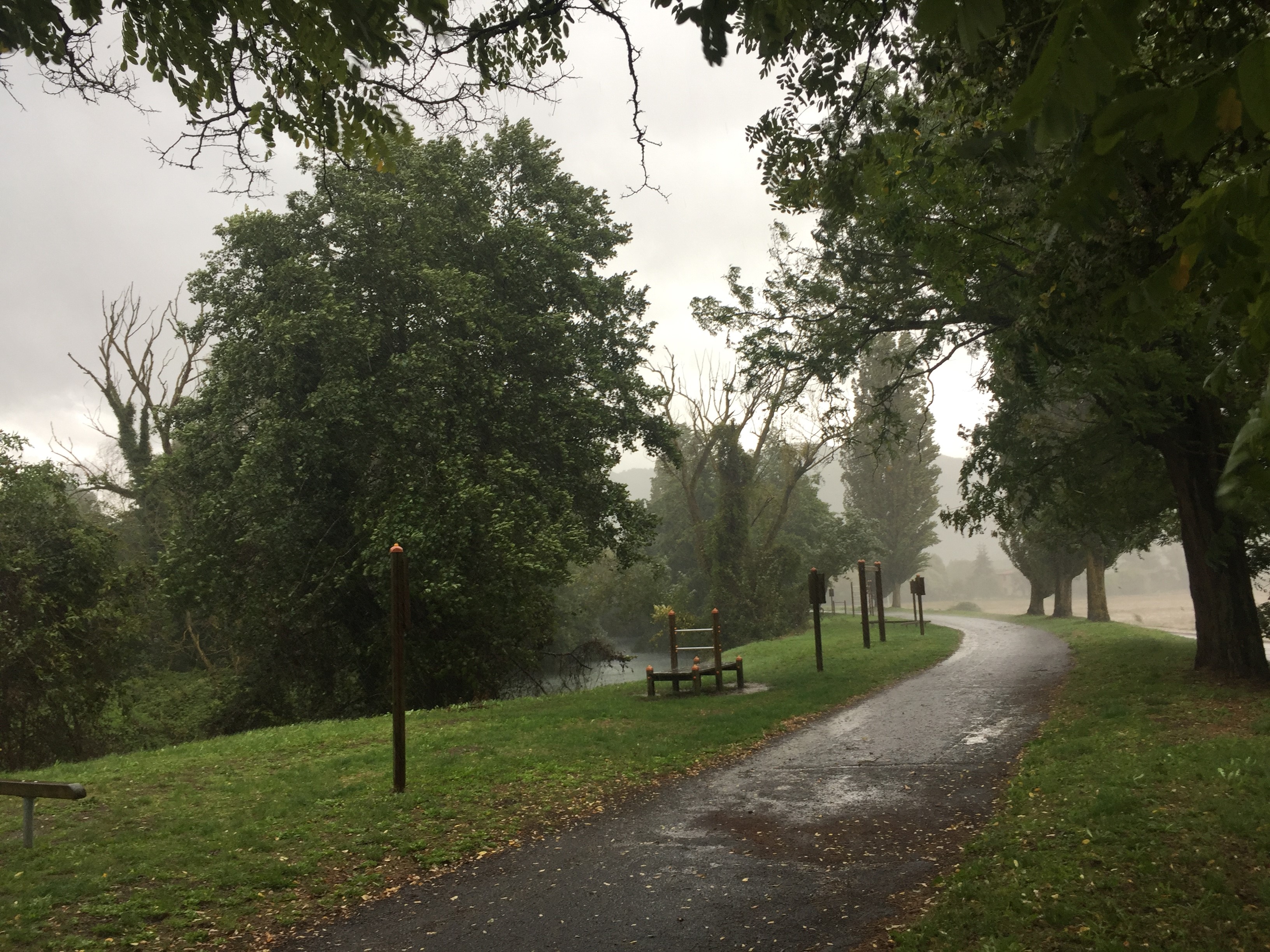
The heavy thunderstorms continued when I walked to Rieti the next day.
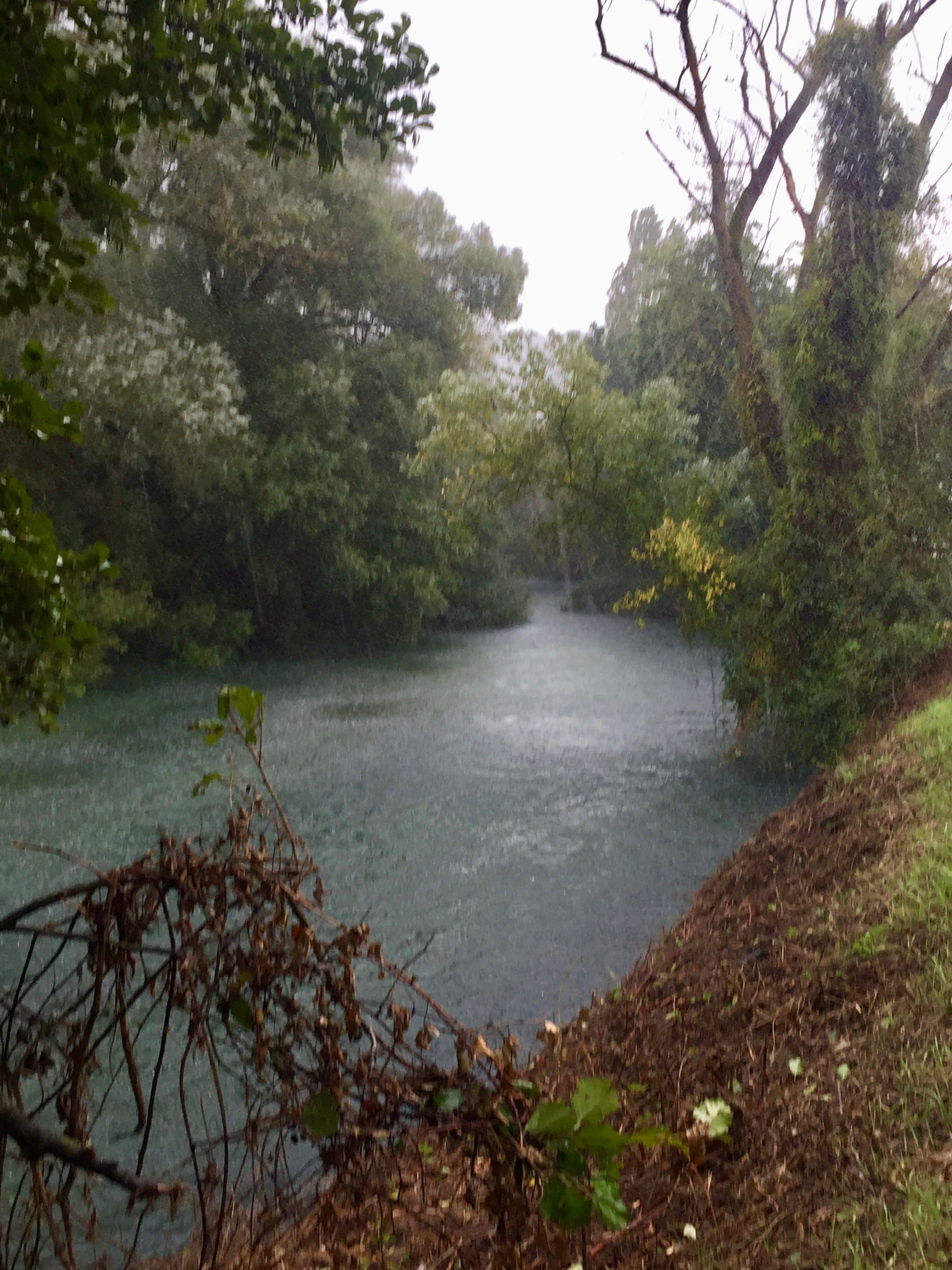
Walking beside the Velino river showed me the incredible force of this river with its emerald green water.
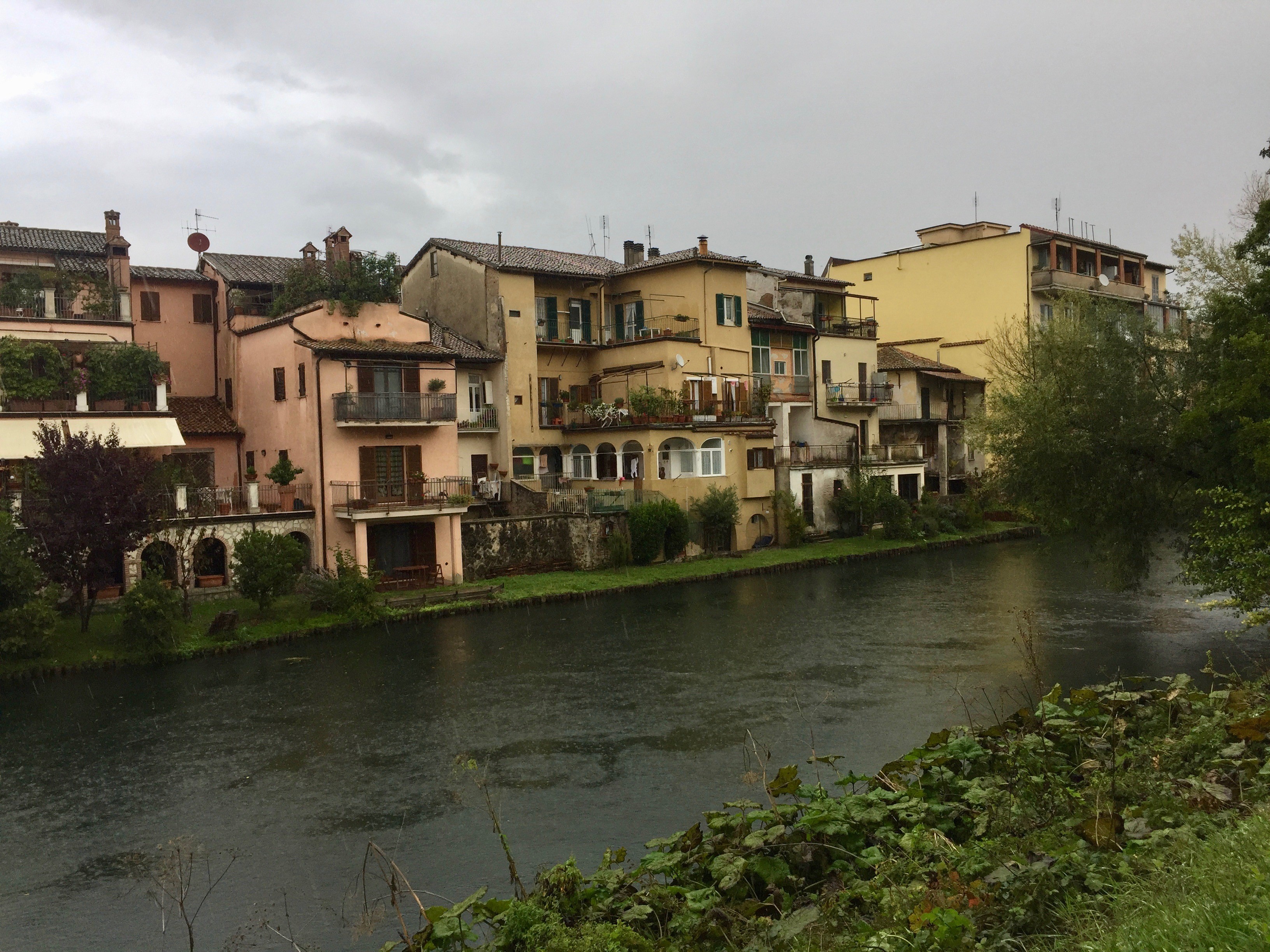
Rieti seen from the Roman bridge
Romans were already settled in Rieti in BCE and had built a bridge over the Velino river, which still can be seen in the river and underground. It was the main route for transporting salt, a product more precious than gold.

Roman bridge
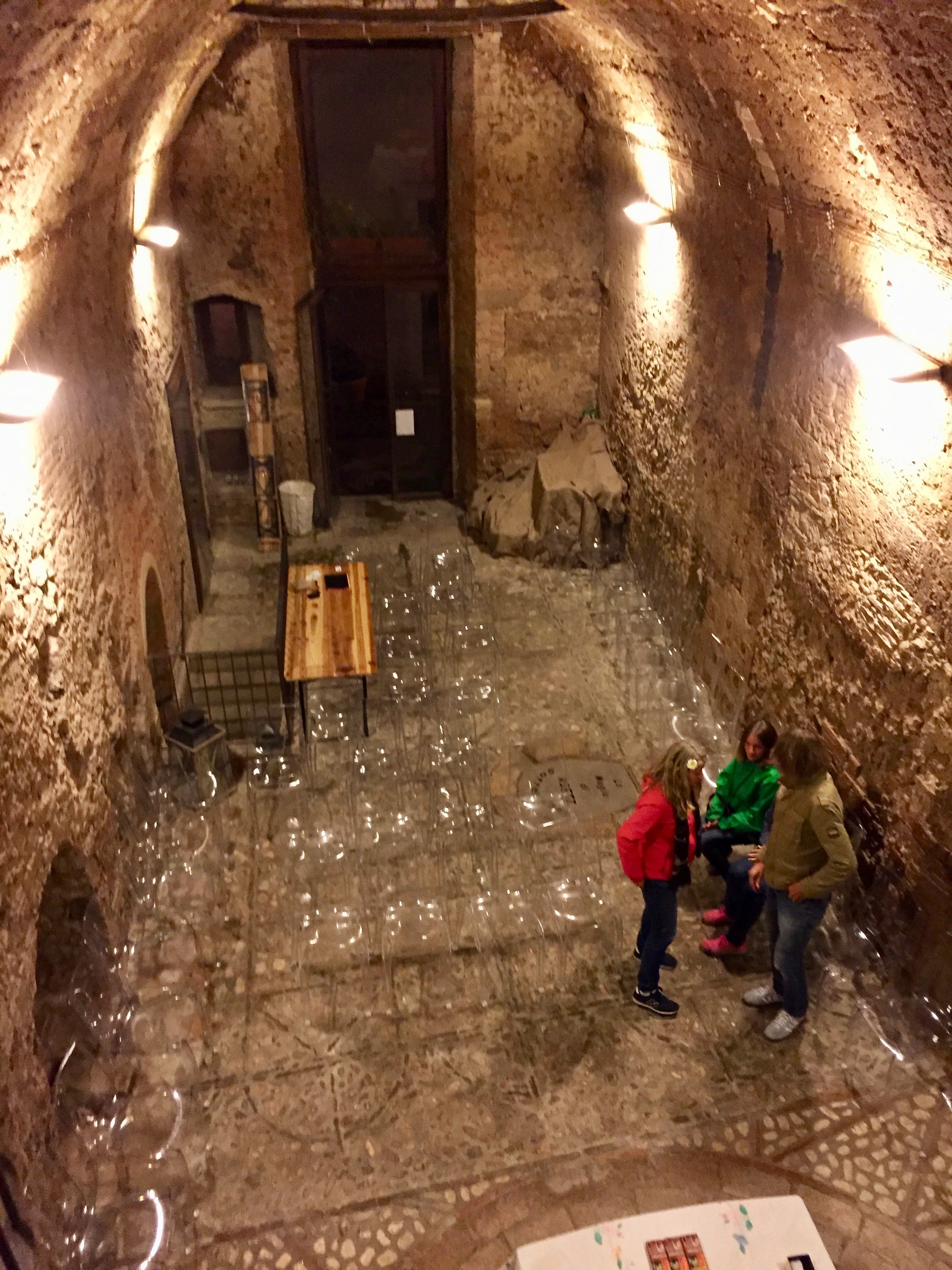
Underground Rieti with part of the Roman city wall
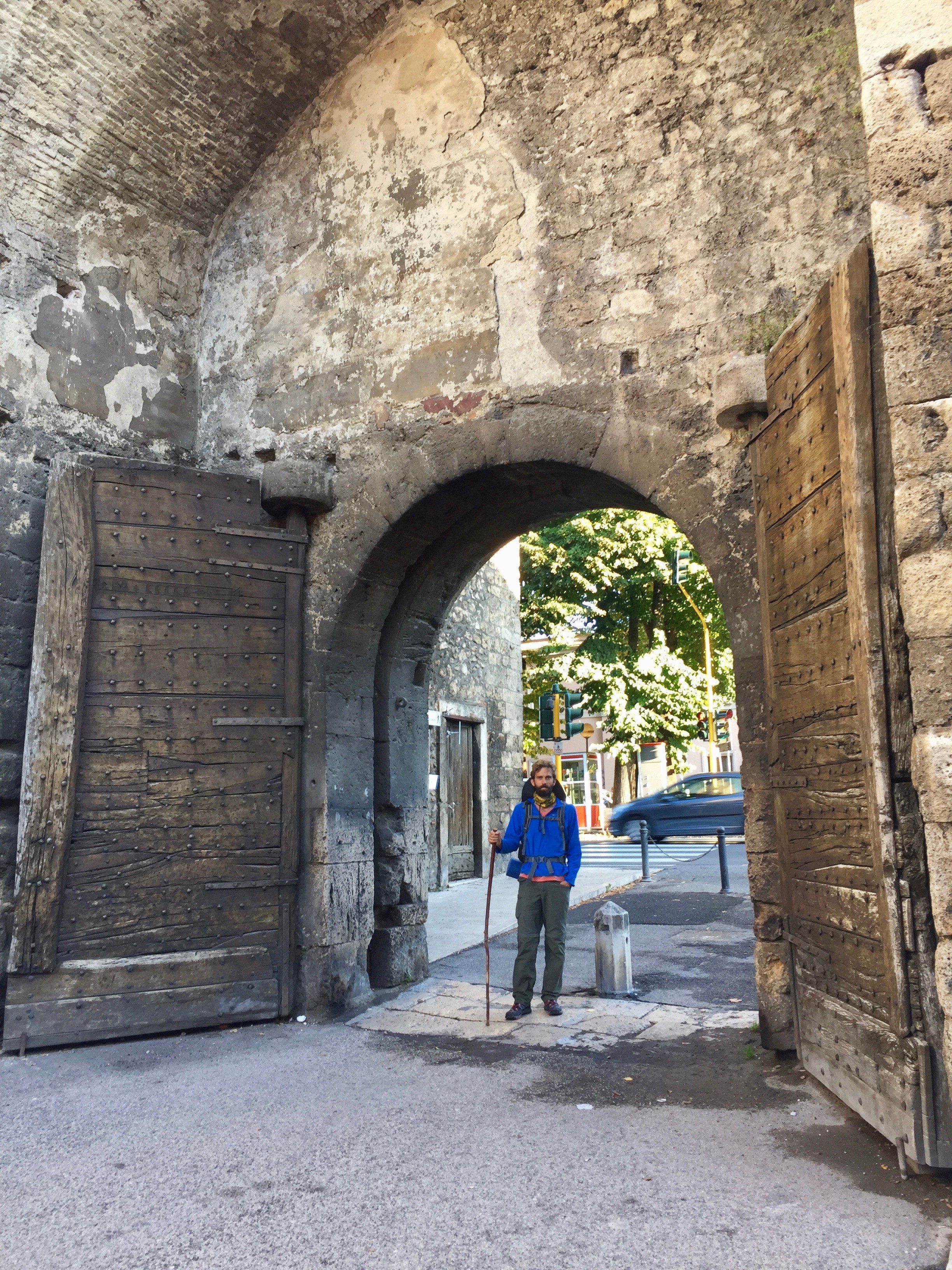
In Rieti, I met up with my son Lorenz again. He walked part of the Camino Francesco, too, and the timing worked out perfectly for us to finish the way together.
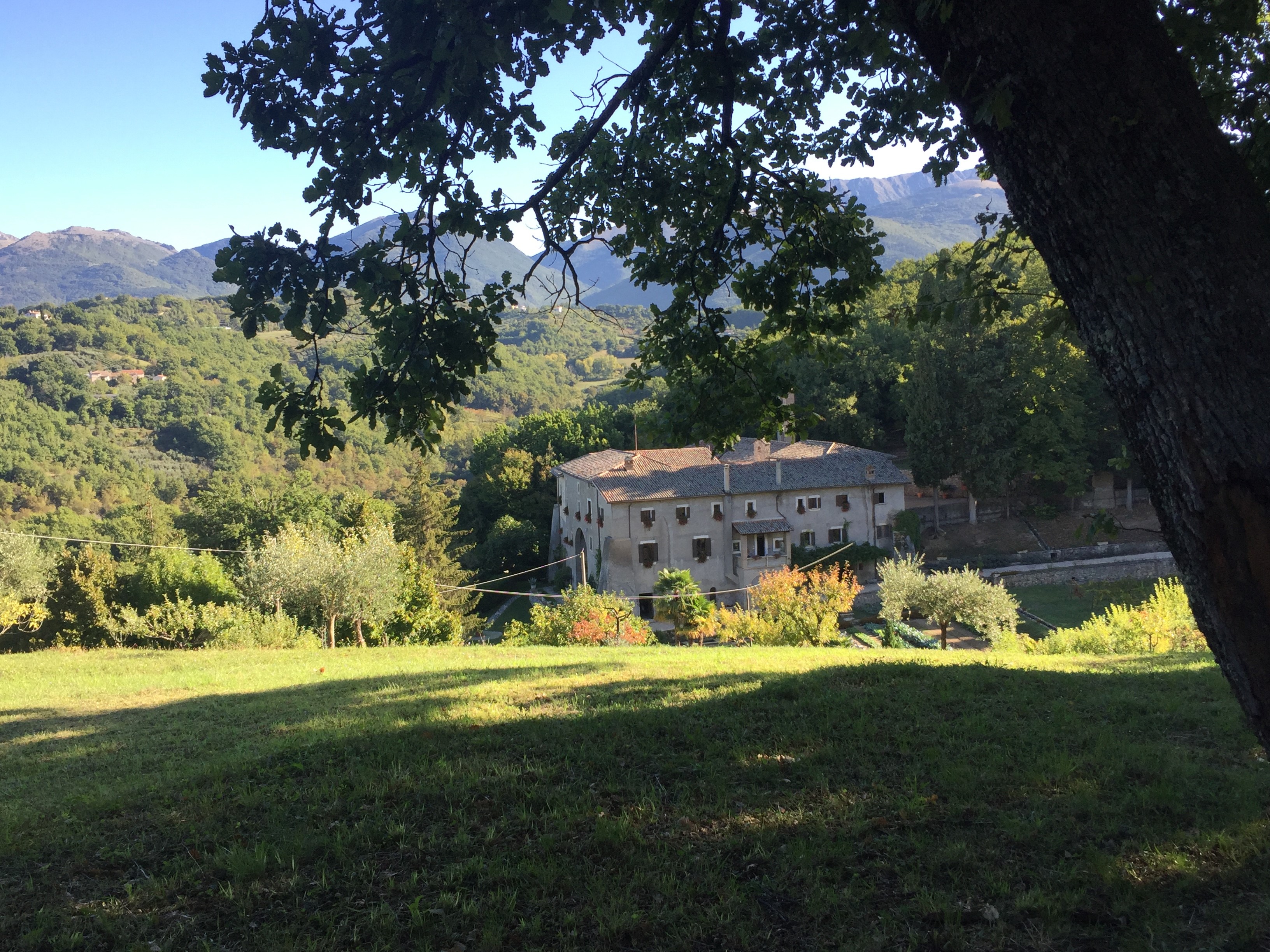
Santuario La Foresta
Only four kilometers outside of Rieti lies the Santuario La Foresta. After his eye surgery, St. Francis stayed at La Foresta in order to recover. Now it is part of the organization “Mondo X,” a place to help drug addicts, alcoholics, and gamblers to heal from their addiction. We met a person caring for the organic vegetable garden. He was full of praise for this place.
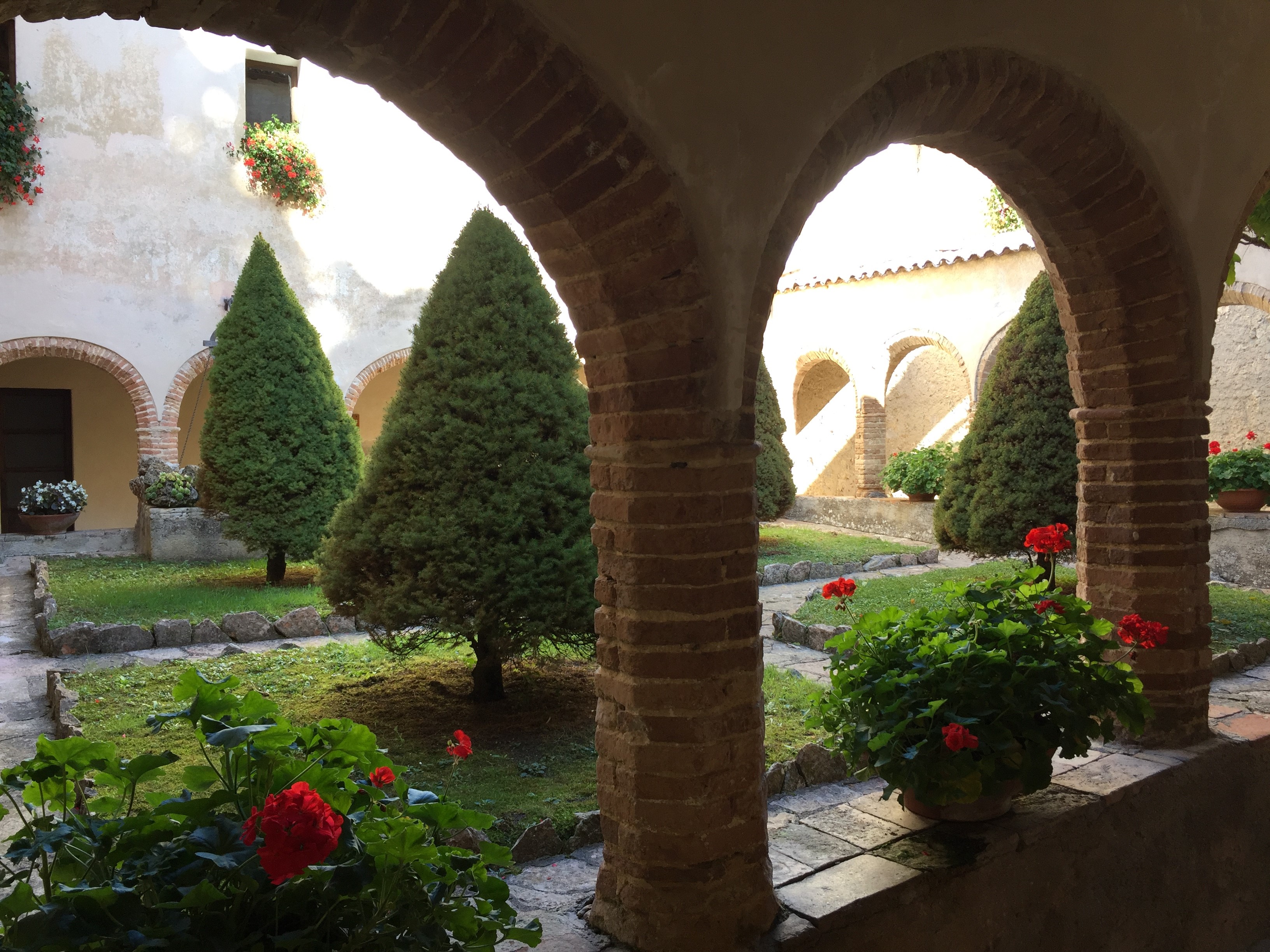
Cloister of La Foresta
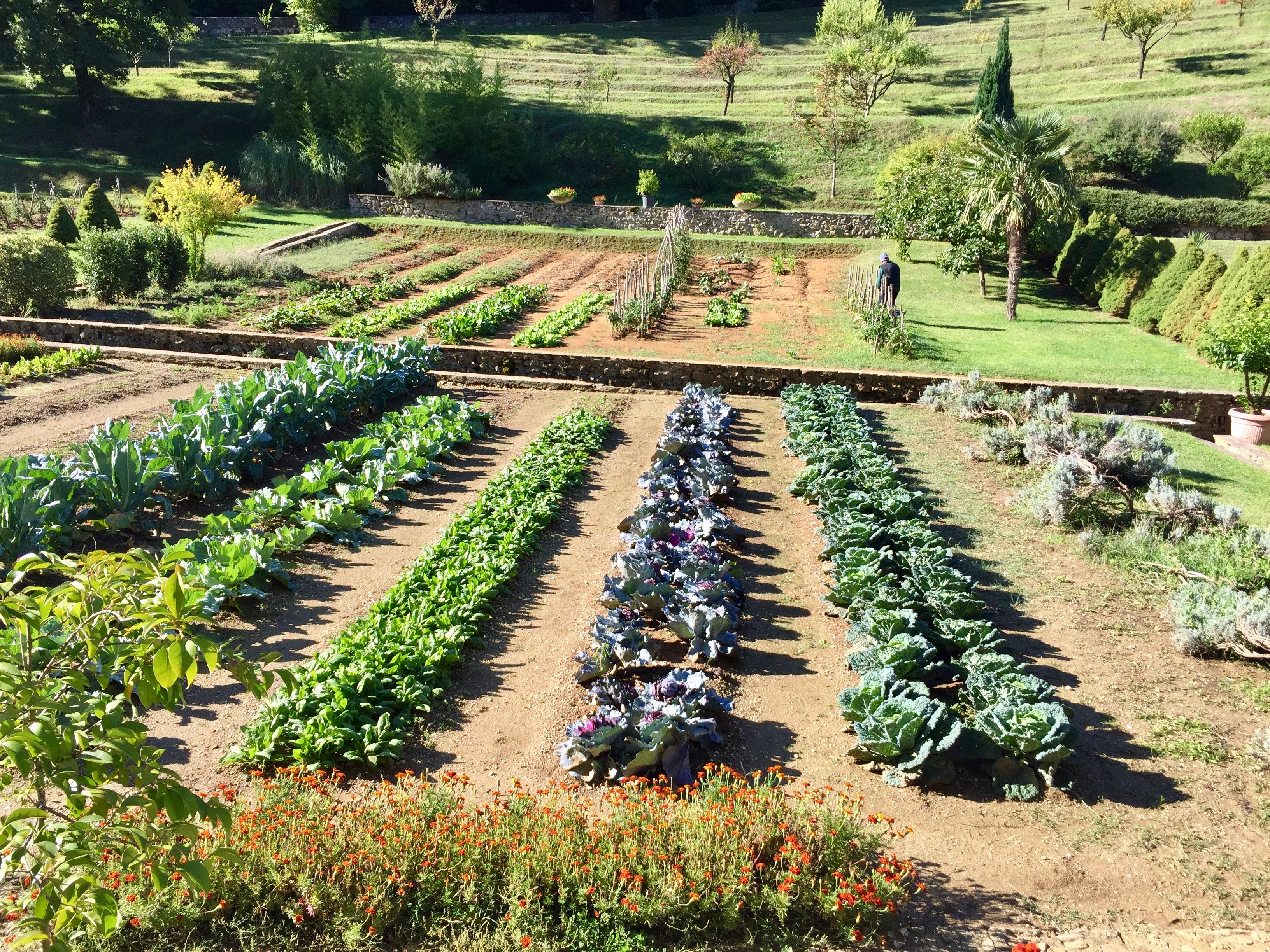
Organic garden
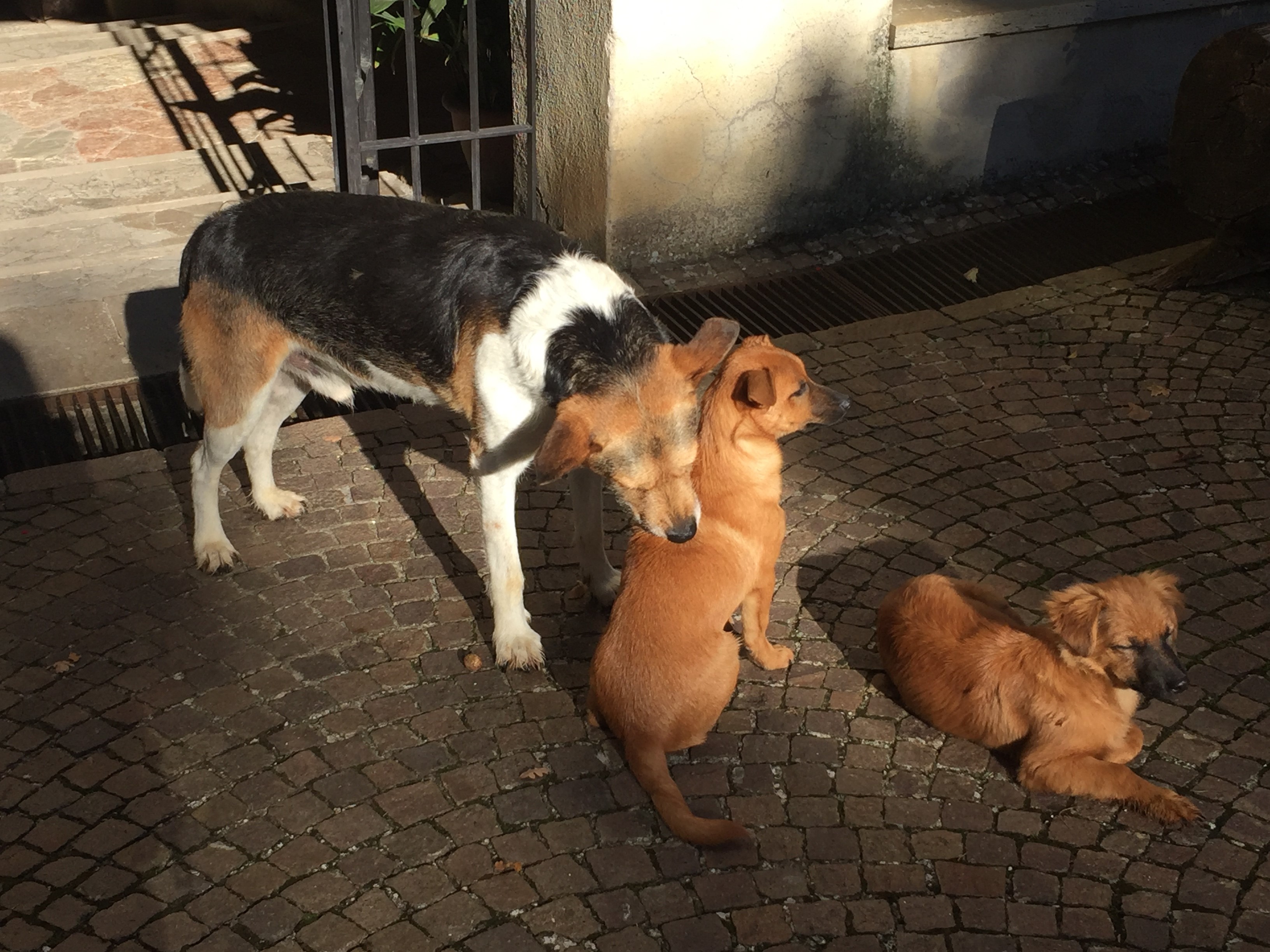
Five dogs and three cats also live in the Sanctuary of La Foresta. They are incredibly peaceful and loving to each other.
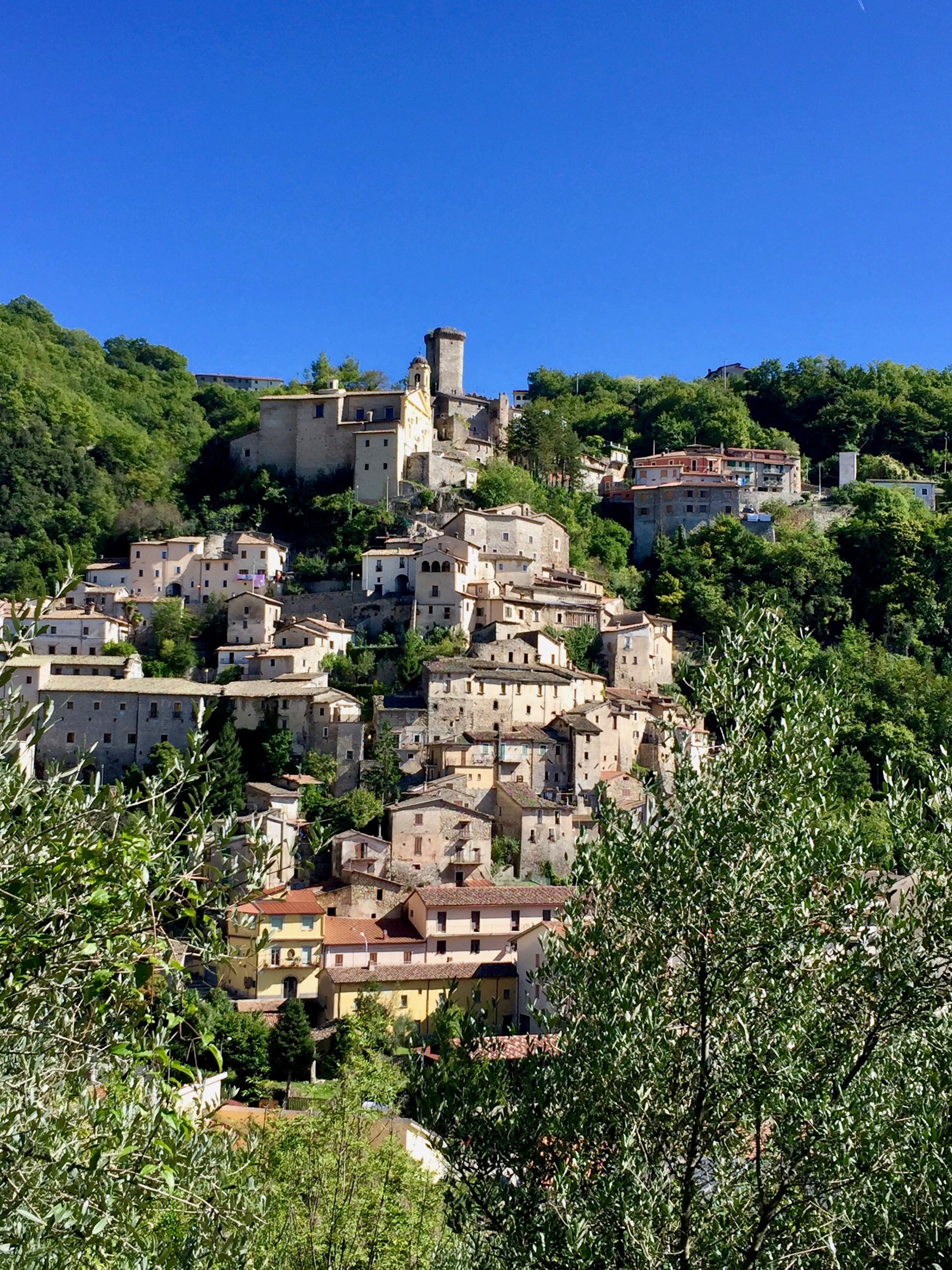
Cantalice
It was great to walk with Lorenz. We had so much to share and I was very happy that I did not have to look constantly for the Tau signs. I knew that he has good orientation. So we talked and walked up an absolutely gorgeous mountain path, stopping at one point to admire the Rieti valley down below and the Monte Garzano (2000 meters) in front of us. Now Lorenz looked at the guidebook and said, “Mutti, we missed a turn!” We had to go back! Suddenly we heard a car driving up the dirt road. The driver was looking for his cows. He told us a shortcut that would save us a lot of time.
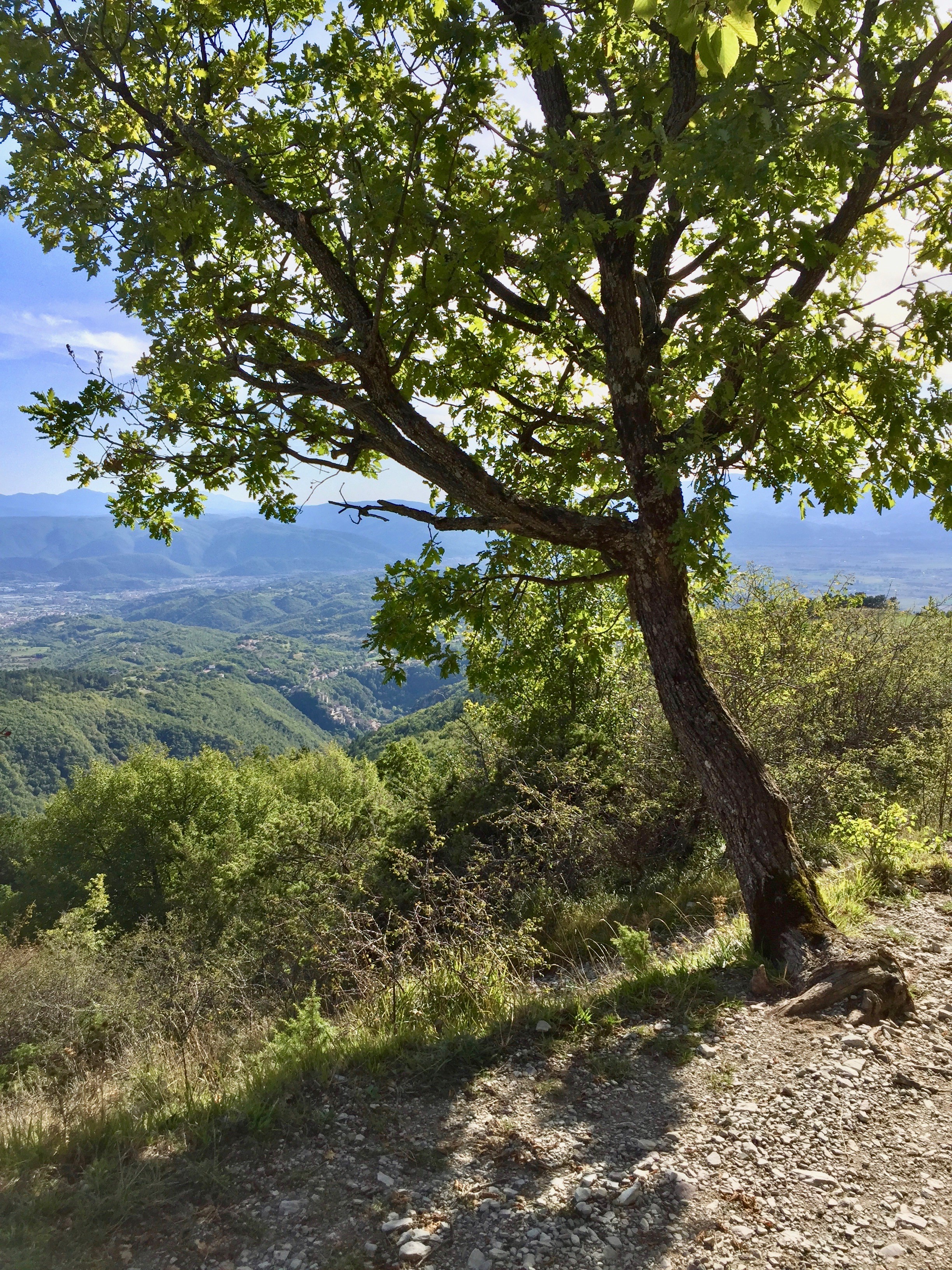
Beautiful, but the wrong way
In order to take the shortcut, we had to pass a private property (Agriturism Poeta). We were so lucky that there were no dogs. However, we came to a six-foot-high locked gate and had to climb over the wall to get to the other side. I was so happy that Lorenz was there to help.
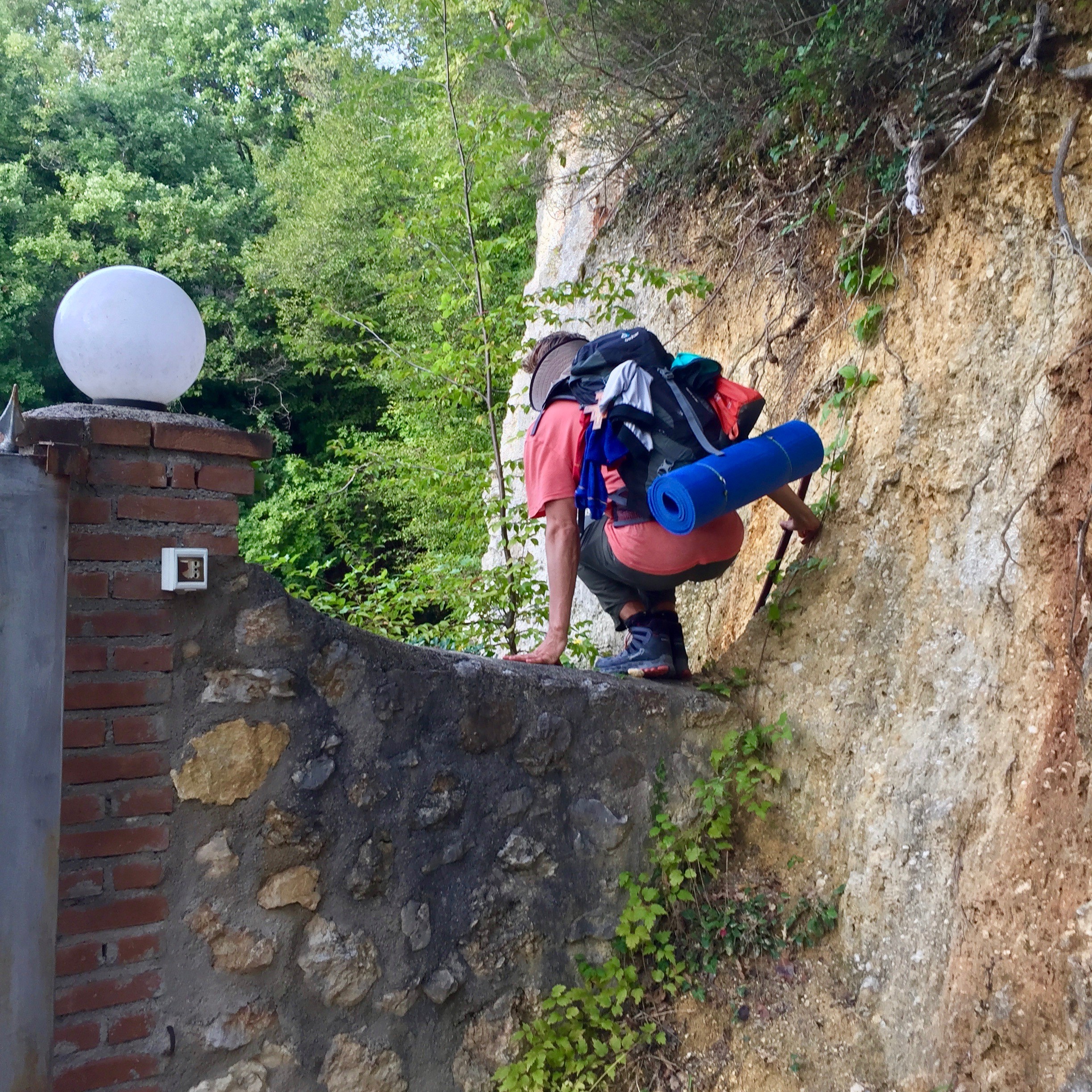
Gate of Agriturism Poeta
We arrived in Poggio Bostone in the late afternoon. Lorenz and I stayed in the dormitory of the monastery San Giacomo, a bit outside of Poggio Bostone. This place is also connected with St. Francis. From here, he sent his first followers as wandering monks out into the world (1208).
It was too late to go up to Sacro Speco, the favorite place of St. Francis. We decided to walk there early in the morning in order to catch the public bus back to Assisi.
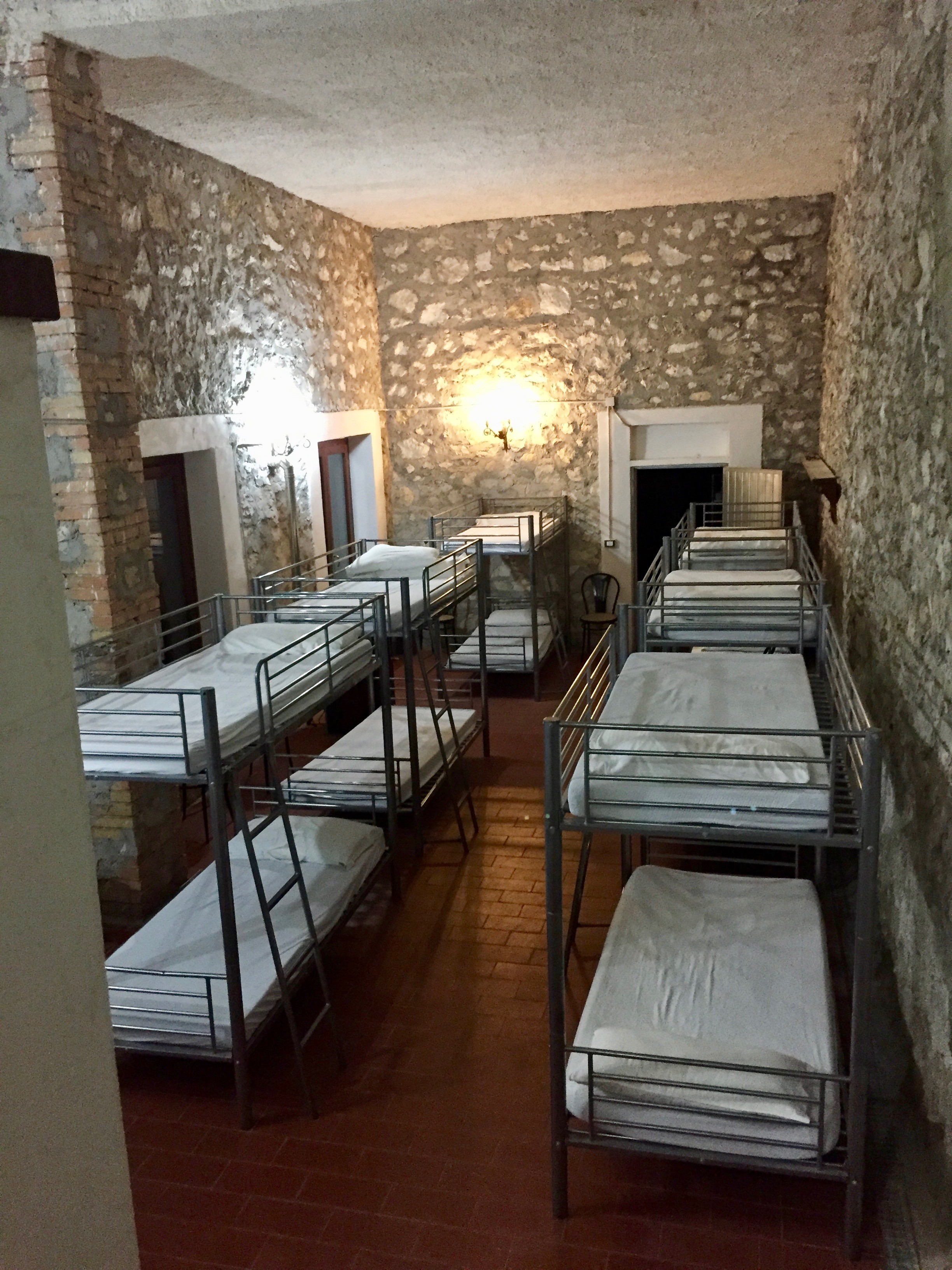
Dormitory of San Giacomo
I was still dark when we hiked up the mountain. Except for the howl of an owl, everything was incredibly quiet. After walking for half an hour, we saw the tiny stone chapel nestled underneath a powerful rock. We entered. To our surprise, the chapel was filled with warm candlelight. The candles were lit the day before, on October 4. On that day, St. Francis died 805 years ago.
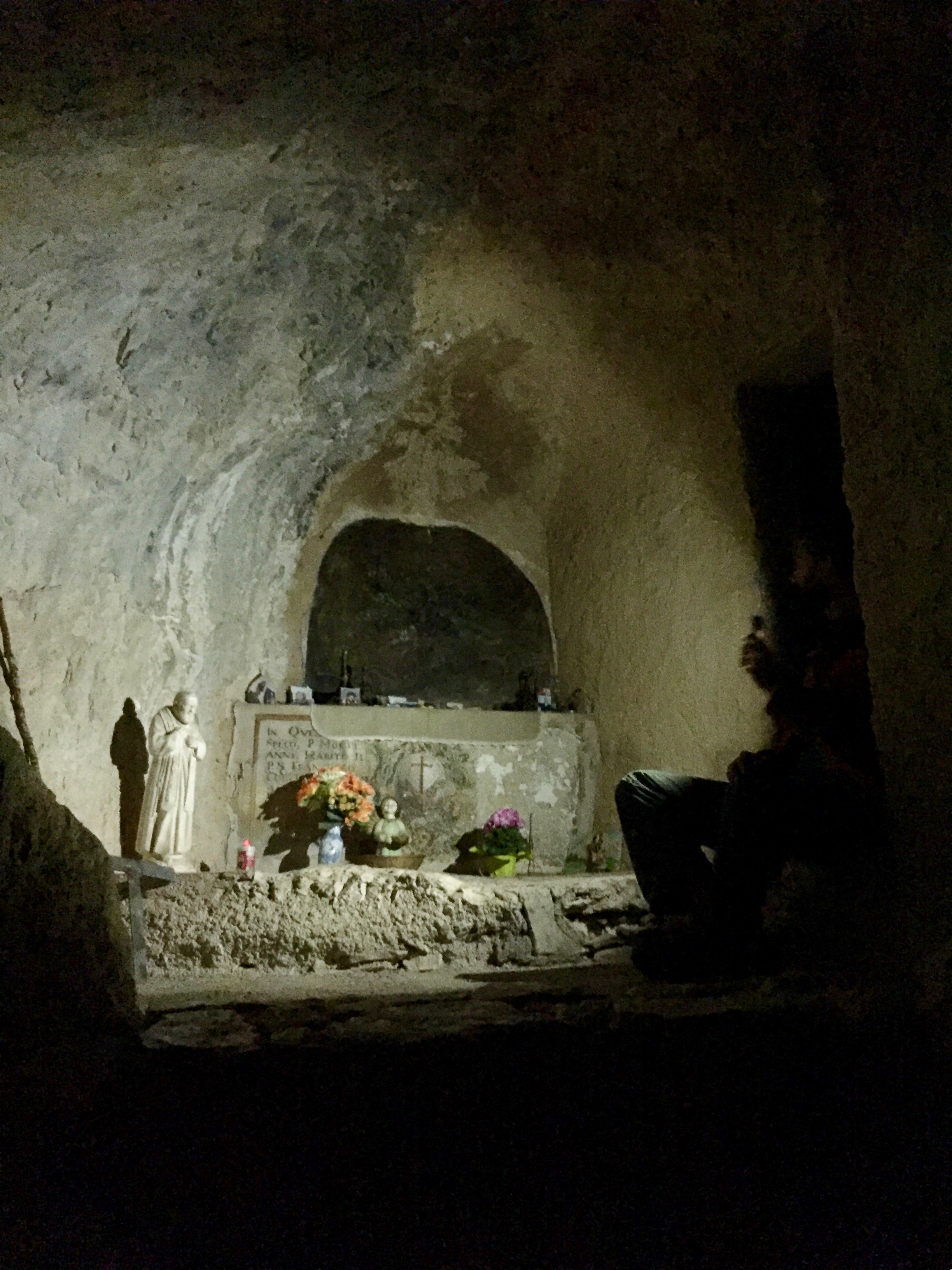
Chapel
In this hermitage, St. Francis had a mystical experience. He felt hopeless, full of self-doubt and depressed because of the many mistakes he thought he had made in the past. He faced huge responsibilities and did not see any way to carry them out. At this moment of great despair, in the deepest moment of darkness, it is reported that light came through the thick walls of the chapel and illuminated his heart with love and joy. He realized that there was something much larger than himself. He called it the loving heart of God. I would say he realized the loving awareness of Non-Self.
After a long time of silence, soaking in this wonderful atmosphere of warm candlelight and stillness, Lorenz and I went to the bell tower and rang the bell. This is the traditional way to end the pilgrimage. We gave thanks for everything we received on our pilgrimage and asked for peace in the world.
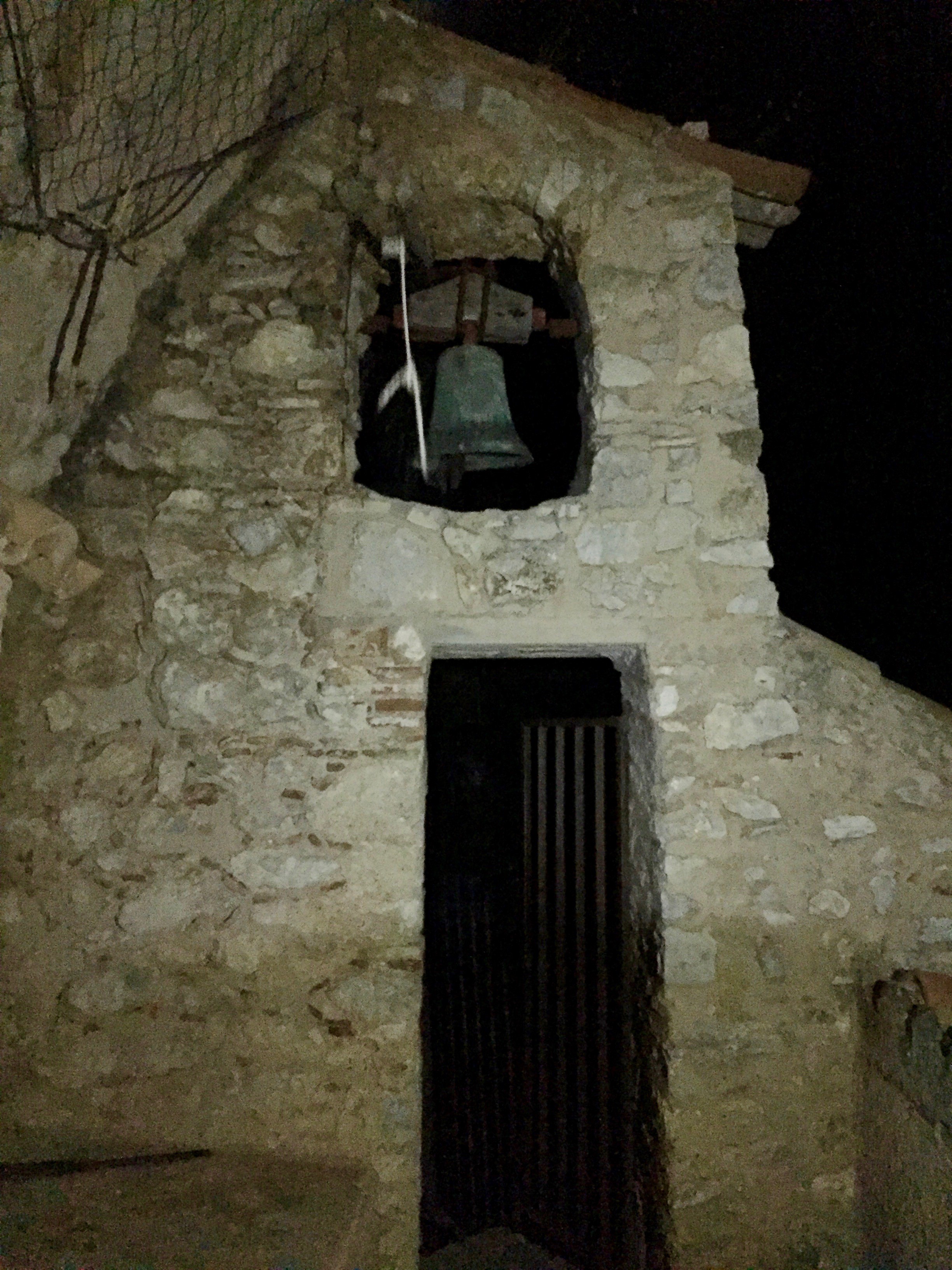
With the ringing of the bell, I also want to thank you for walking with me on the Camino Francisco and wish you, on your journey through life, an abundance of joy and happiness.
Gassho,
Garyo
Peace is every step
The shining red sun is my heart
Each flower smiles with me
How green, how fresh all that grows
How cool the wind blows
Peace is every step
It turns the endless path to joy
Thich Nhat Hanh
